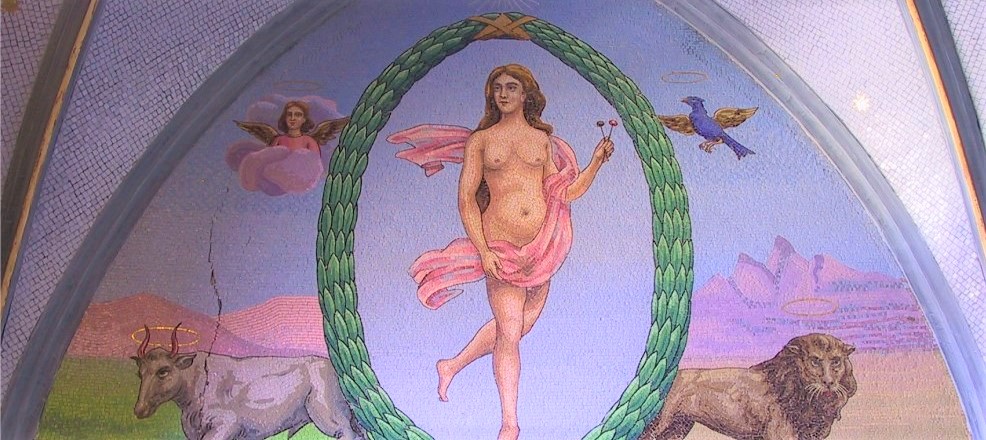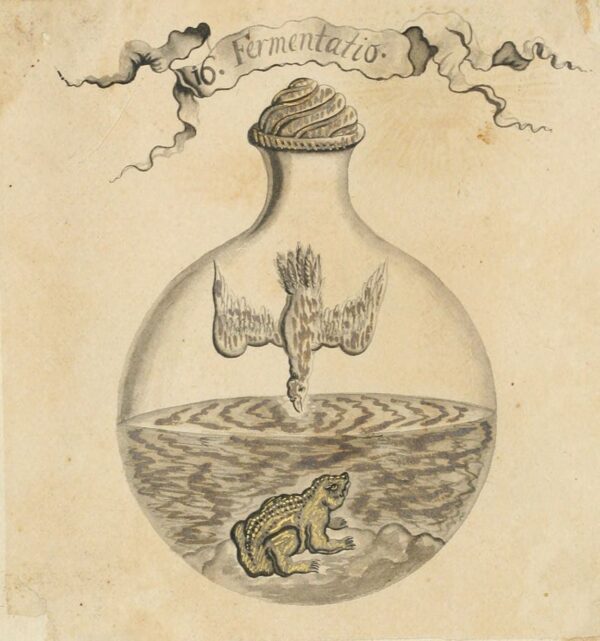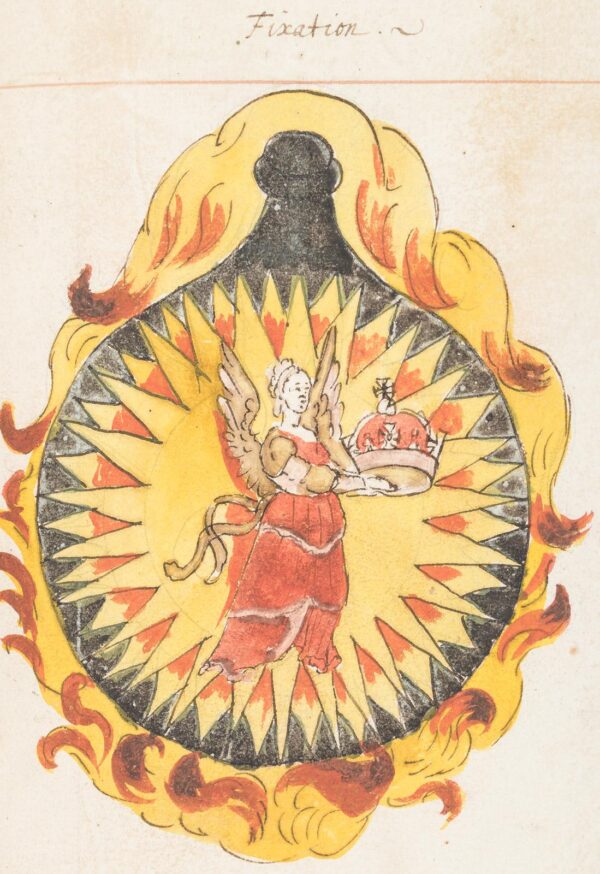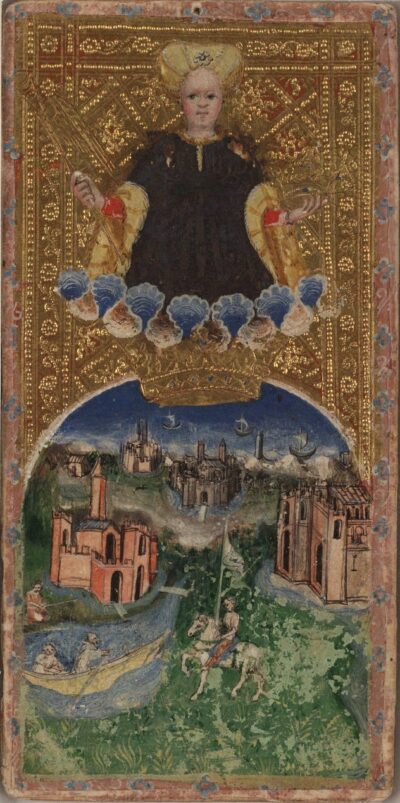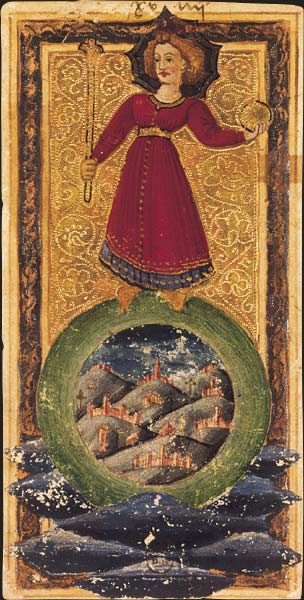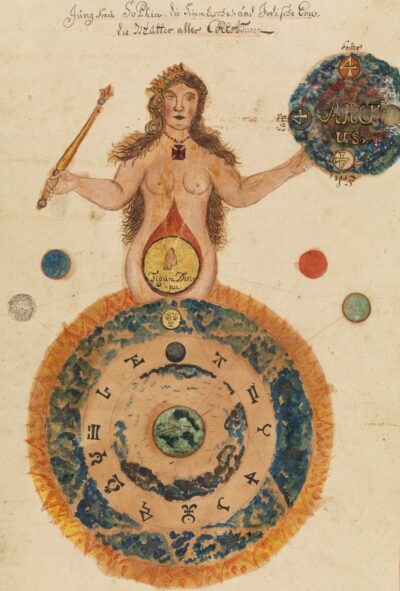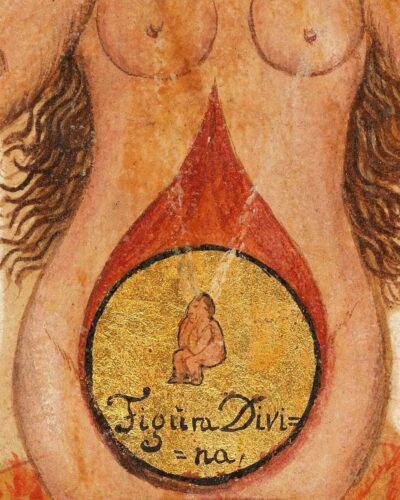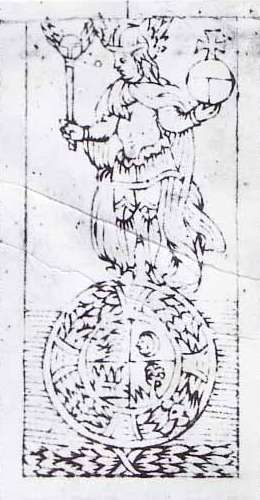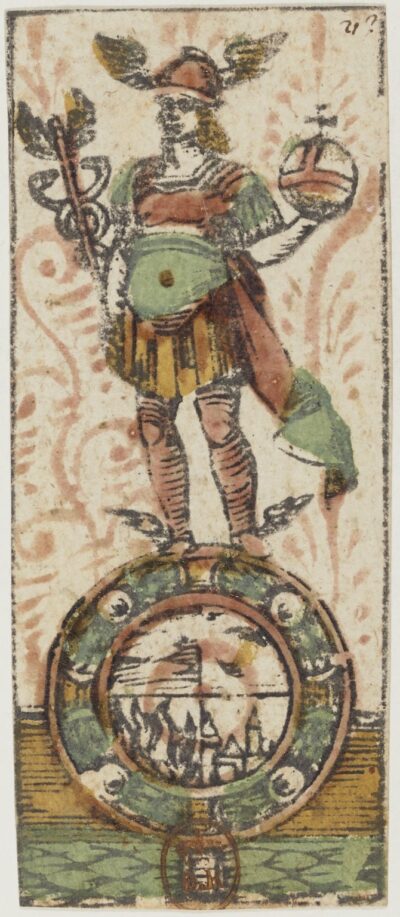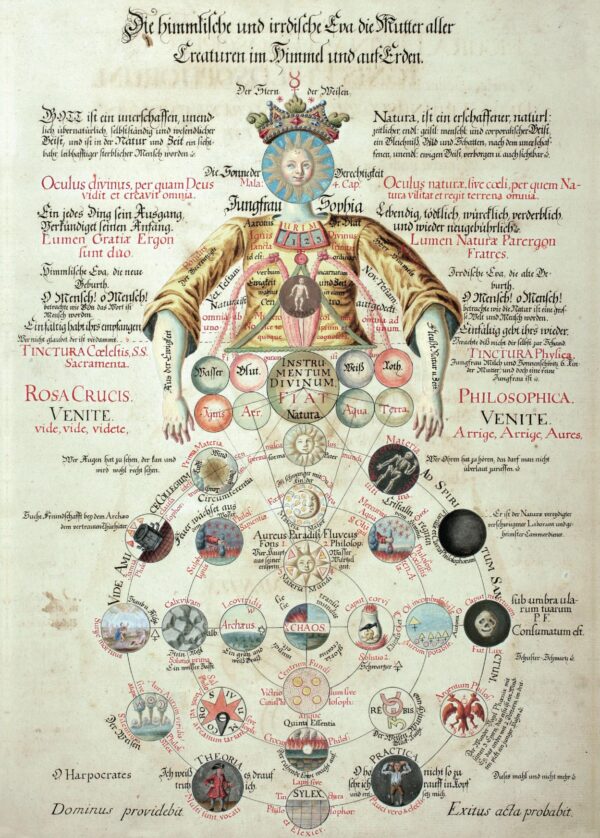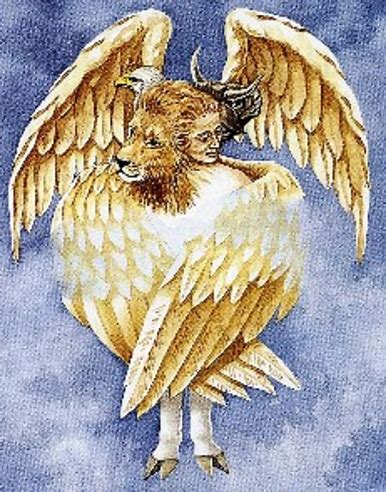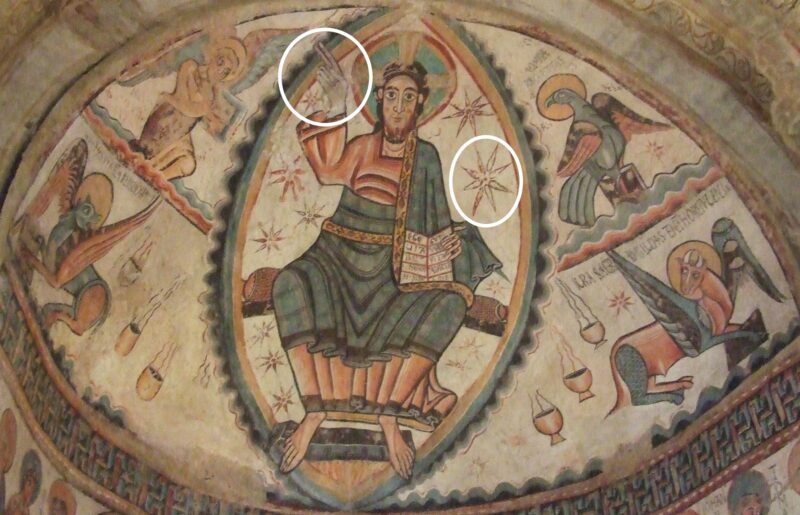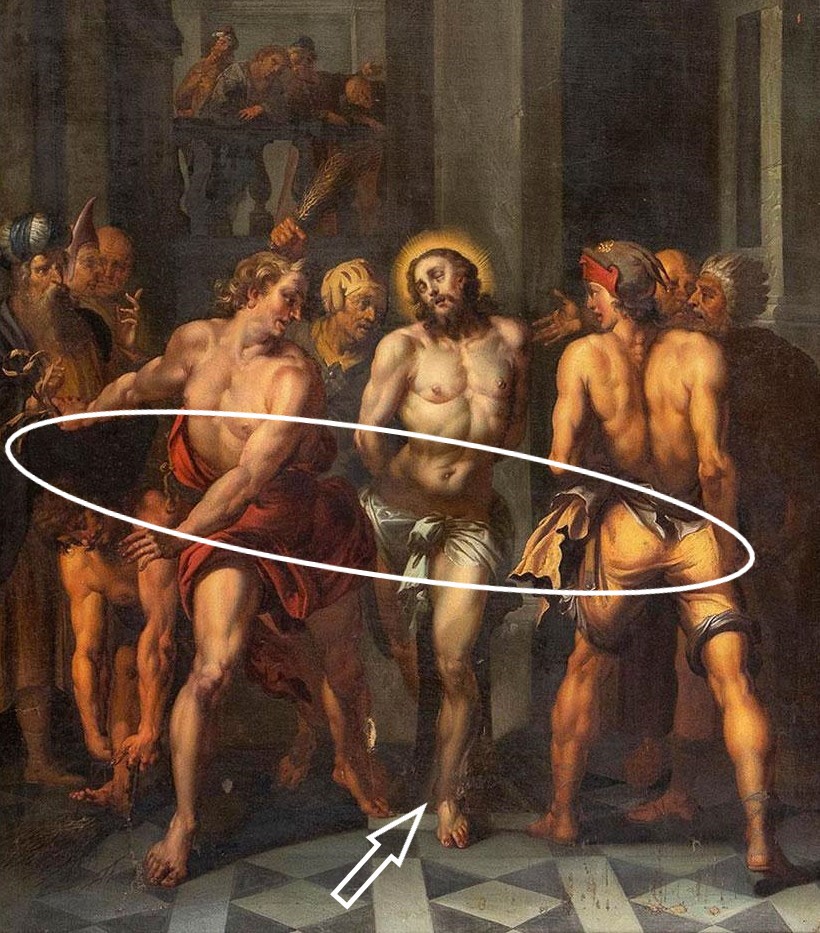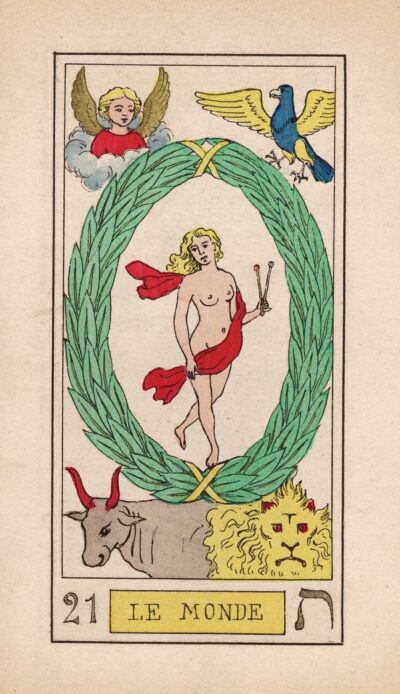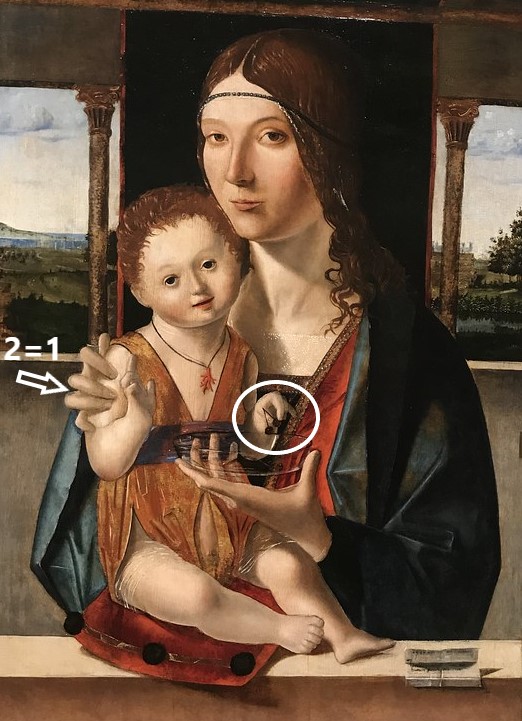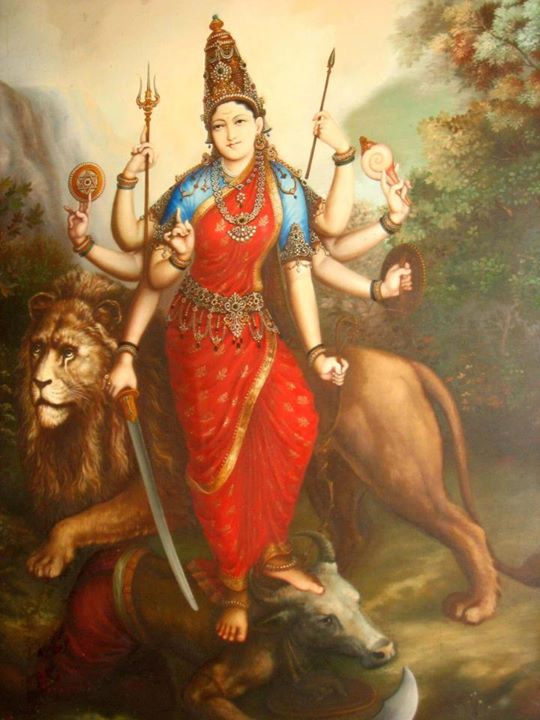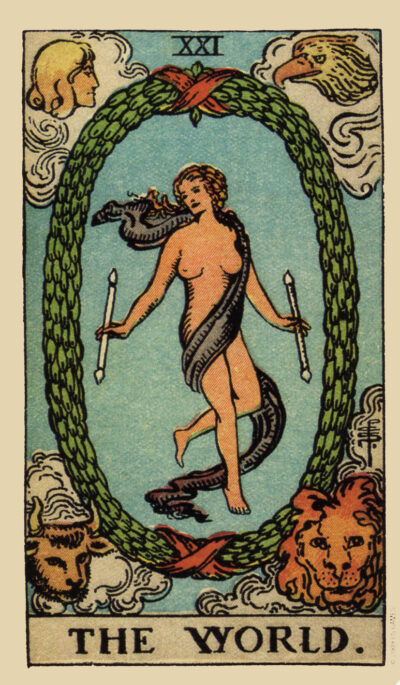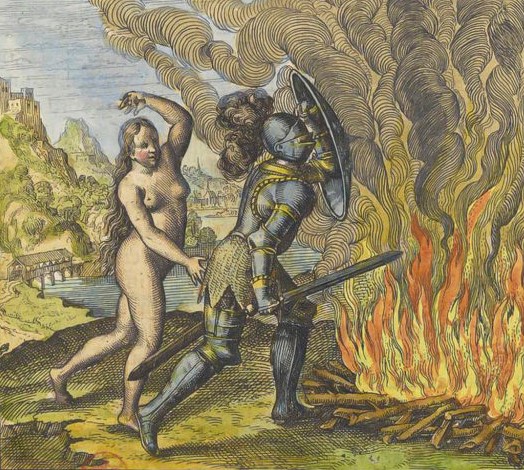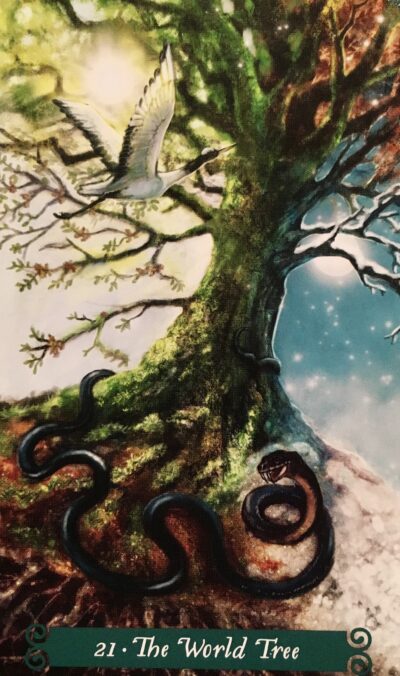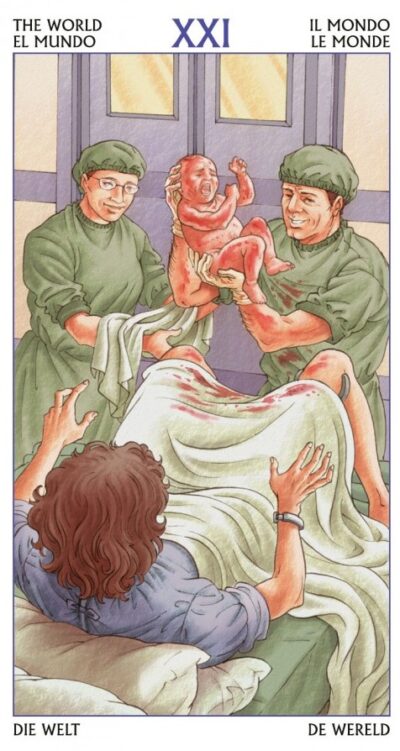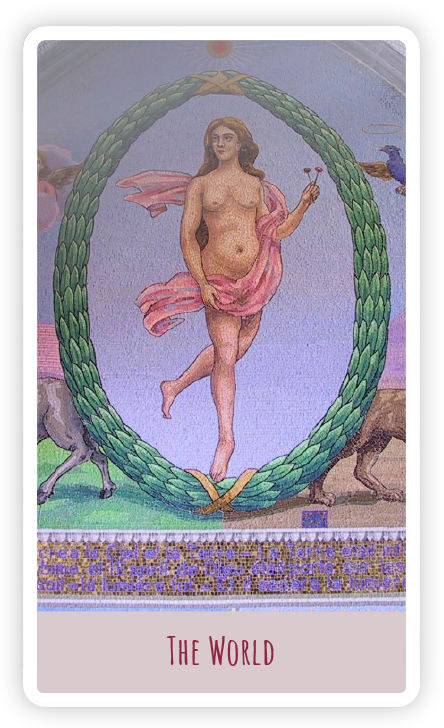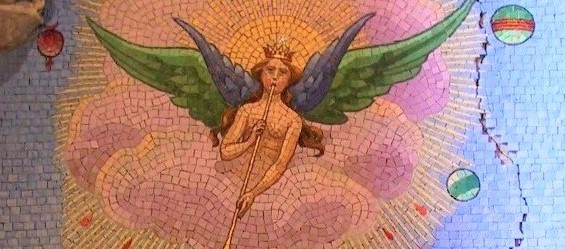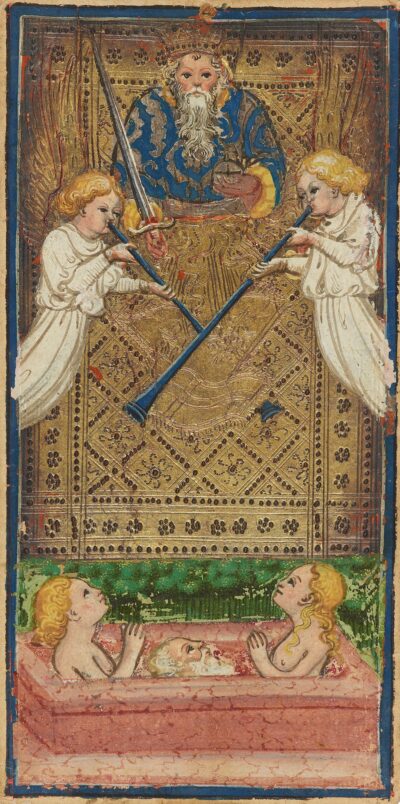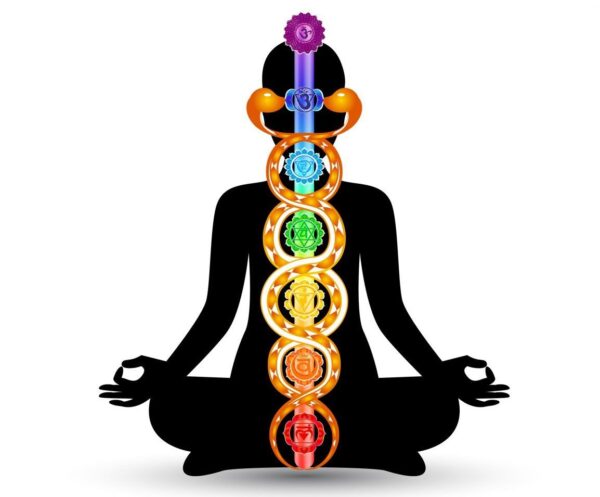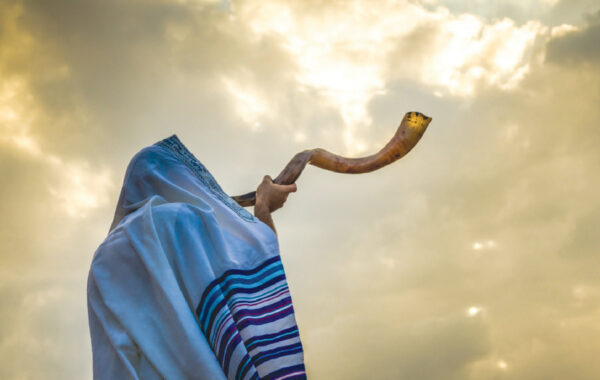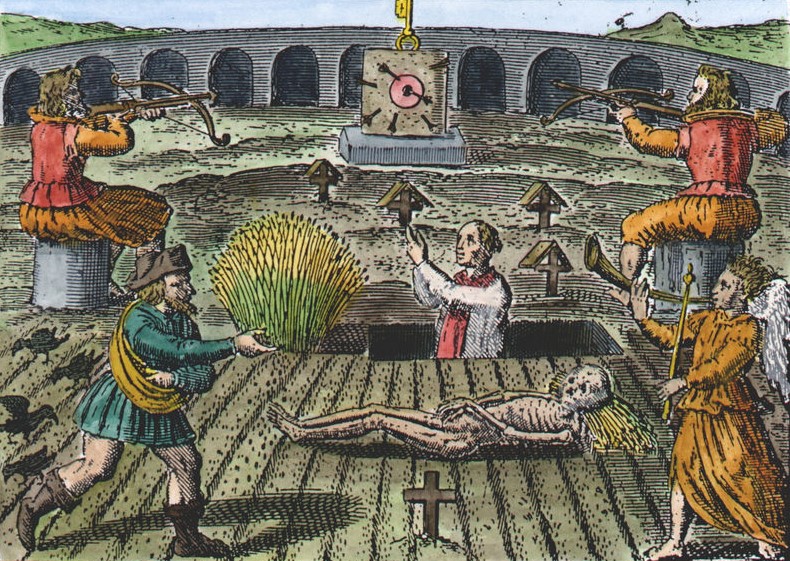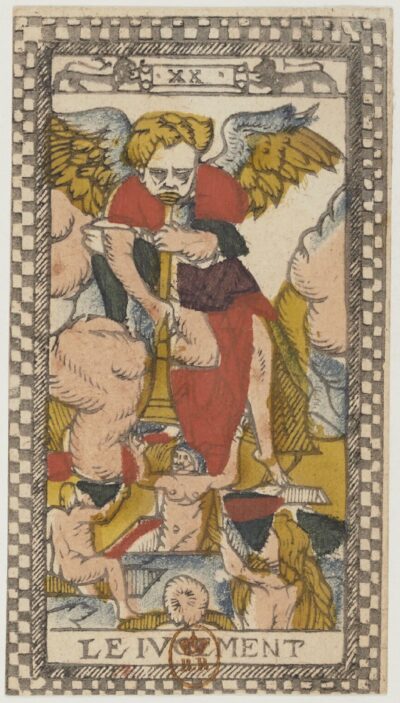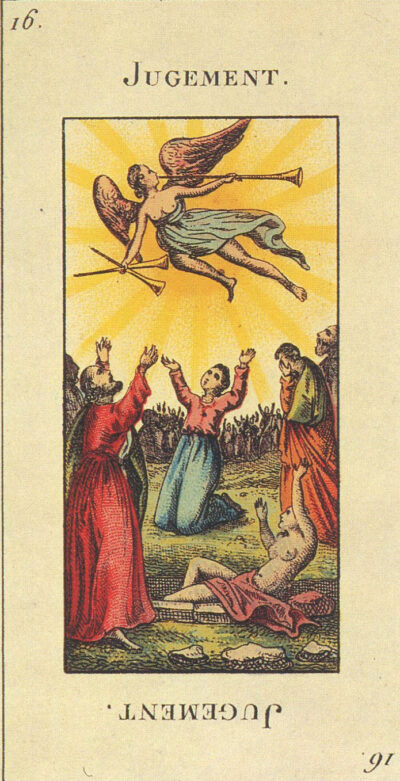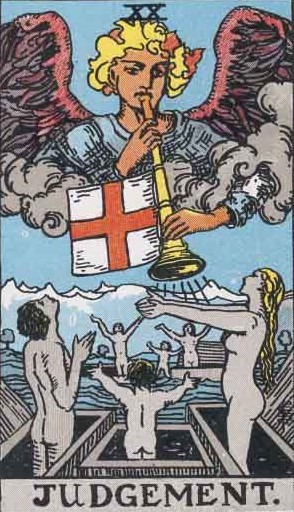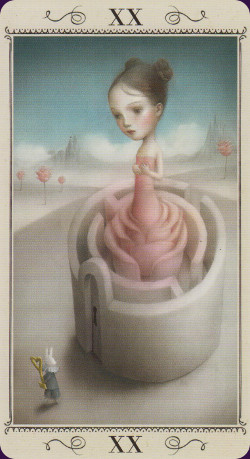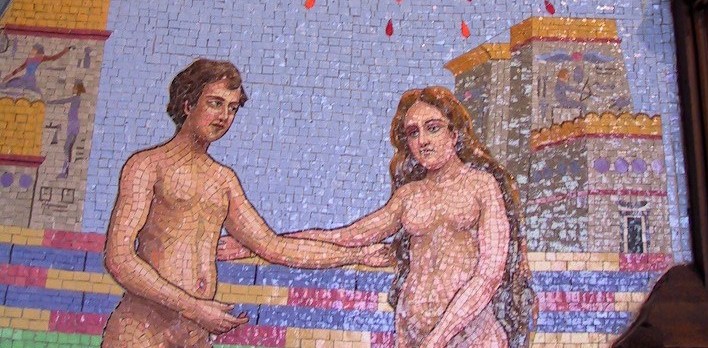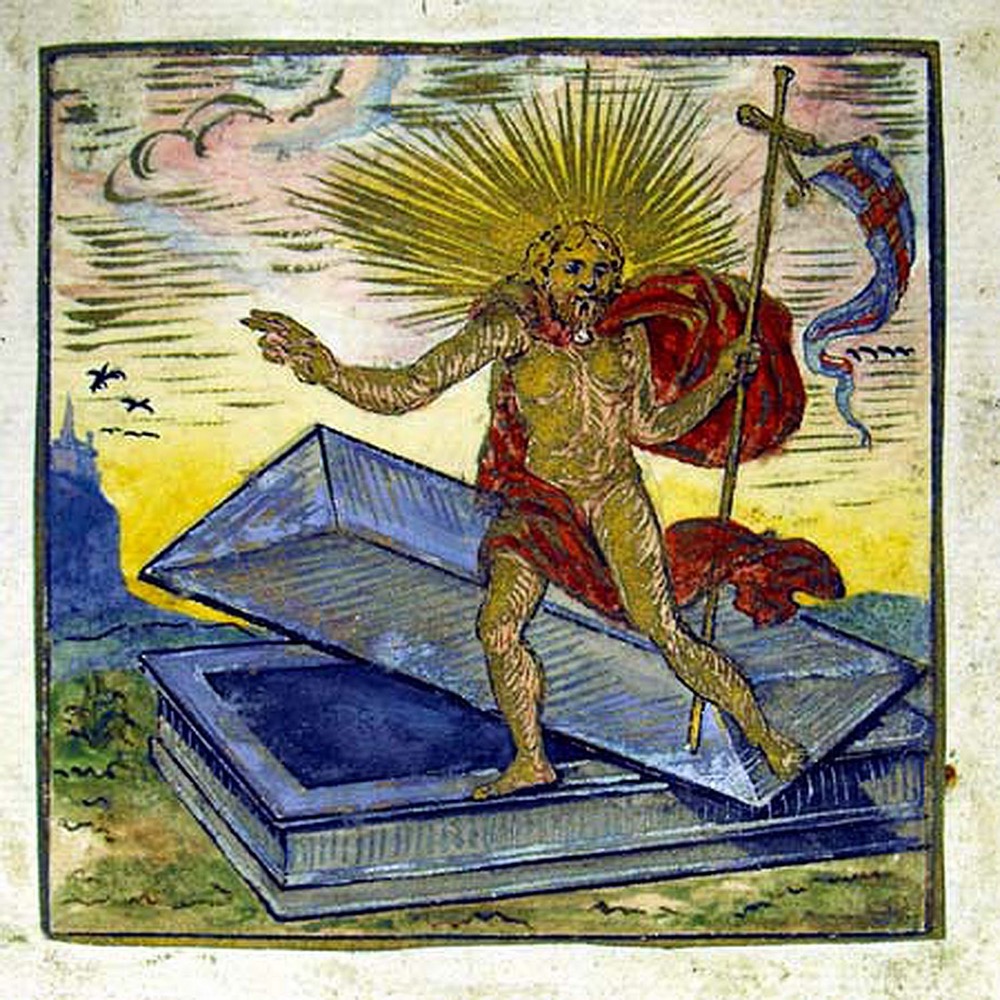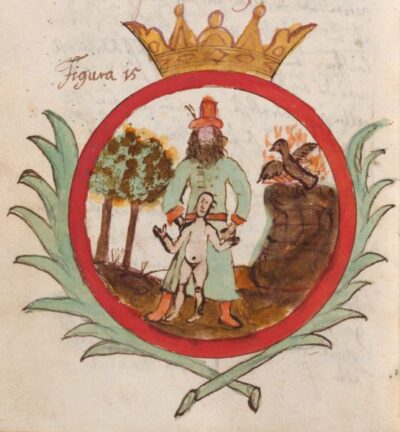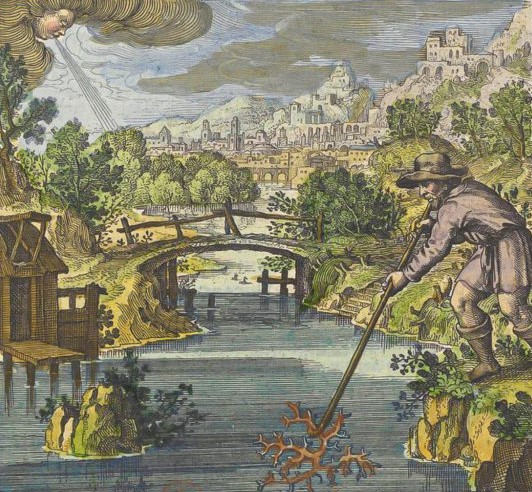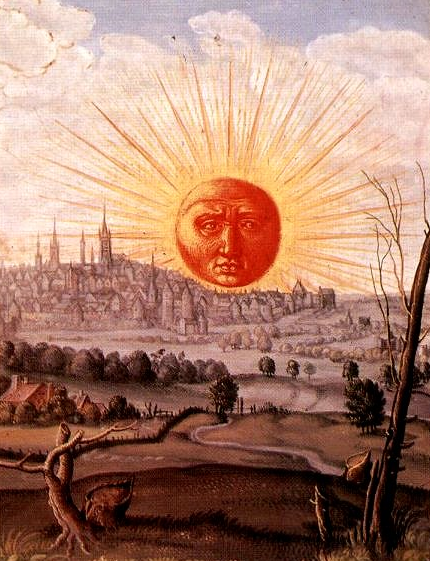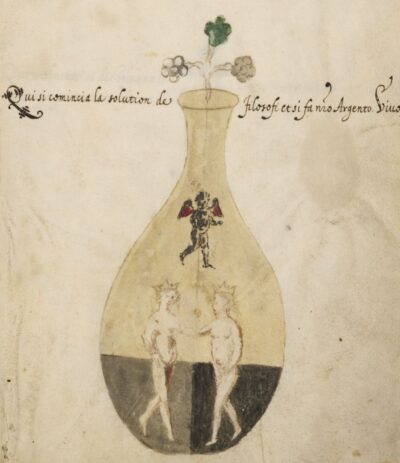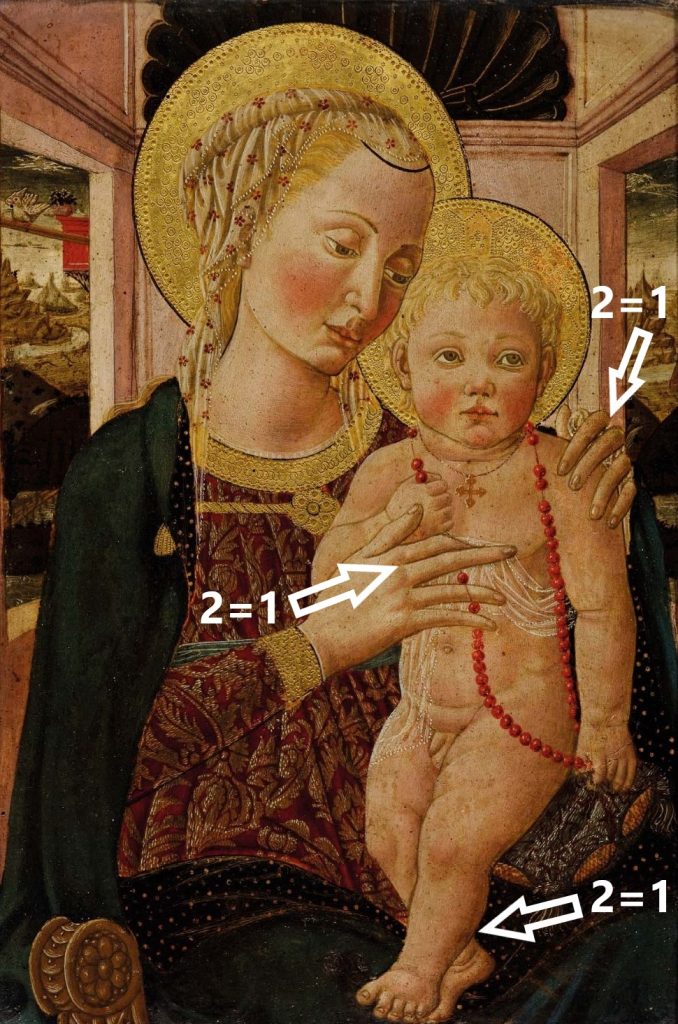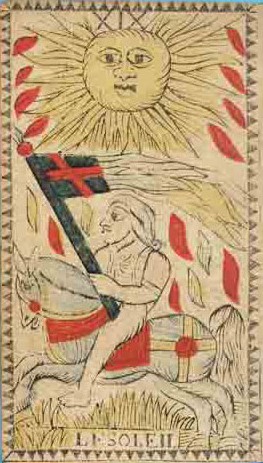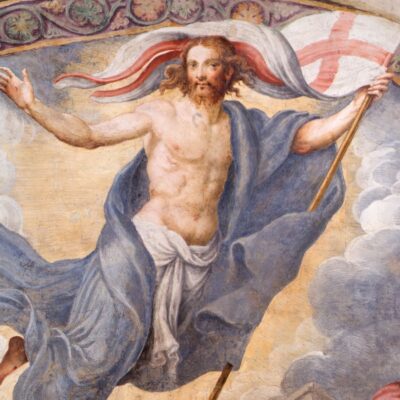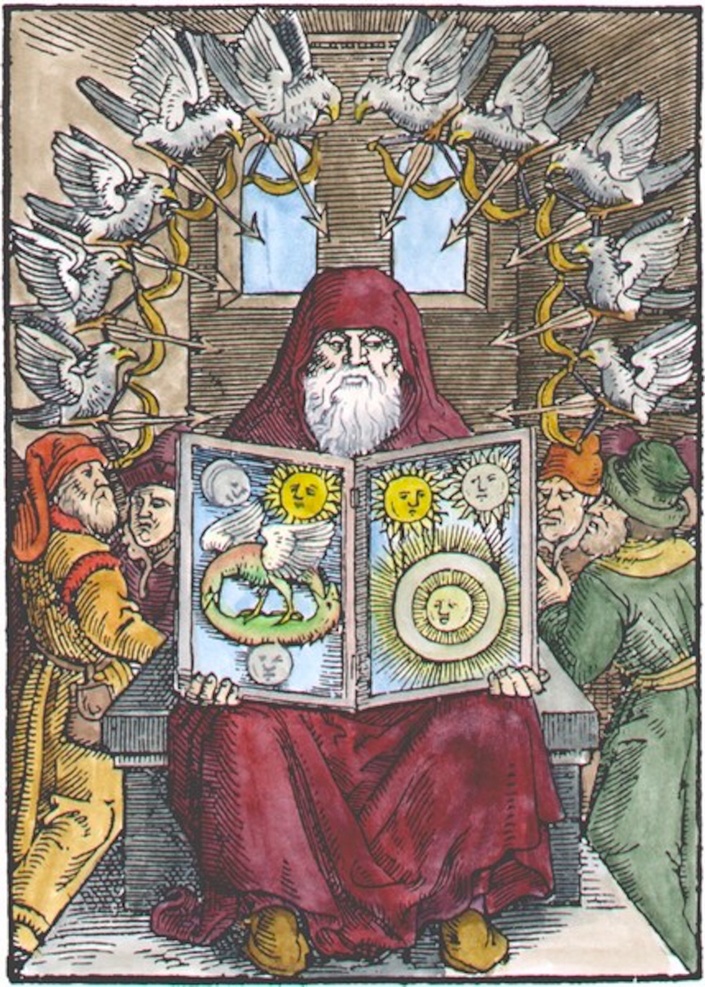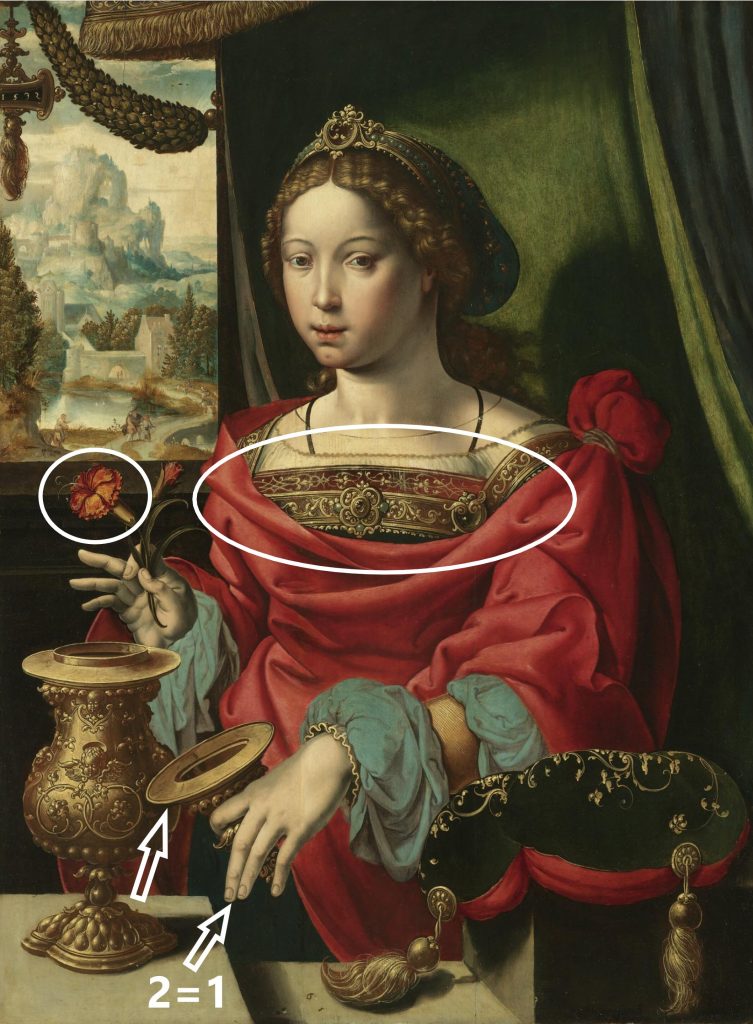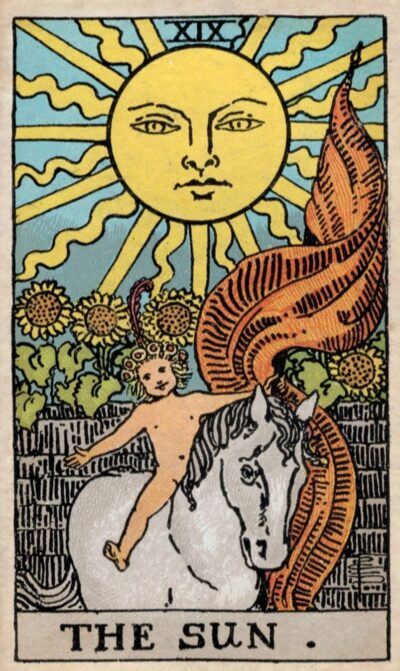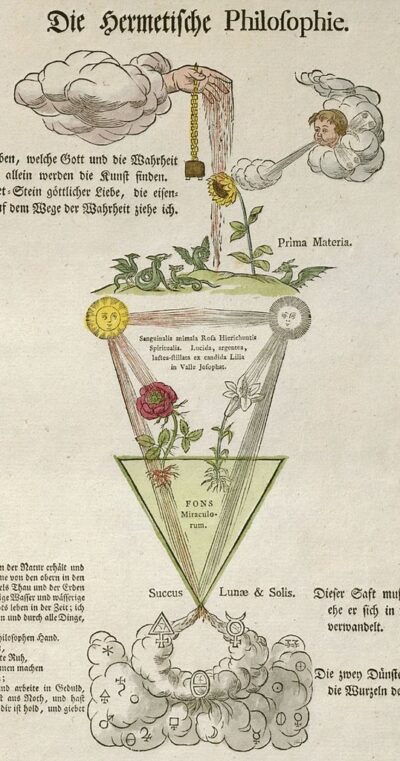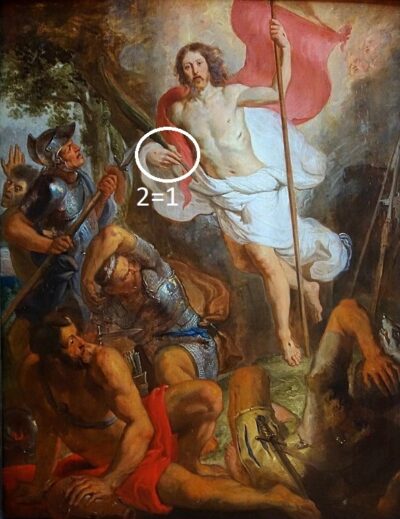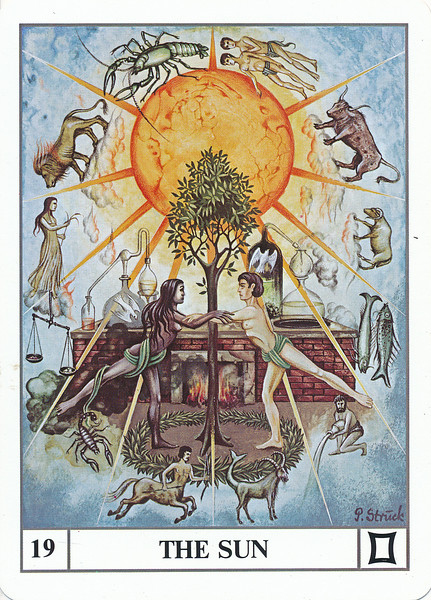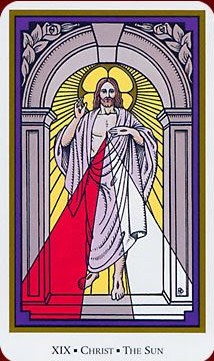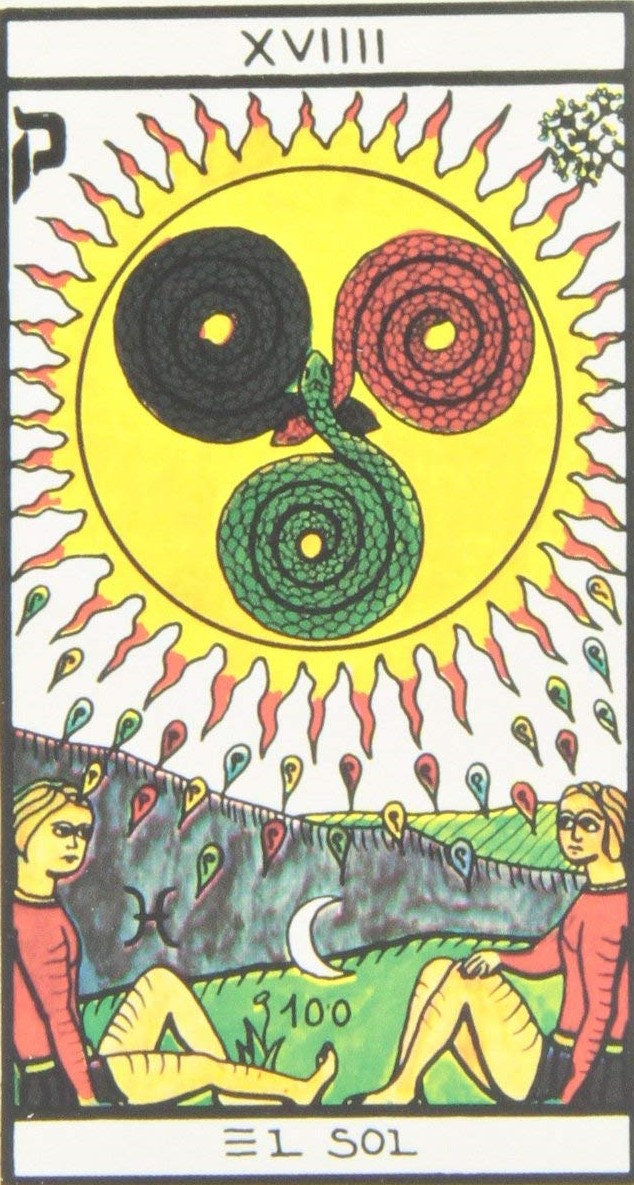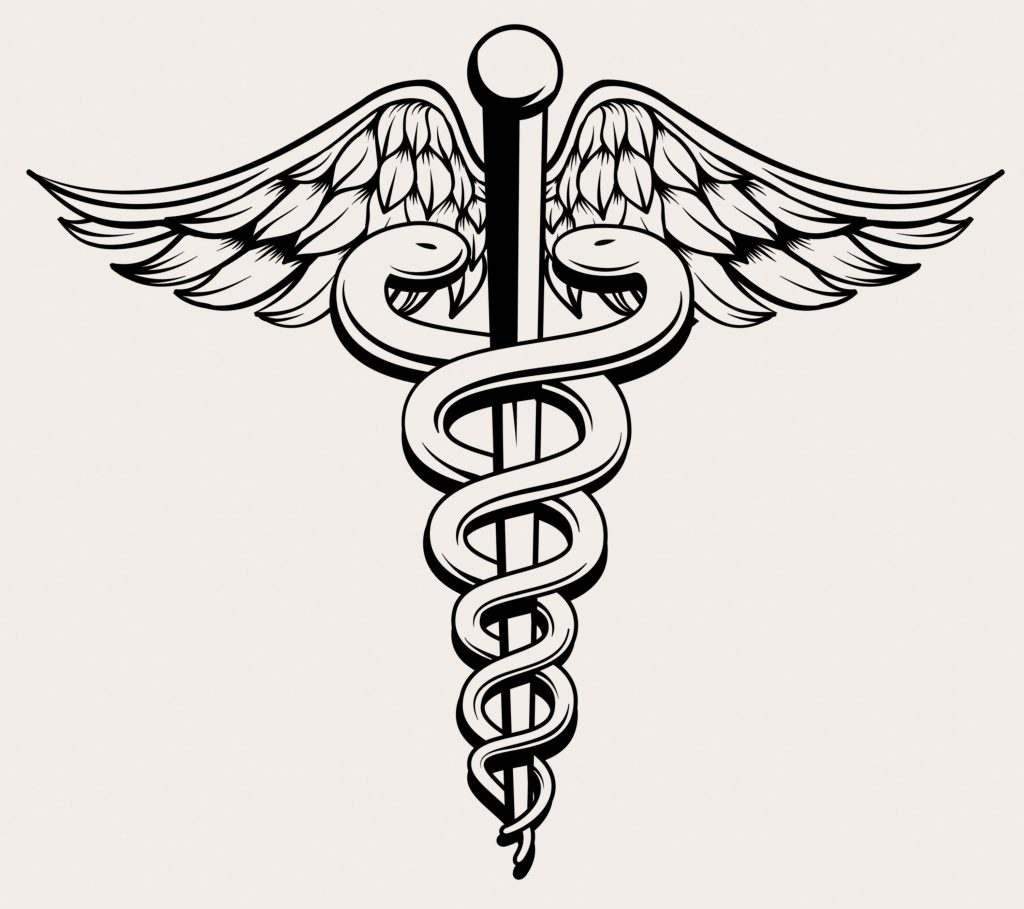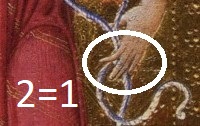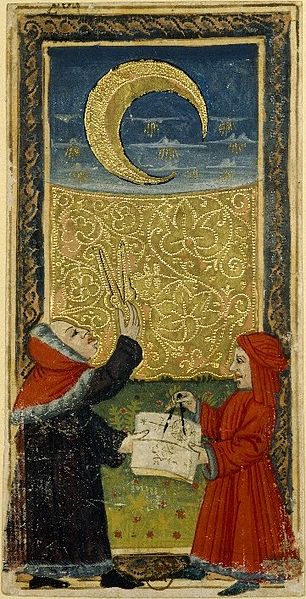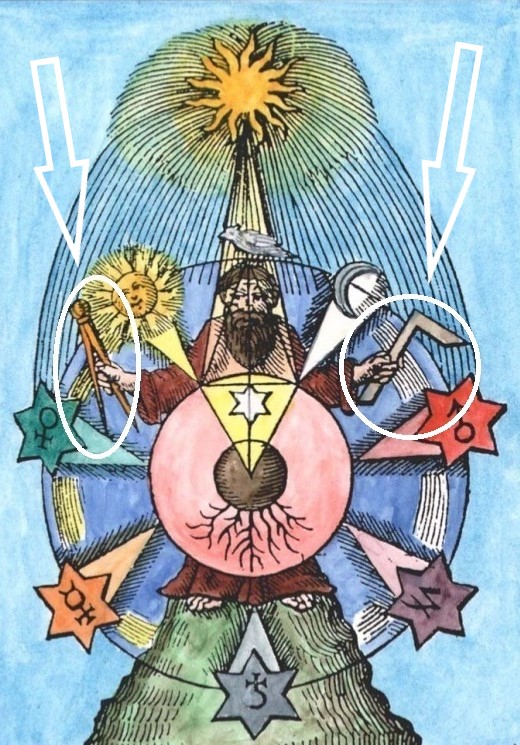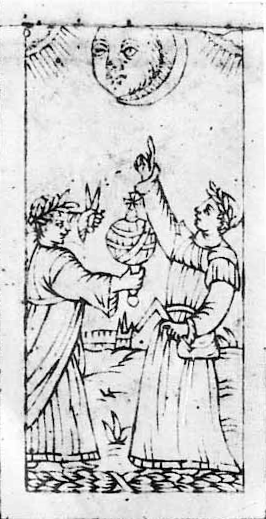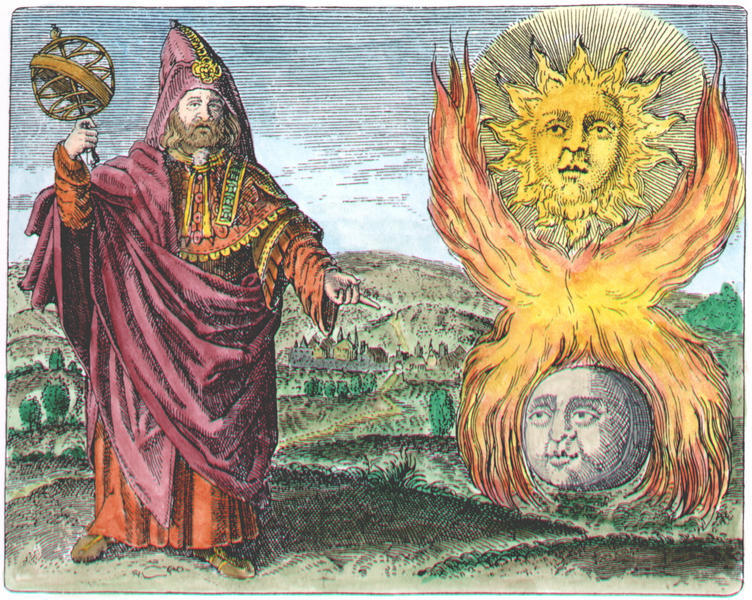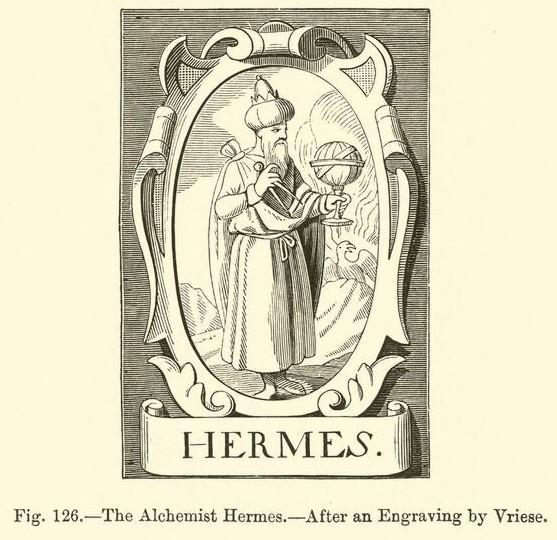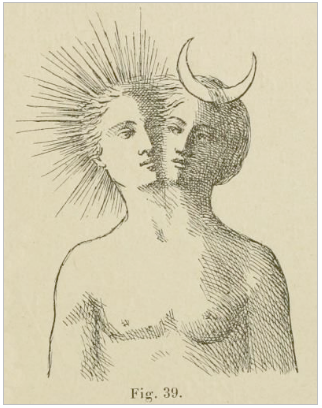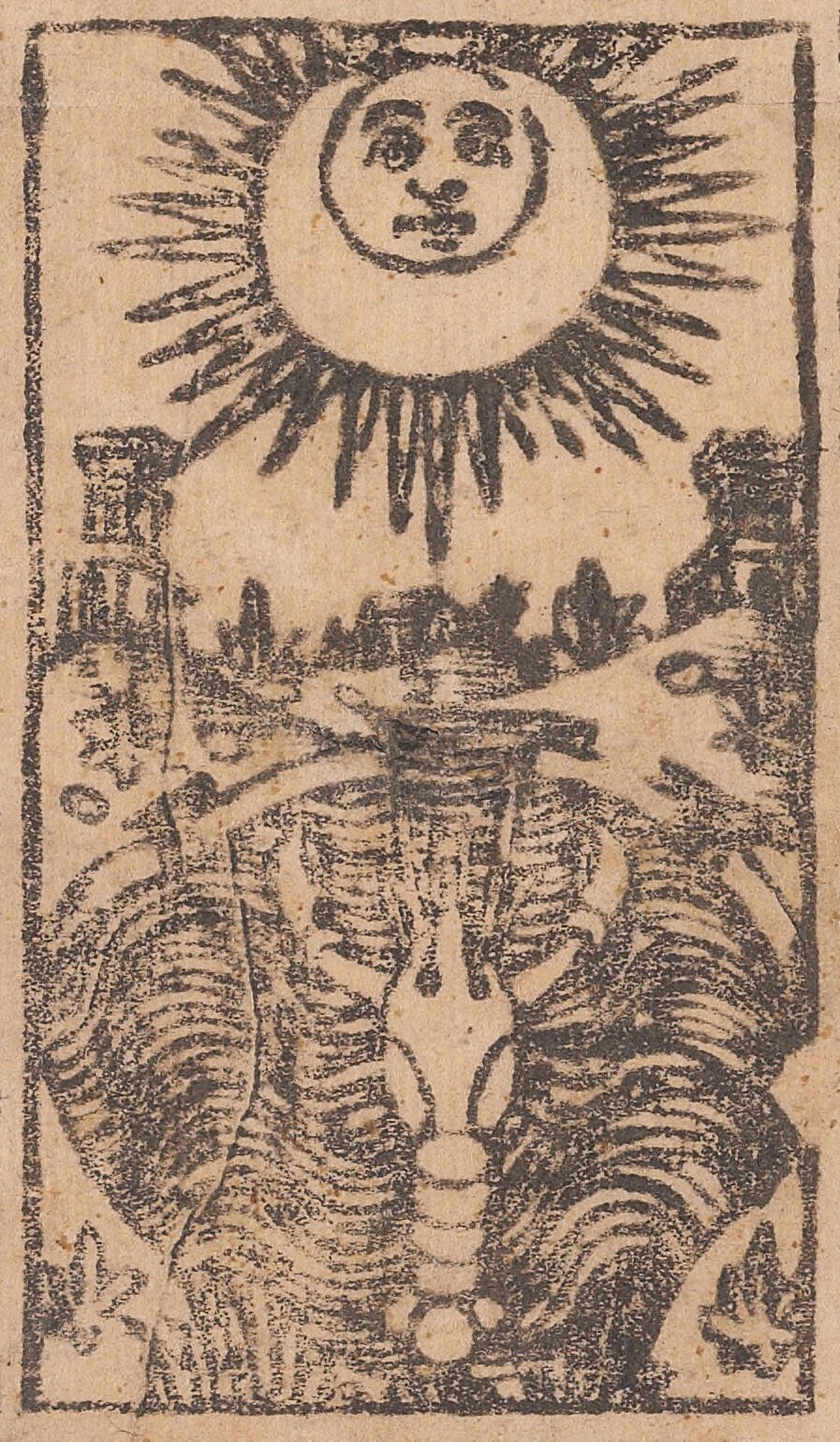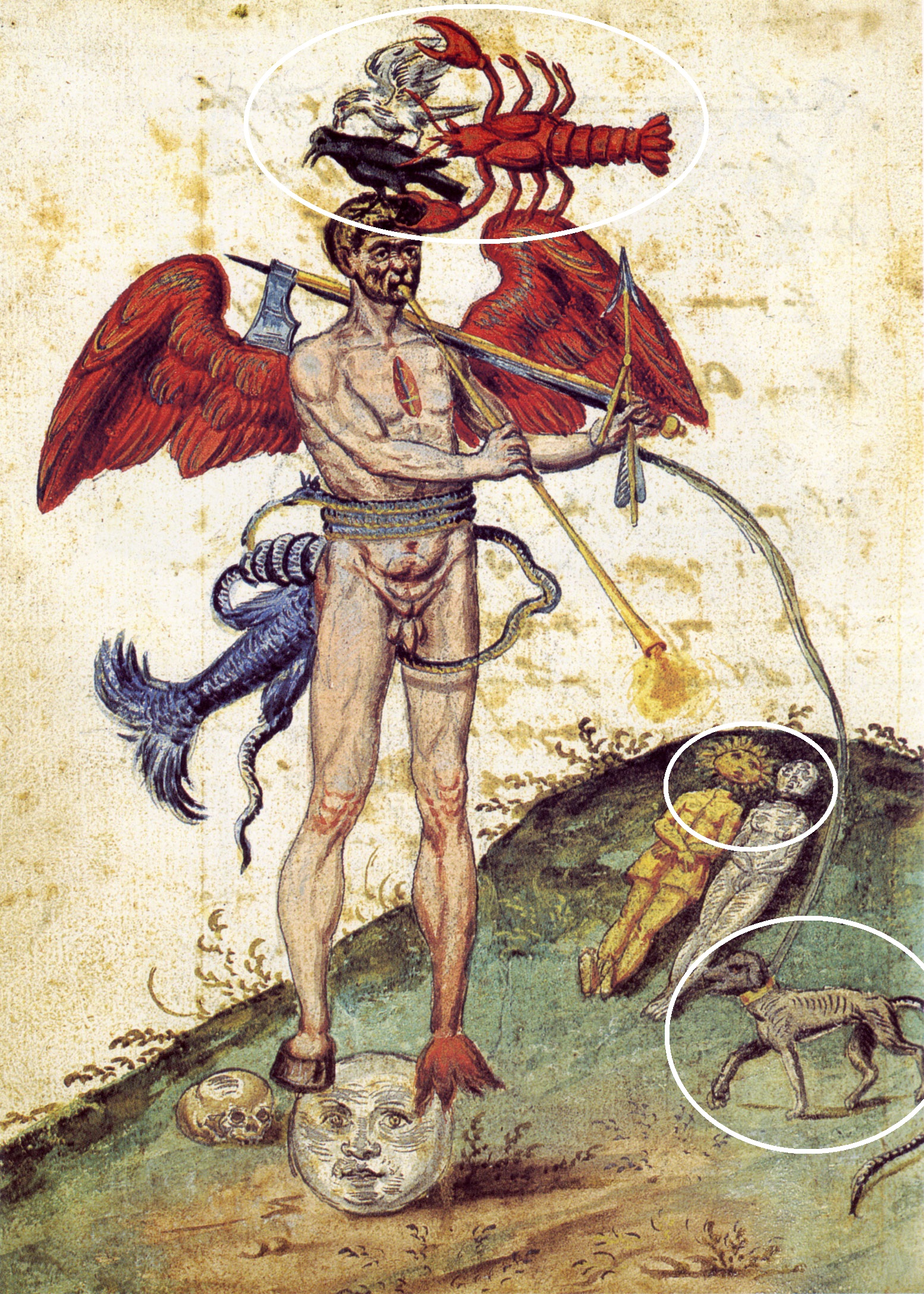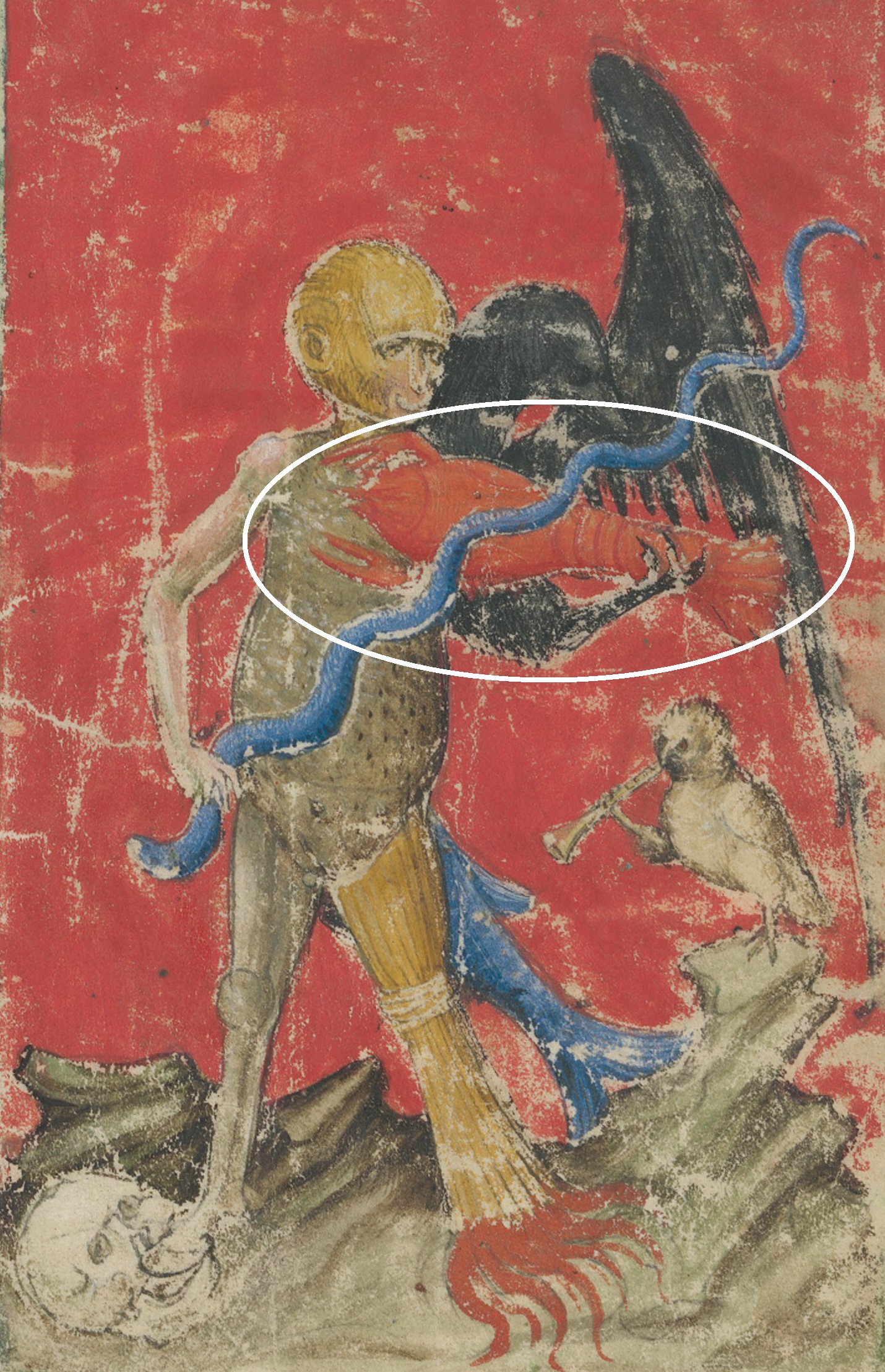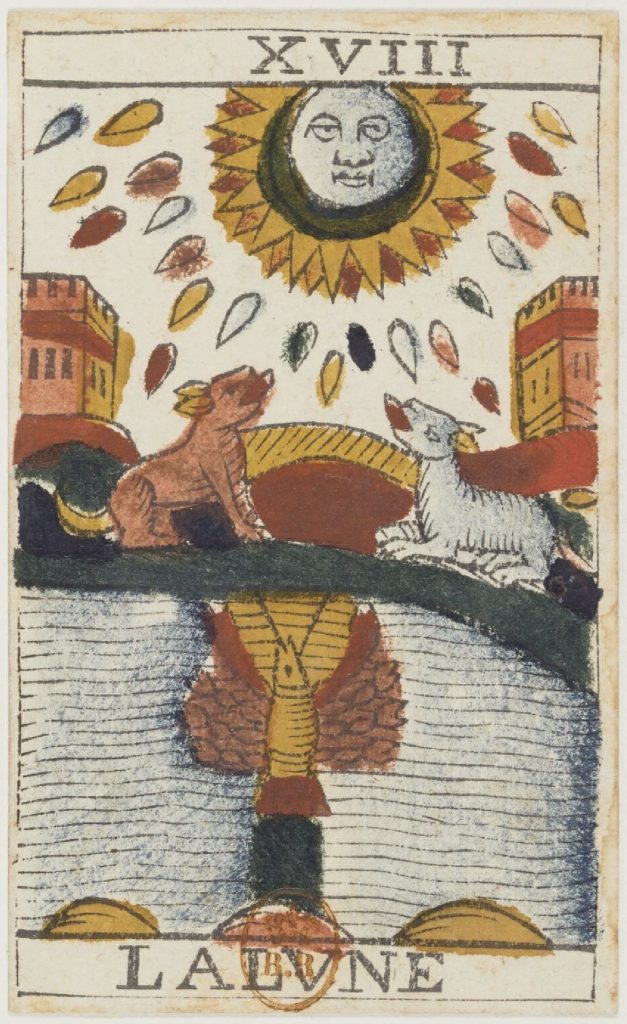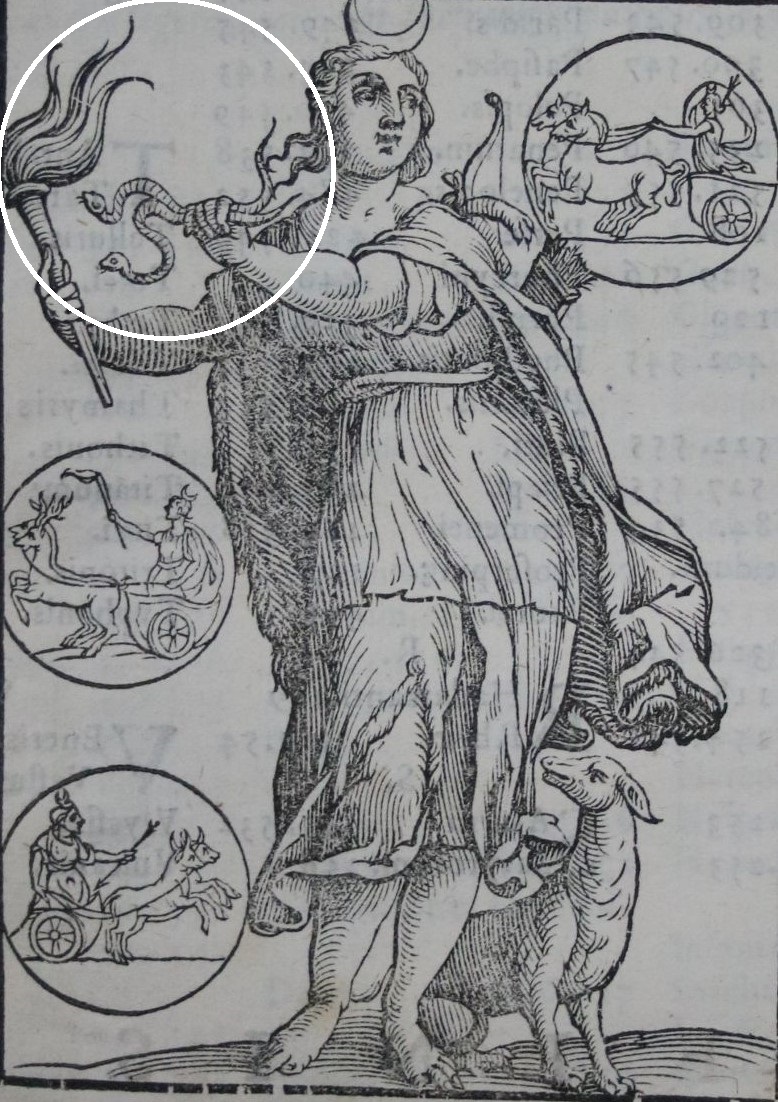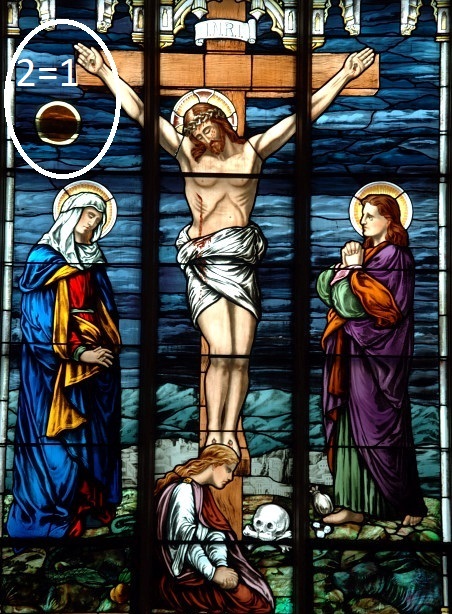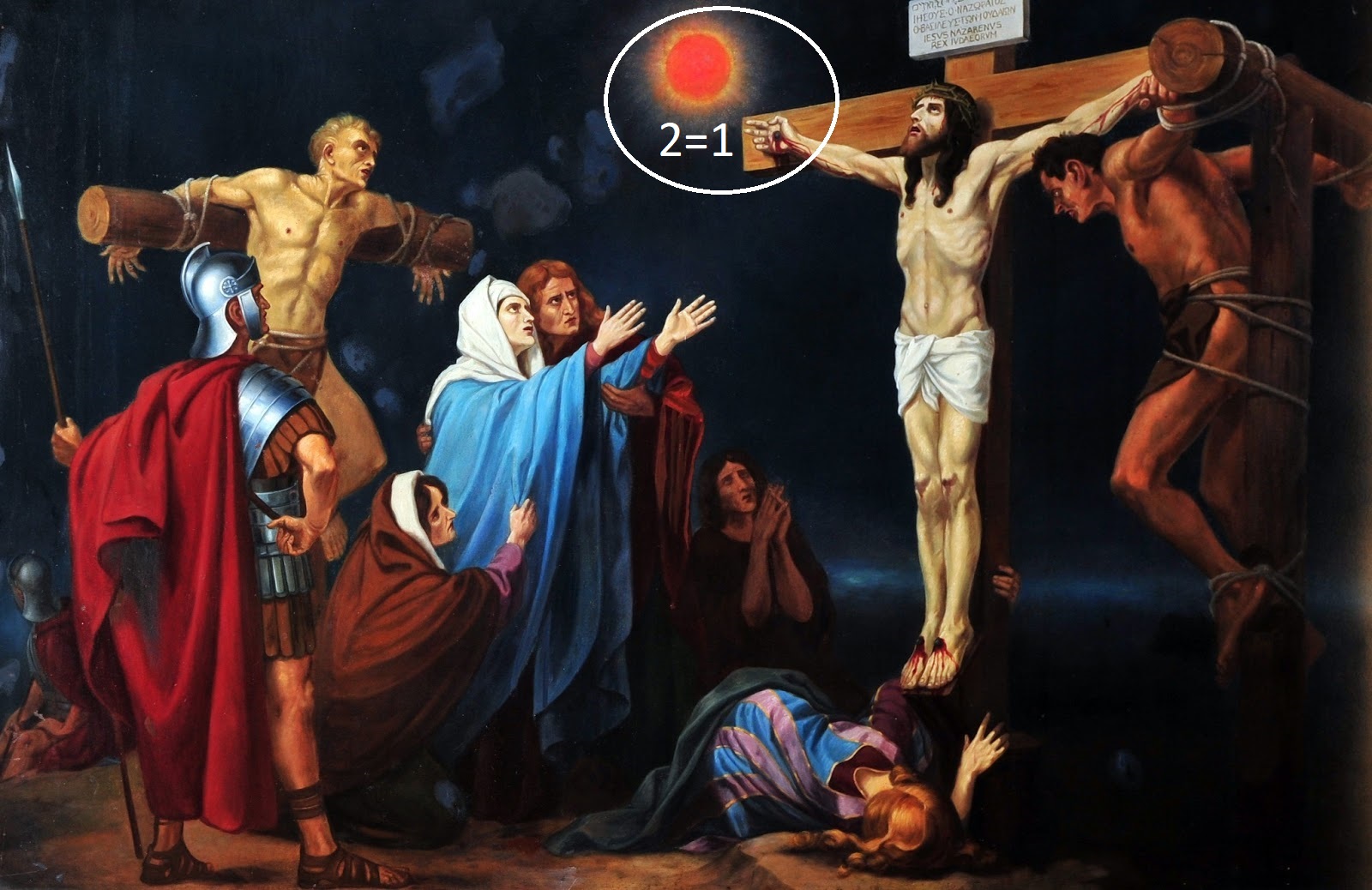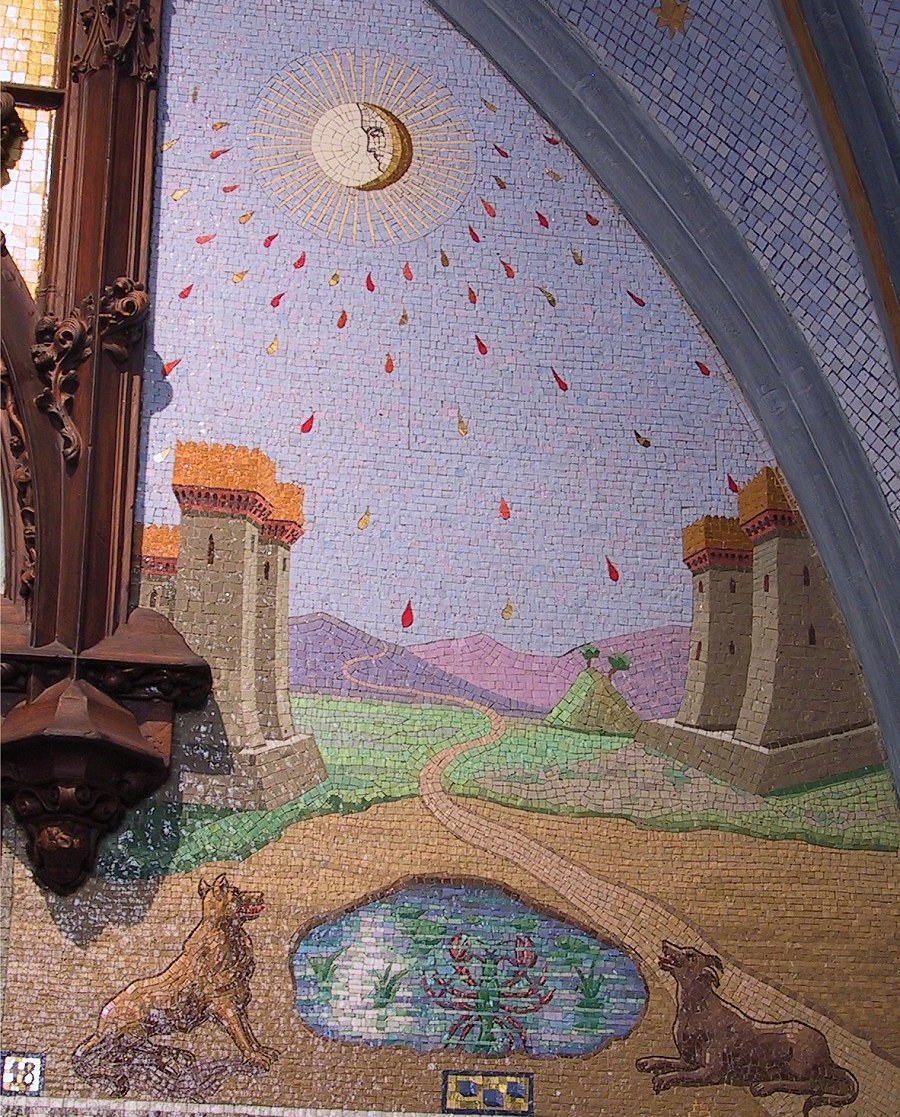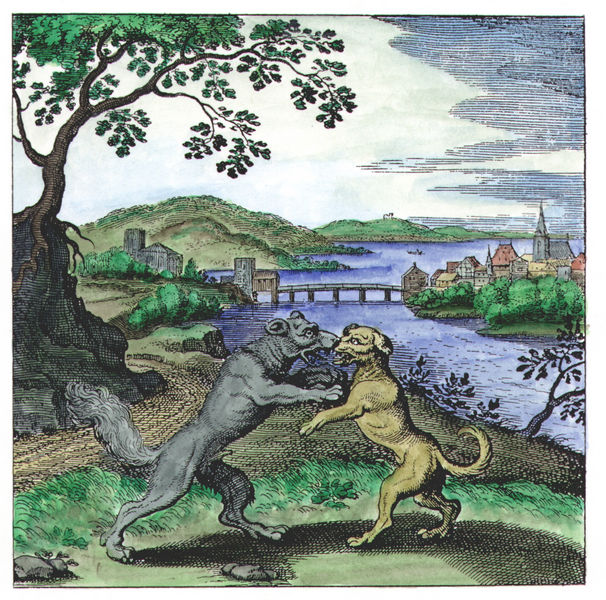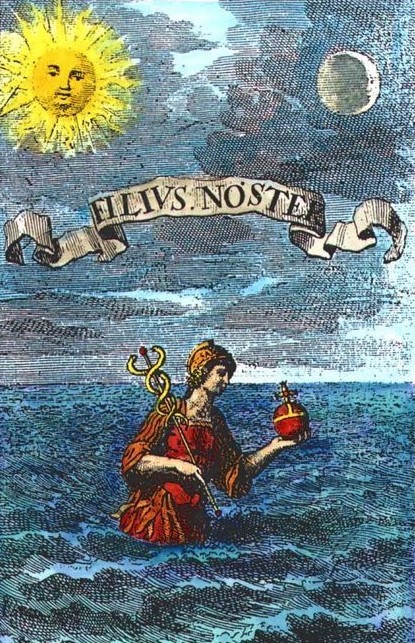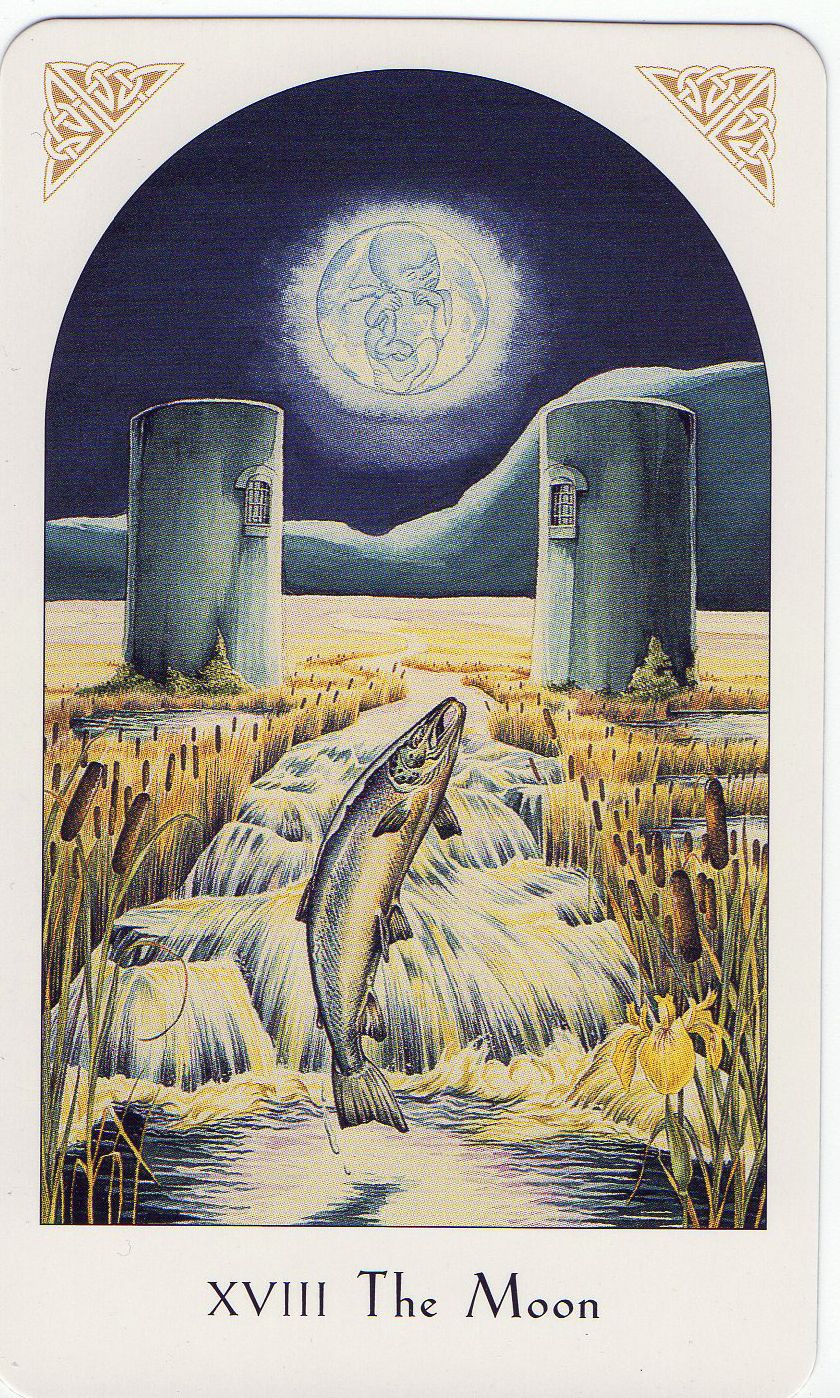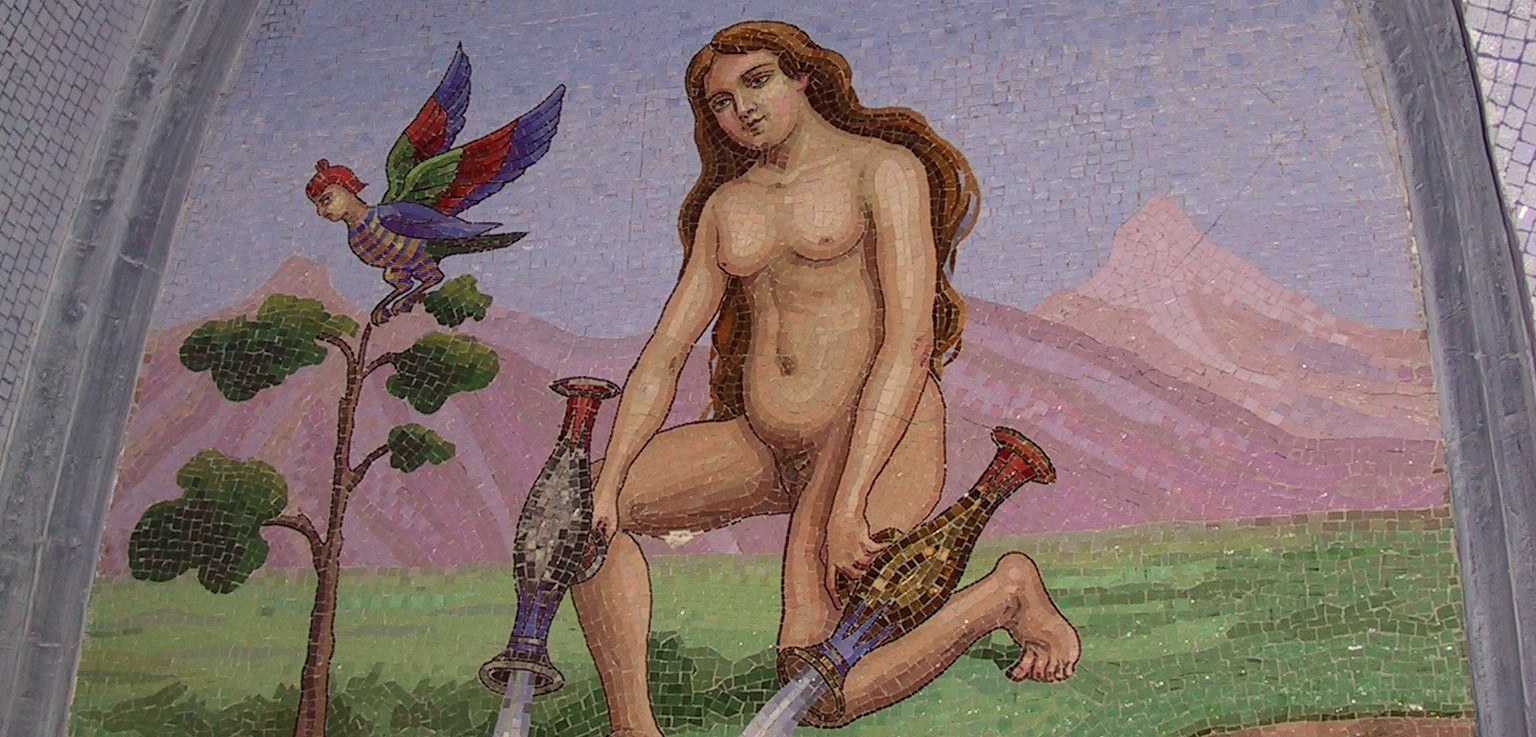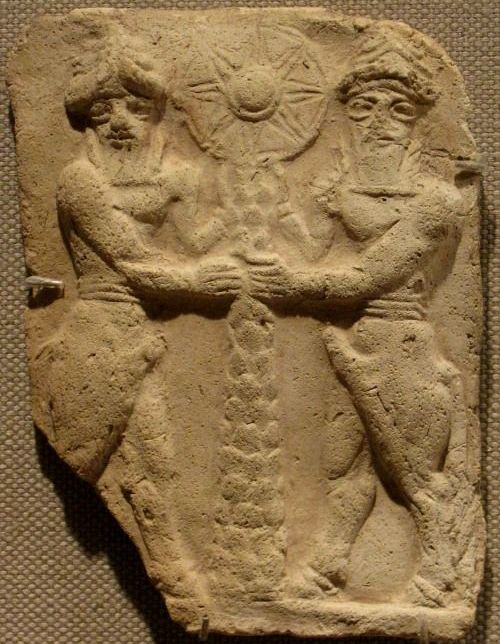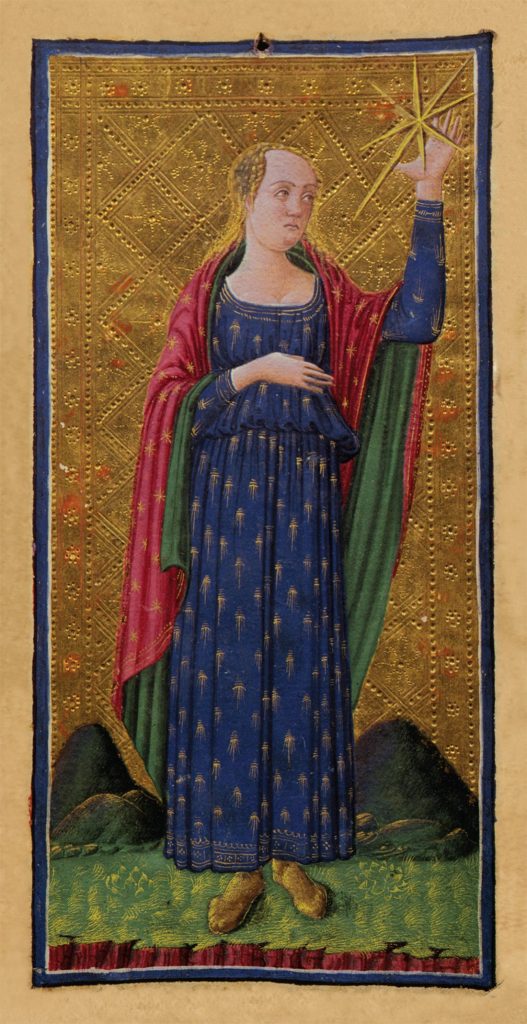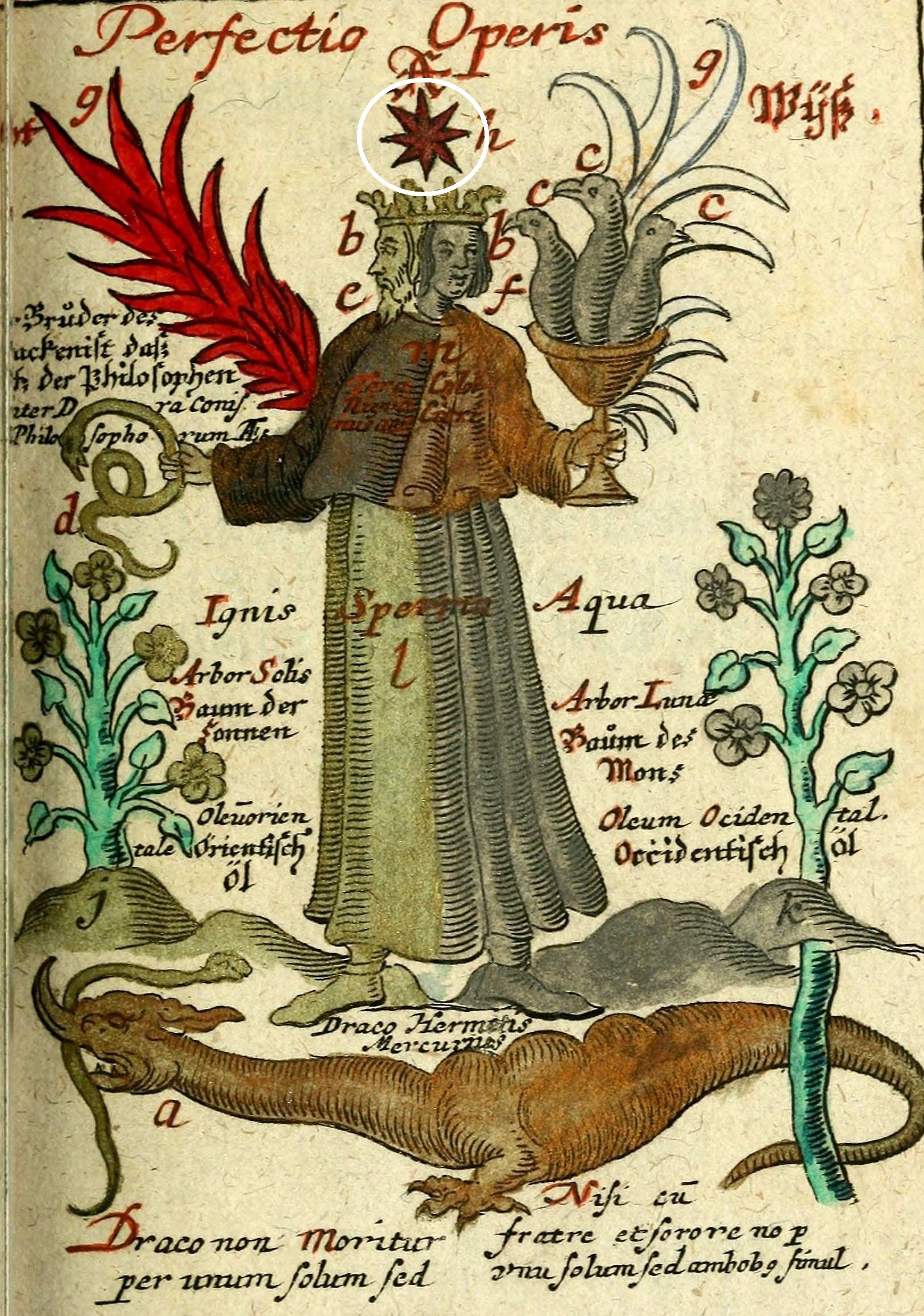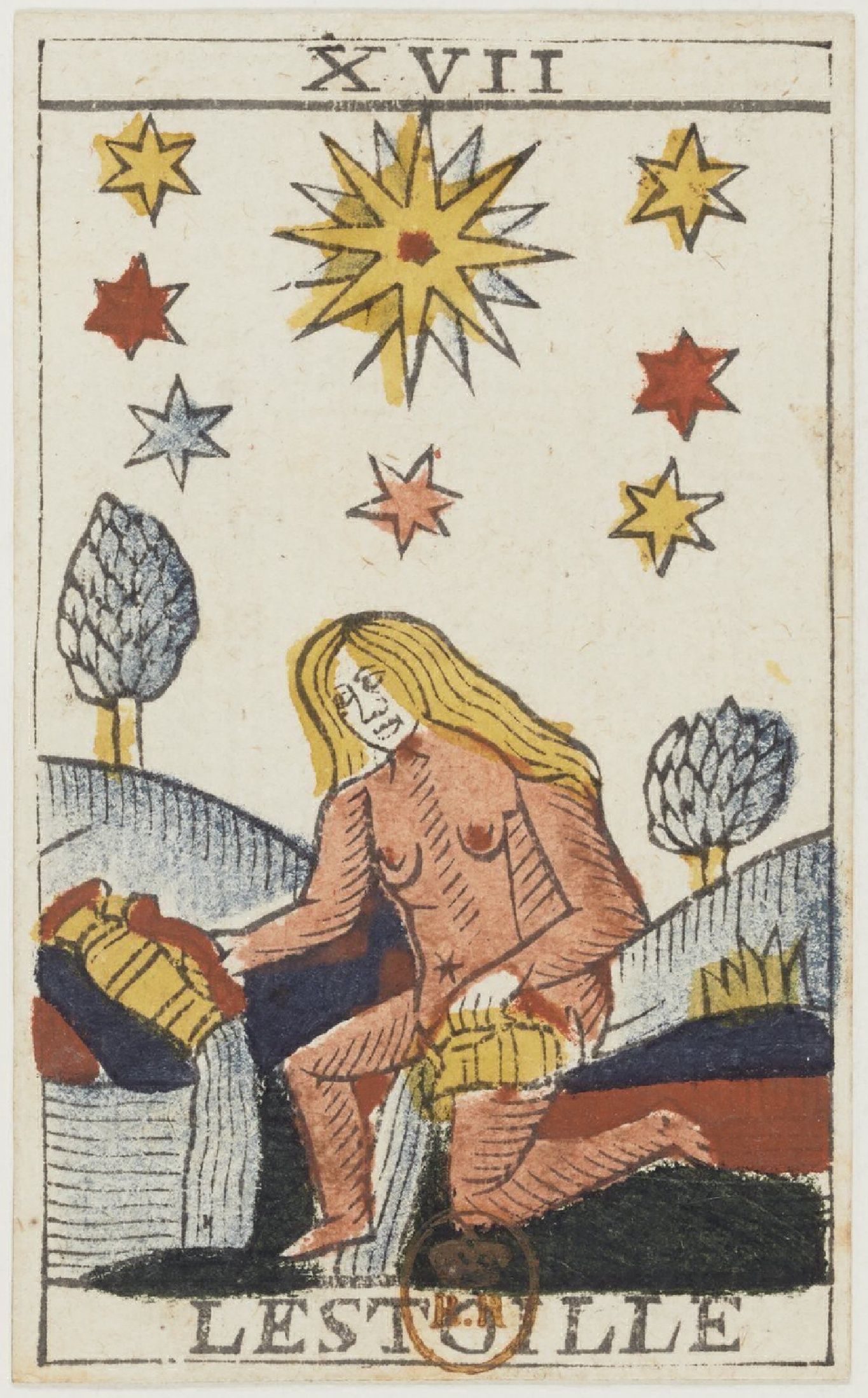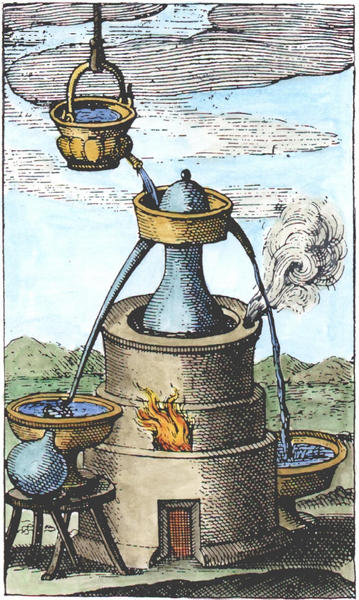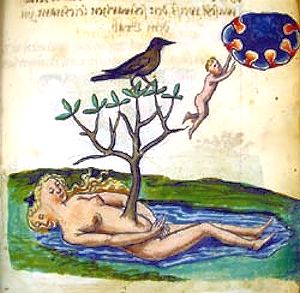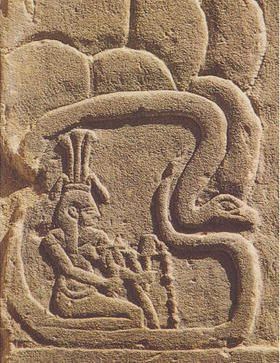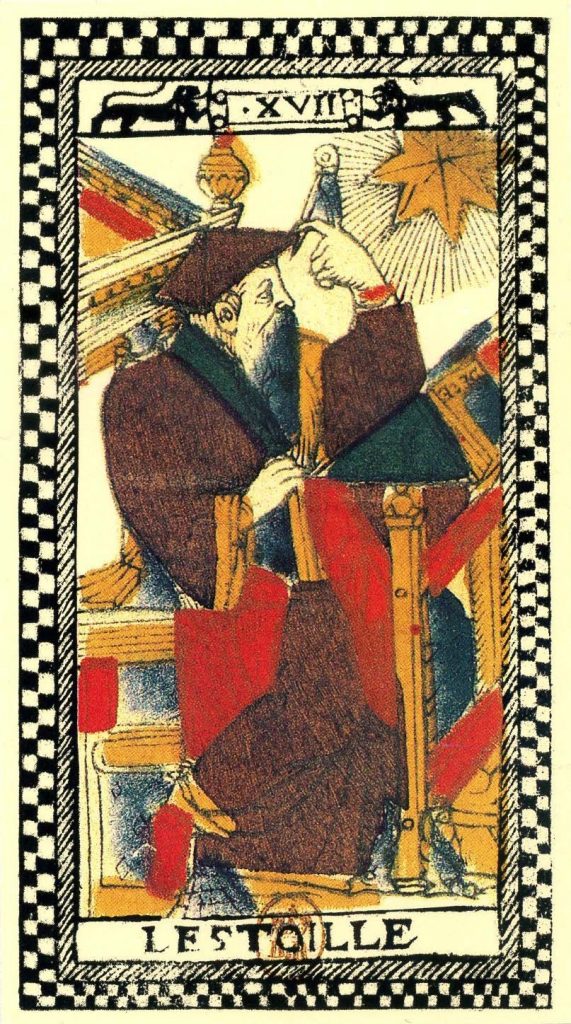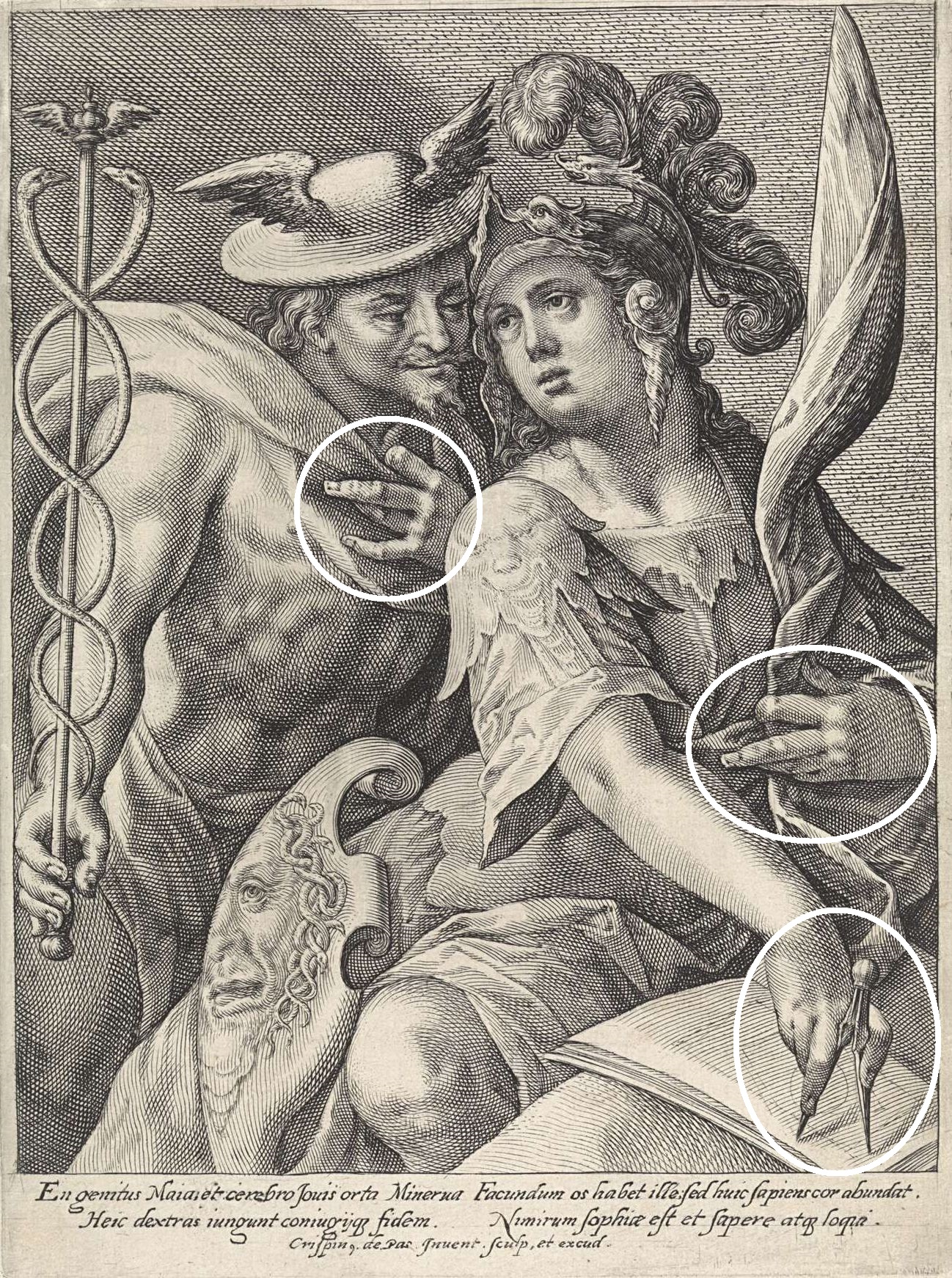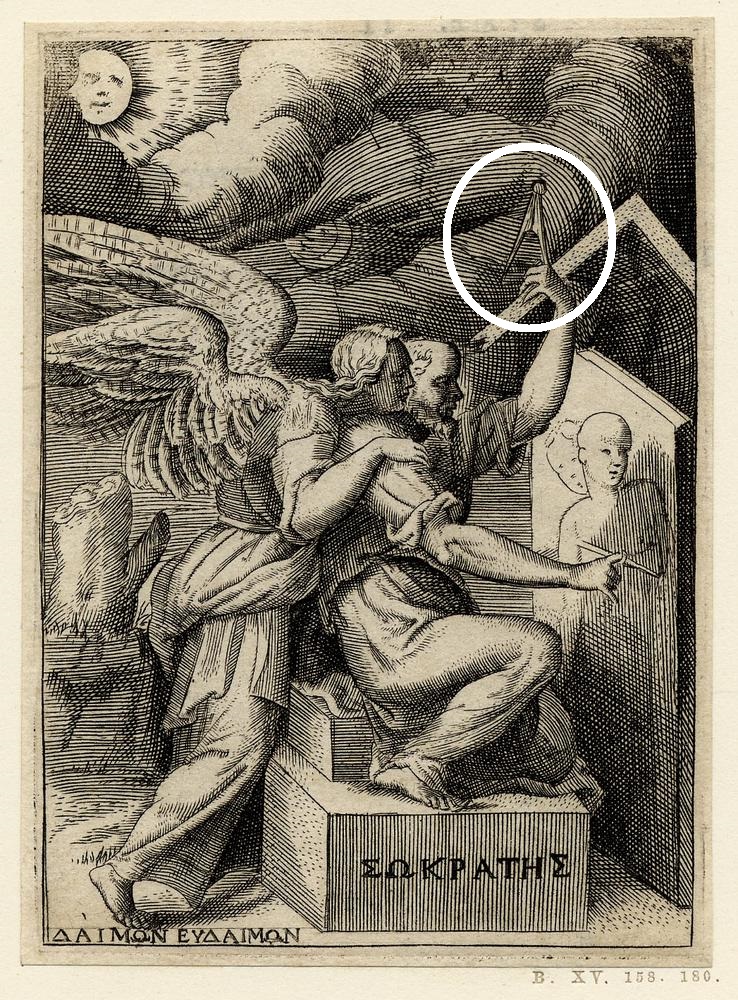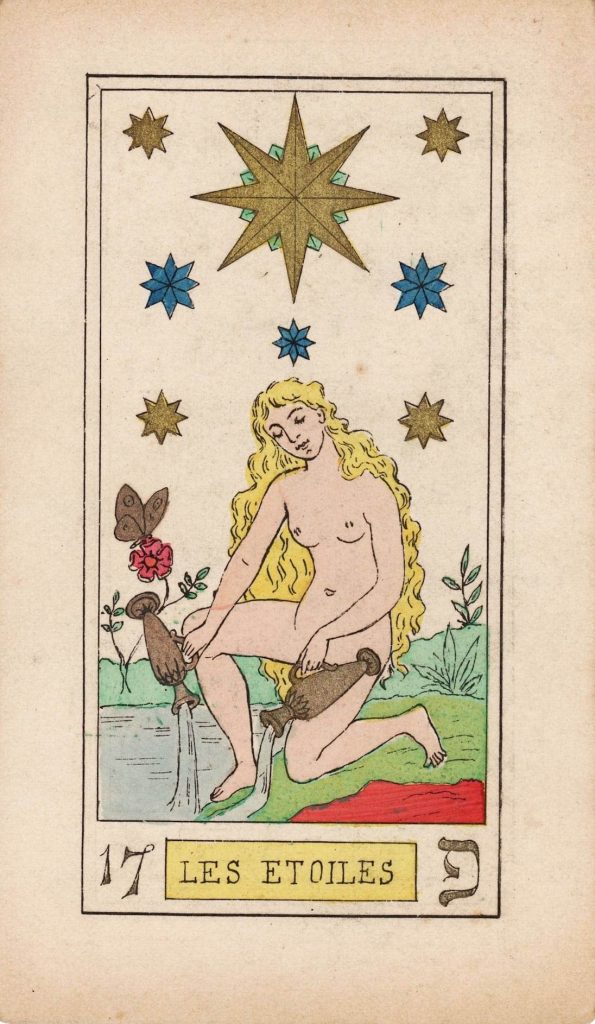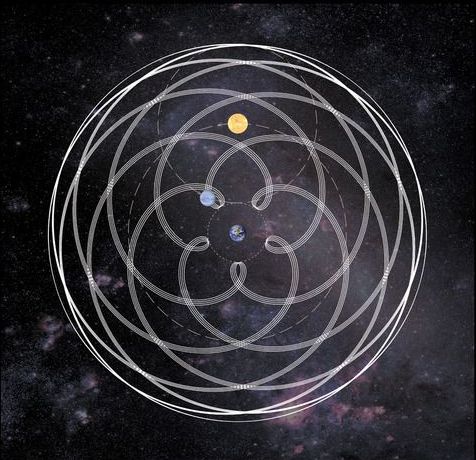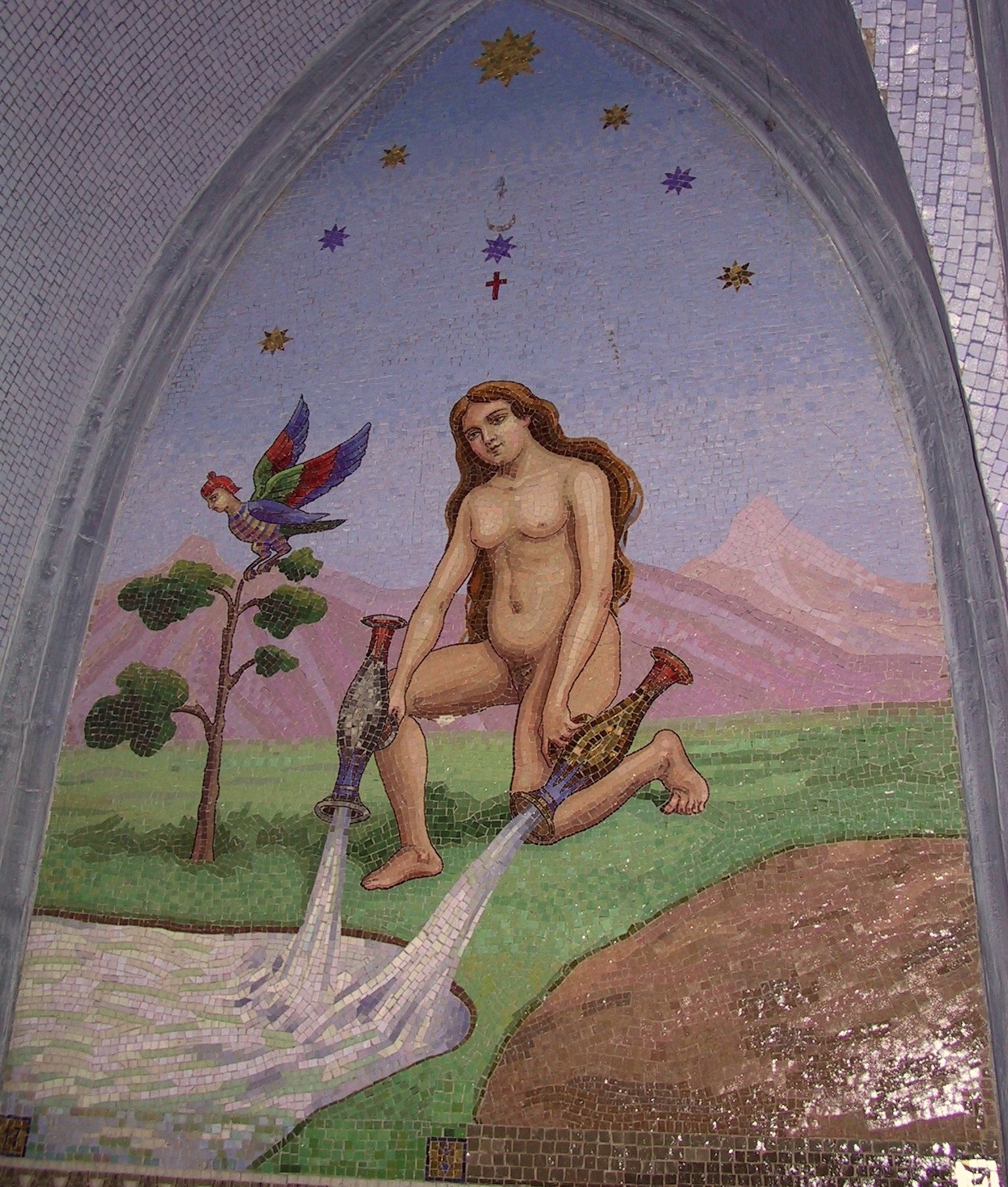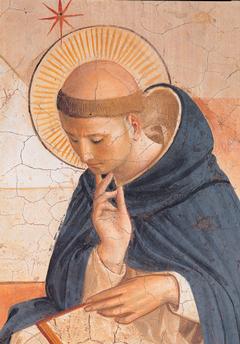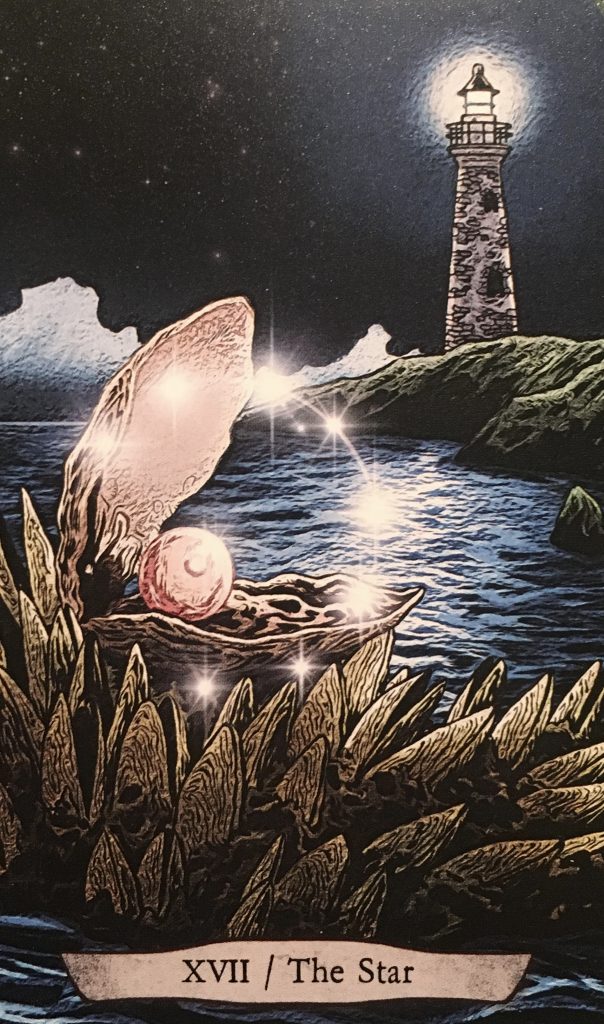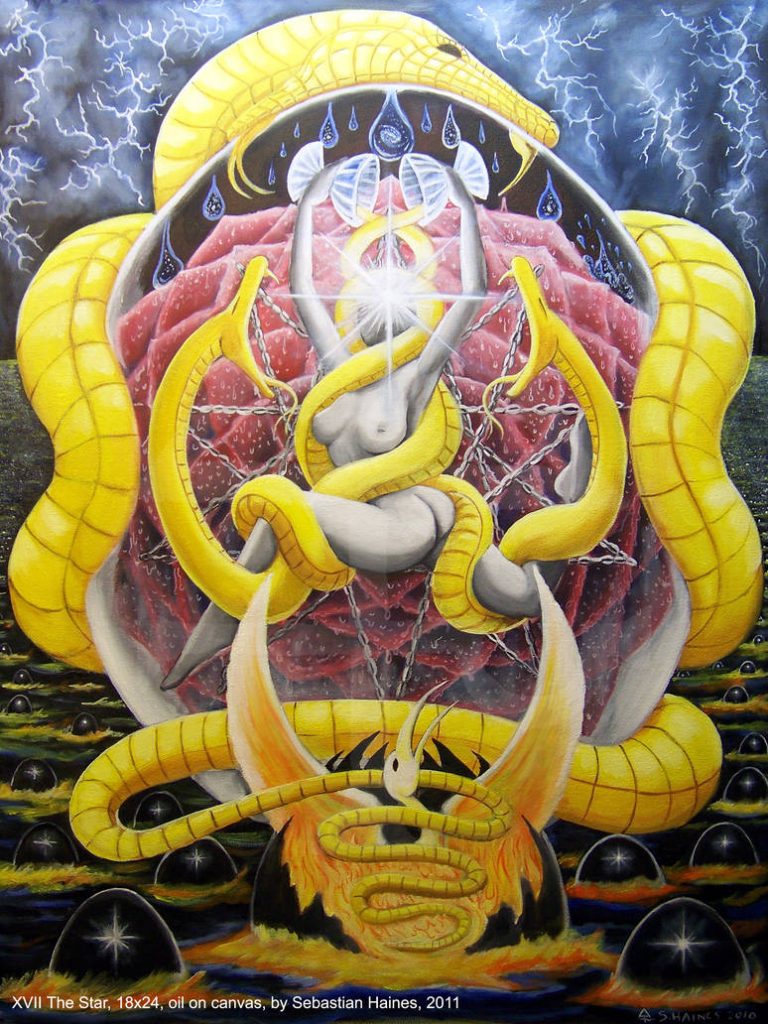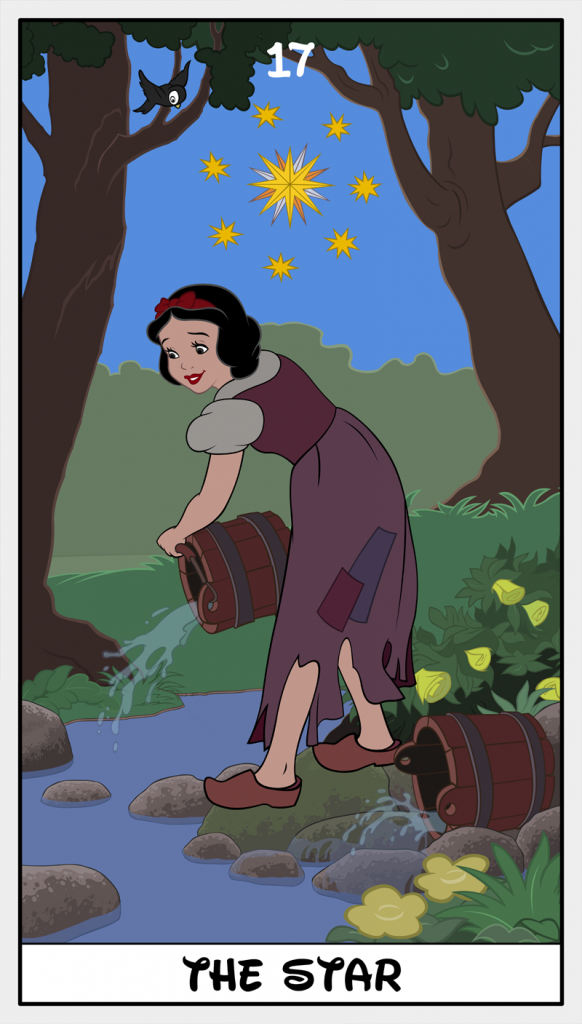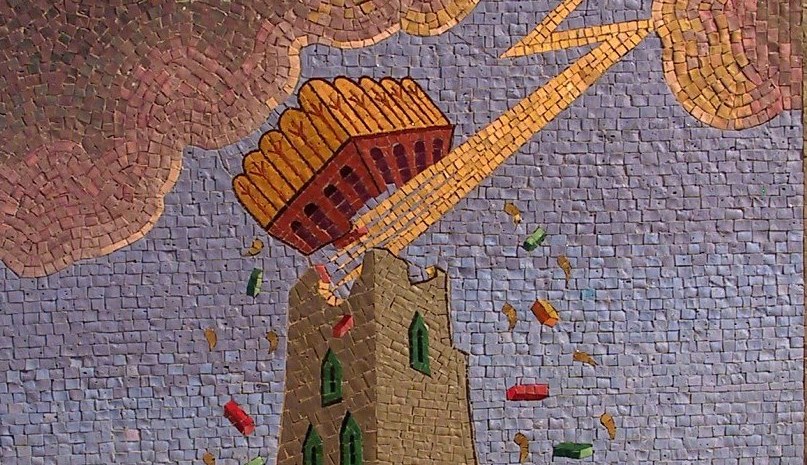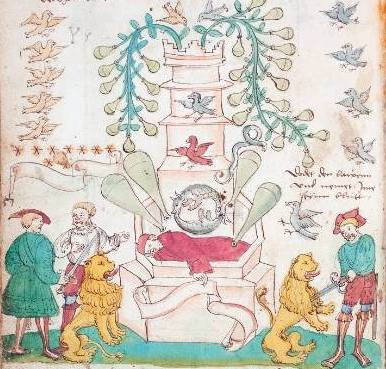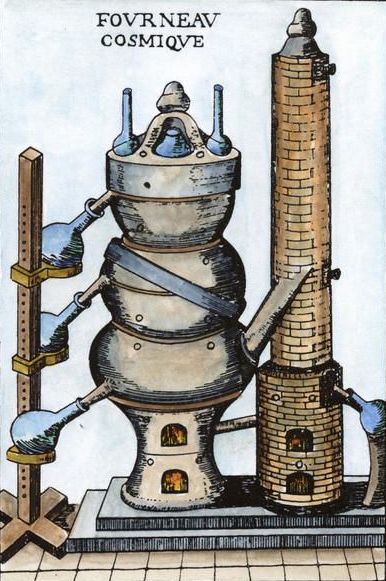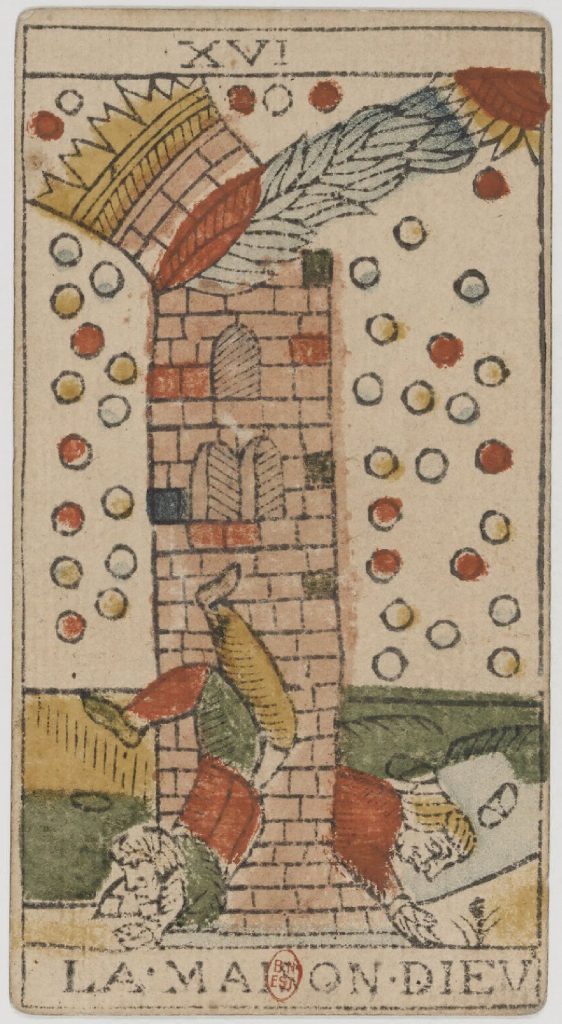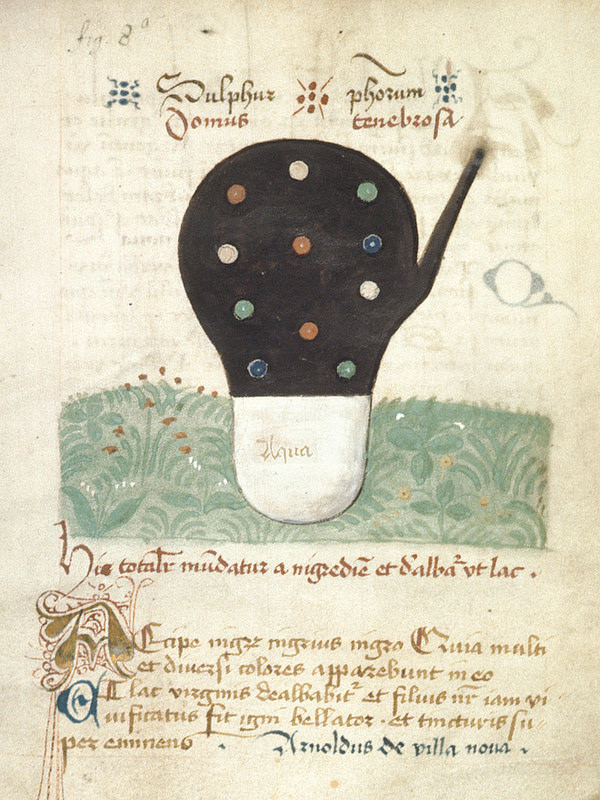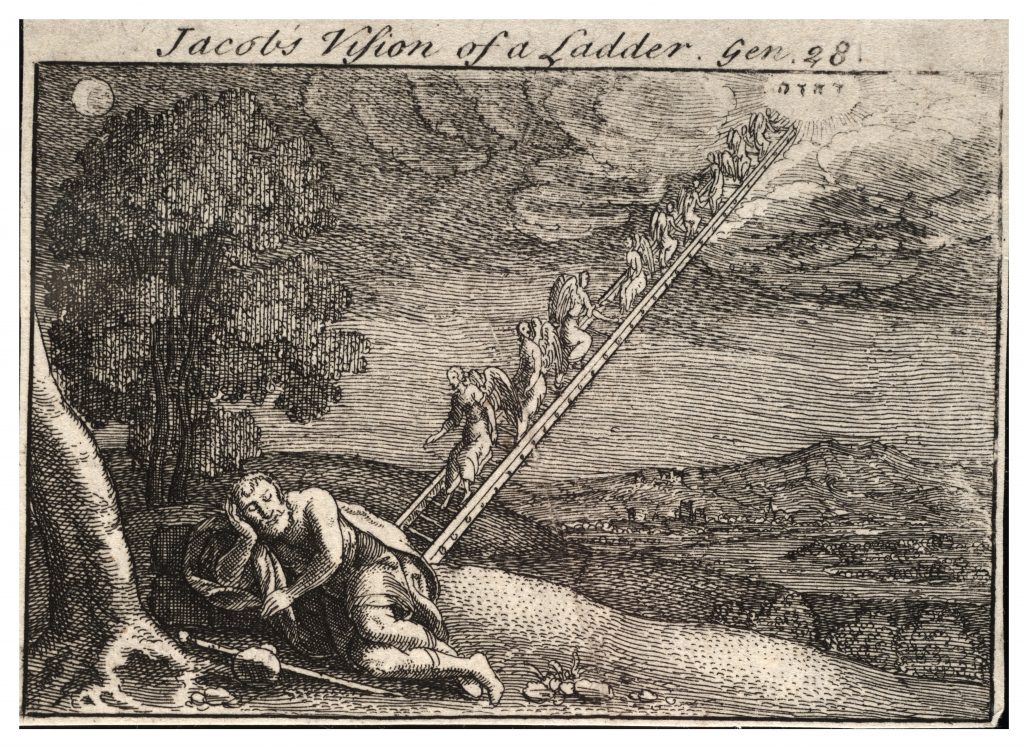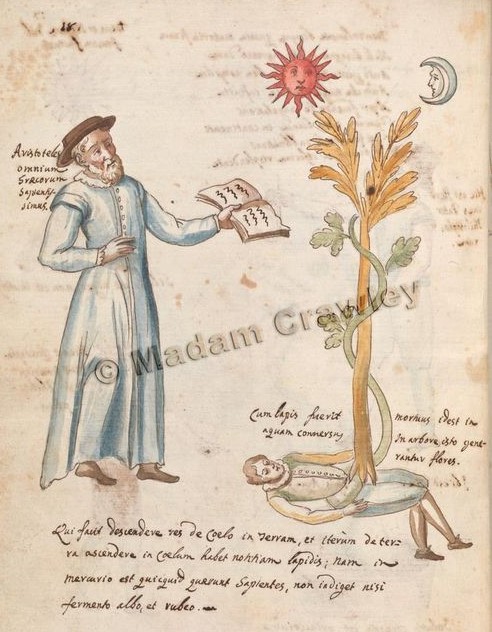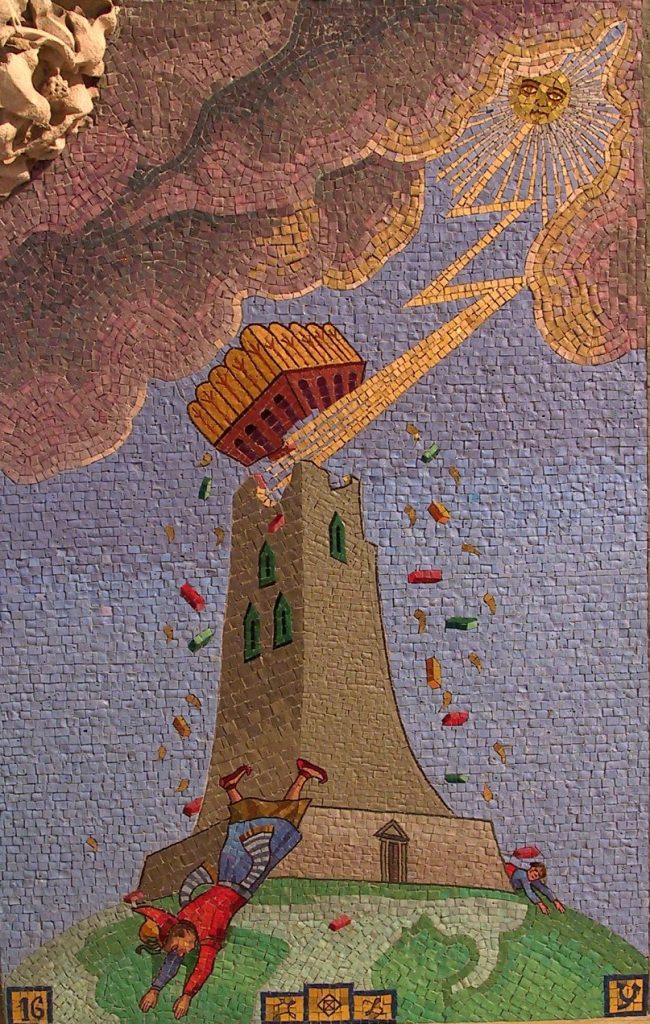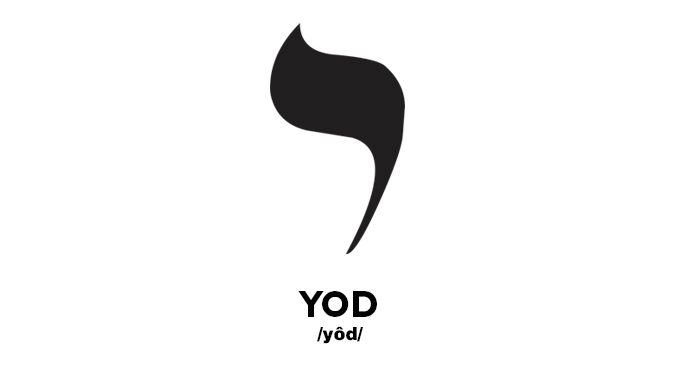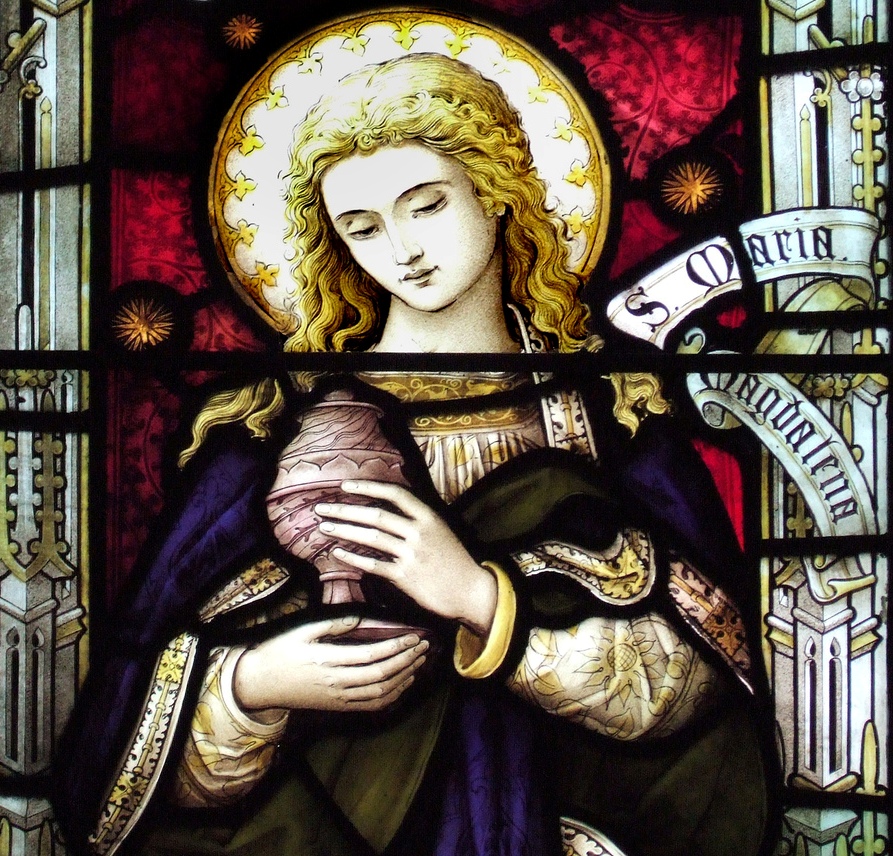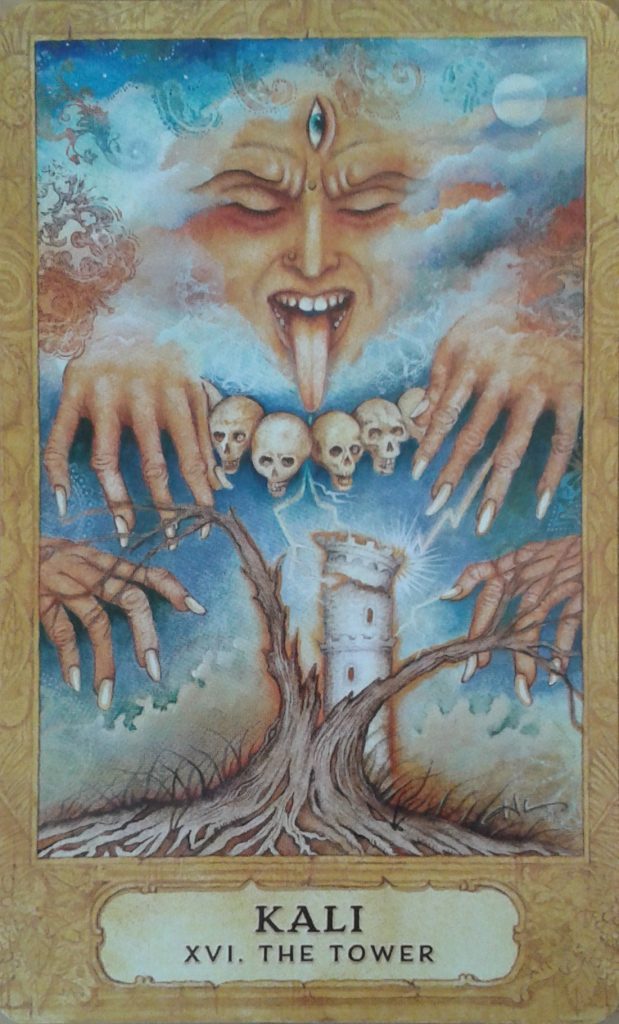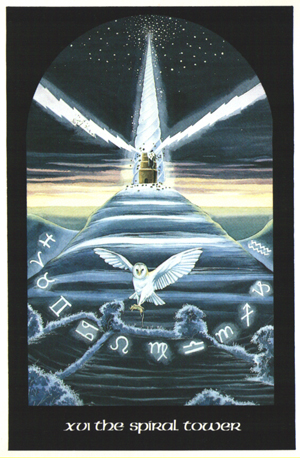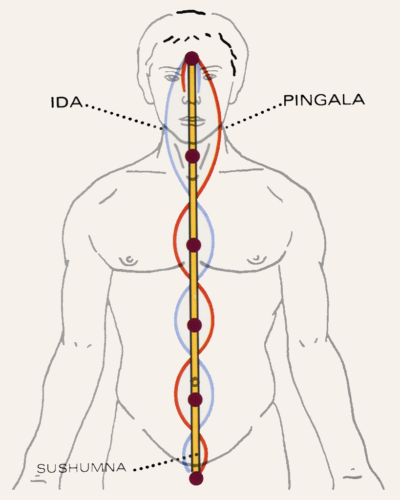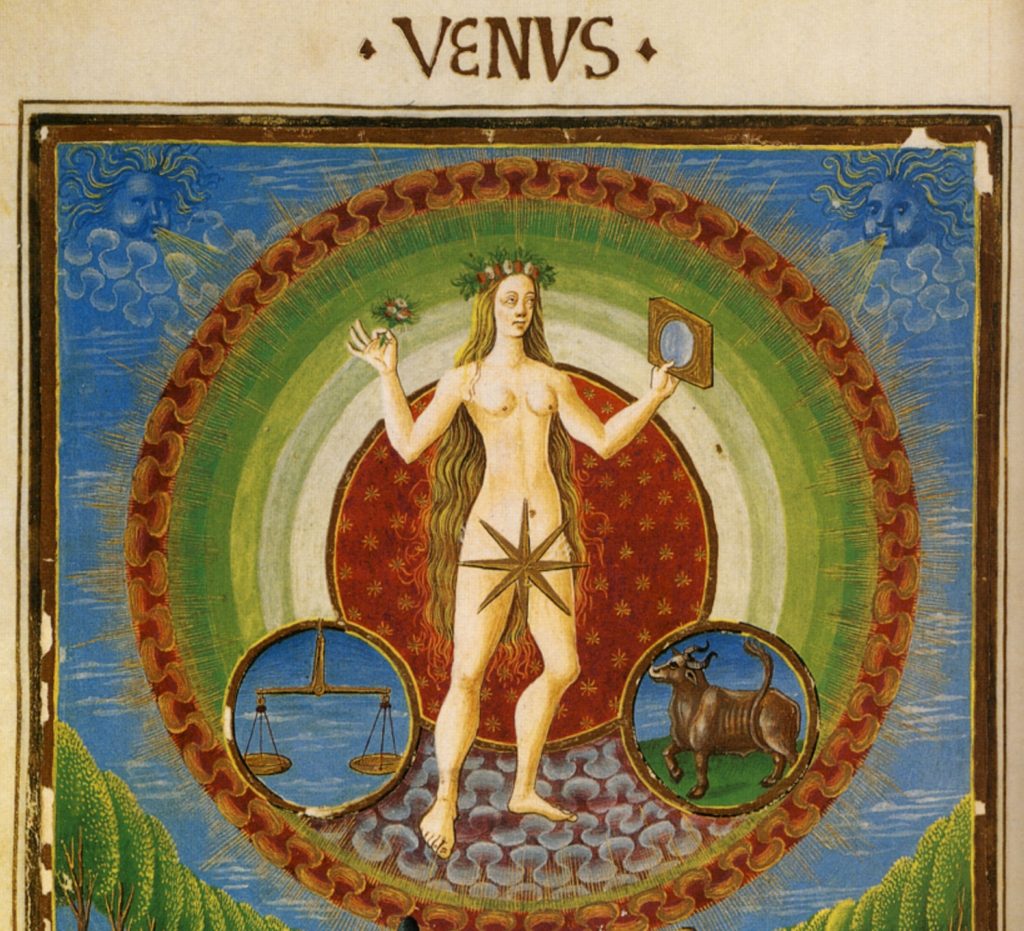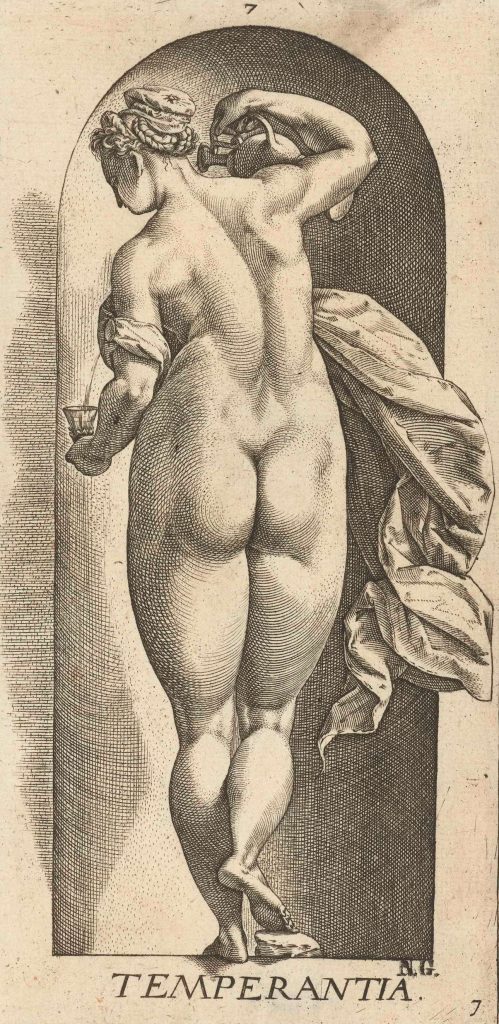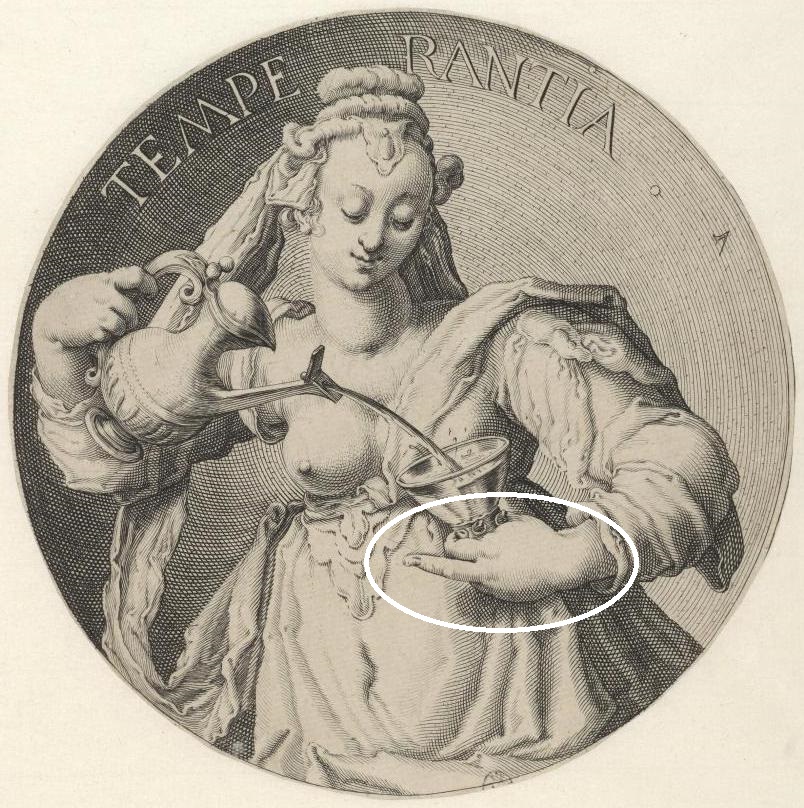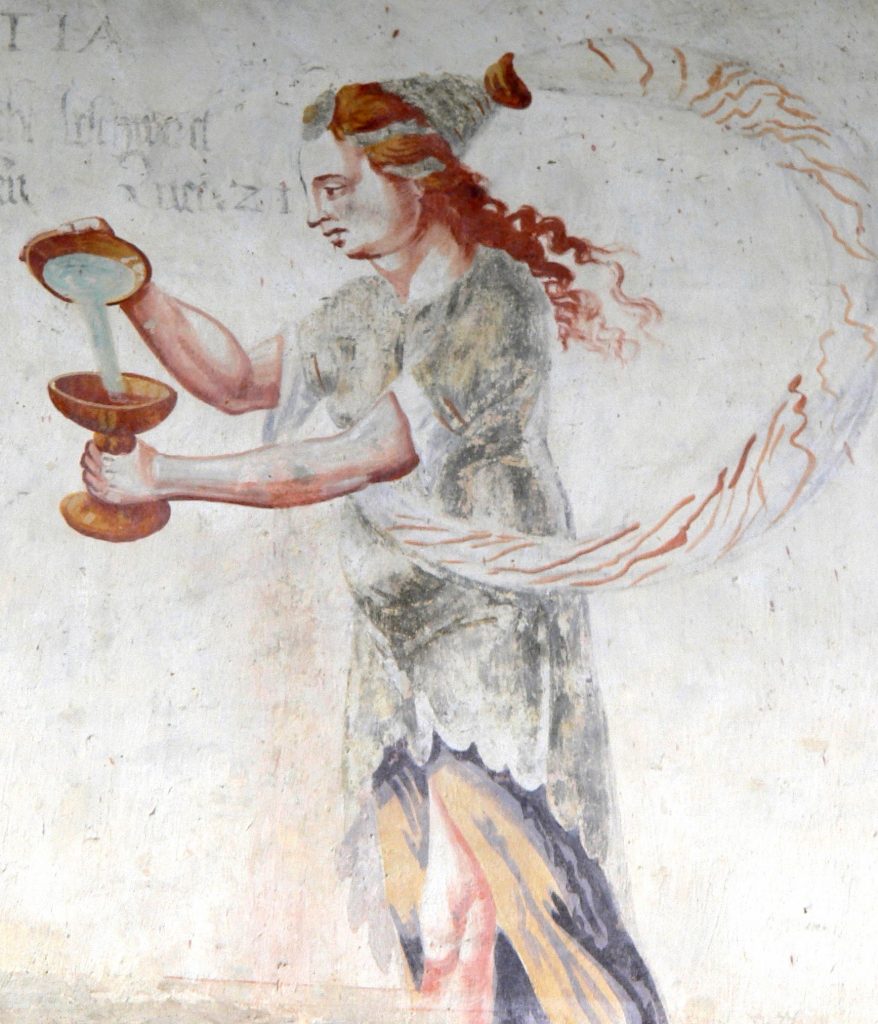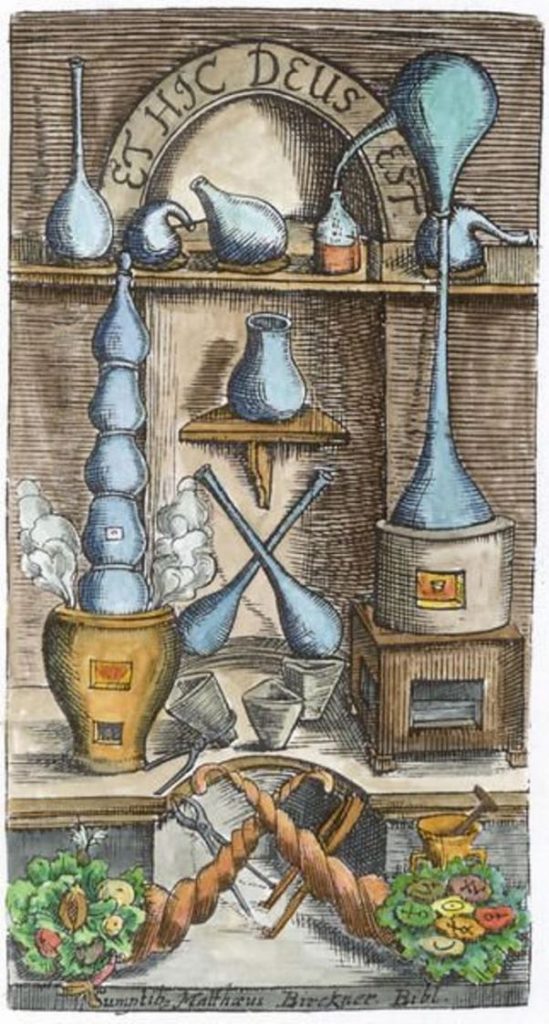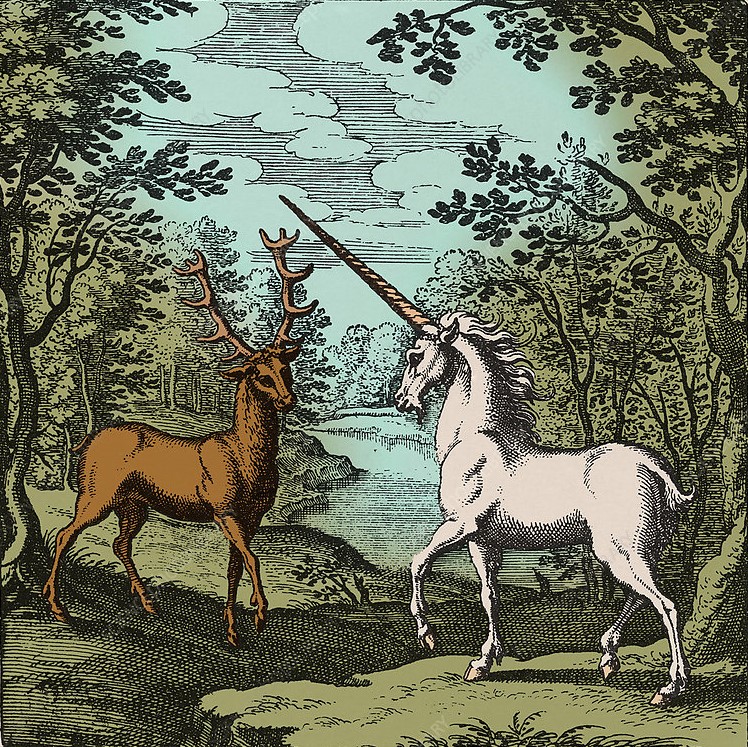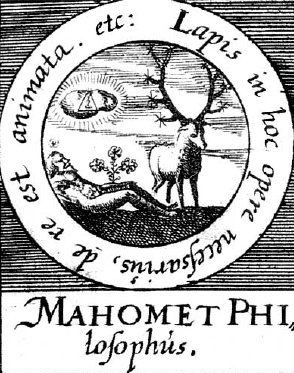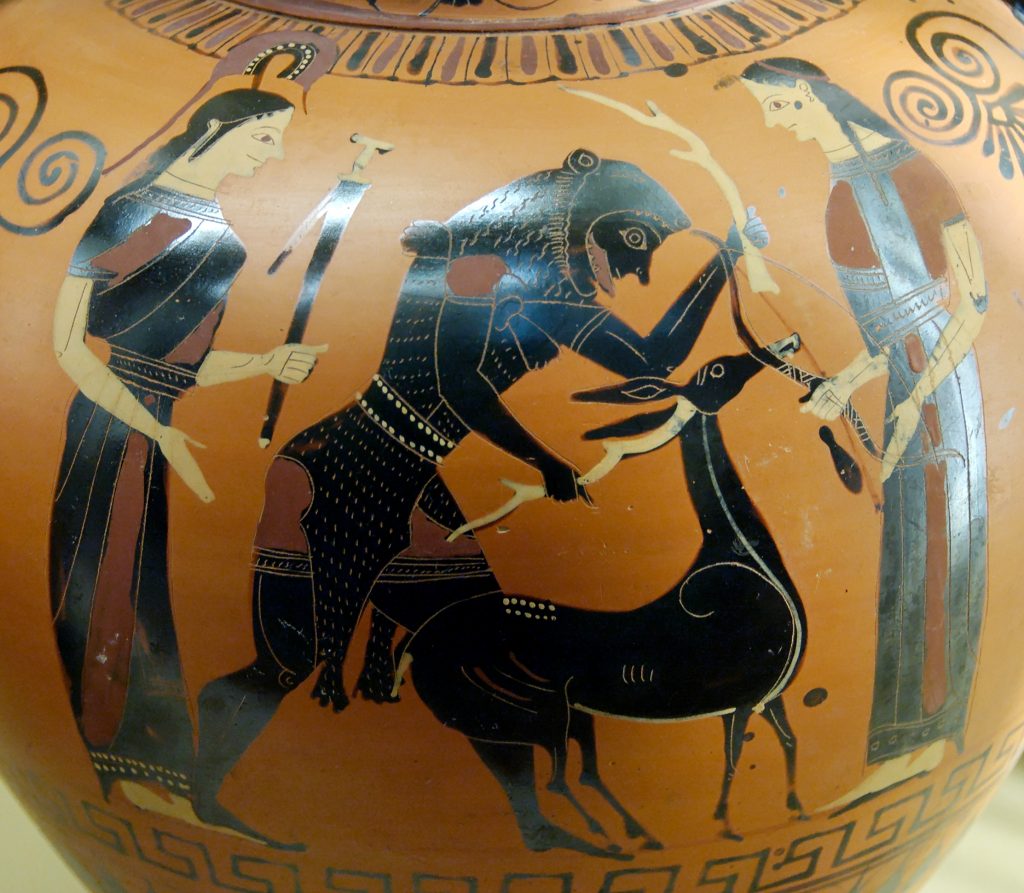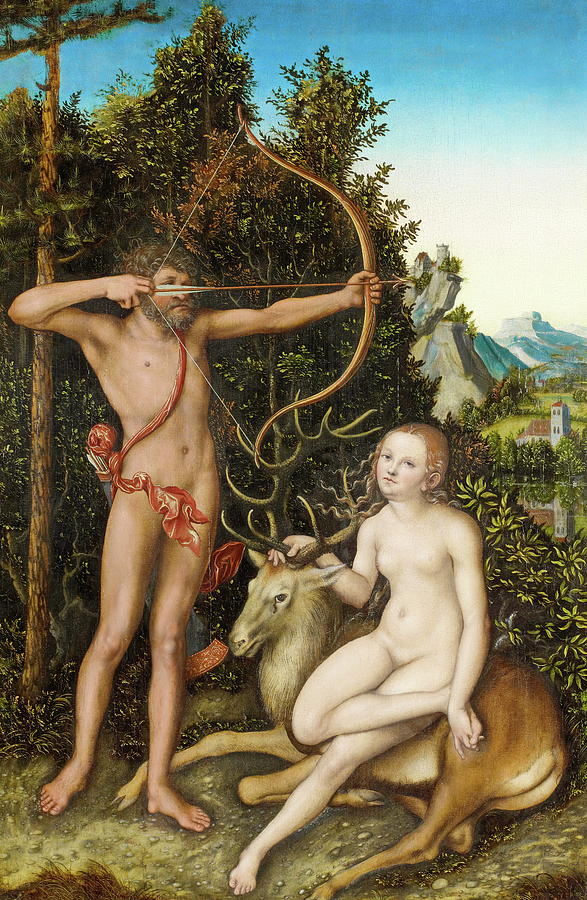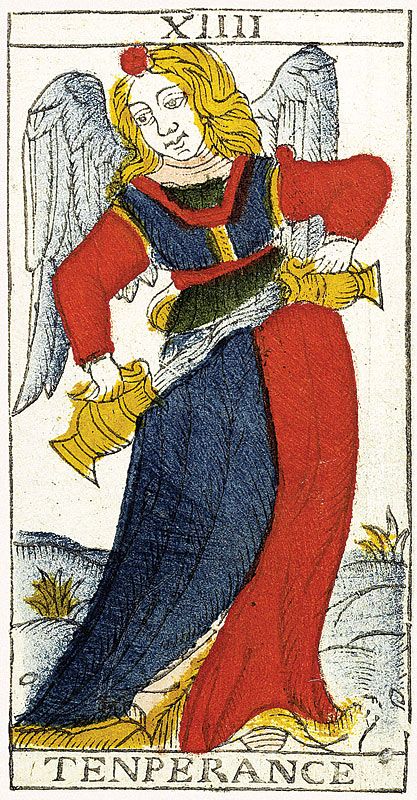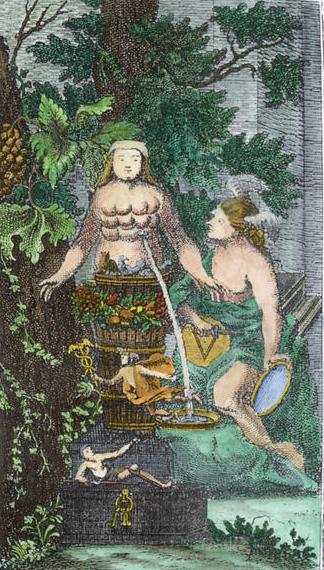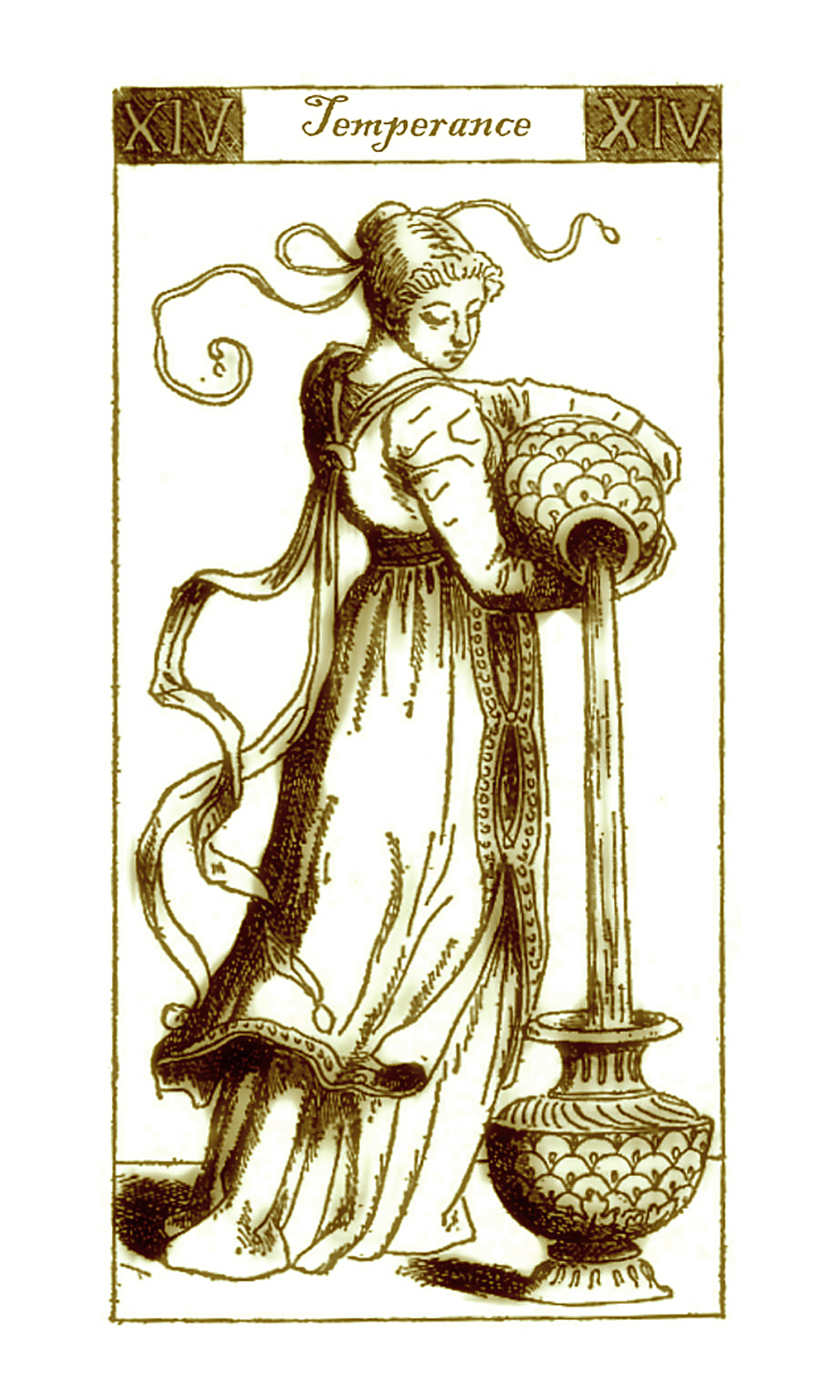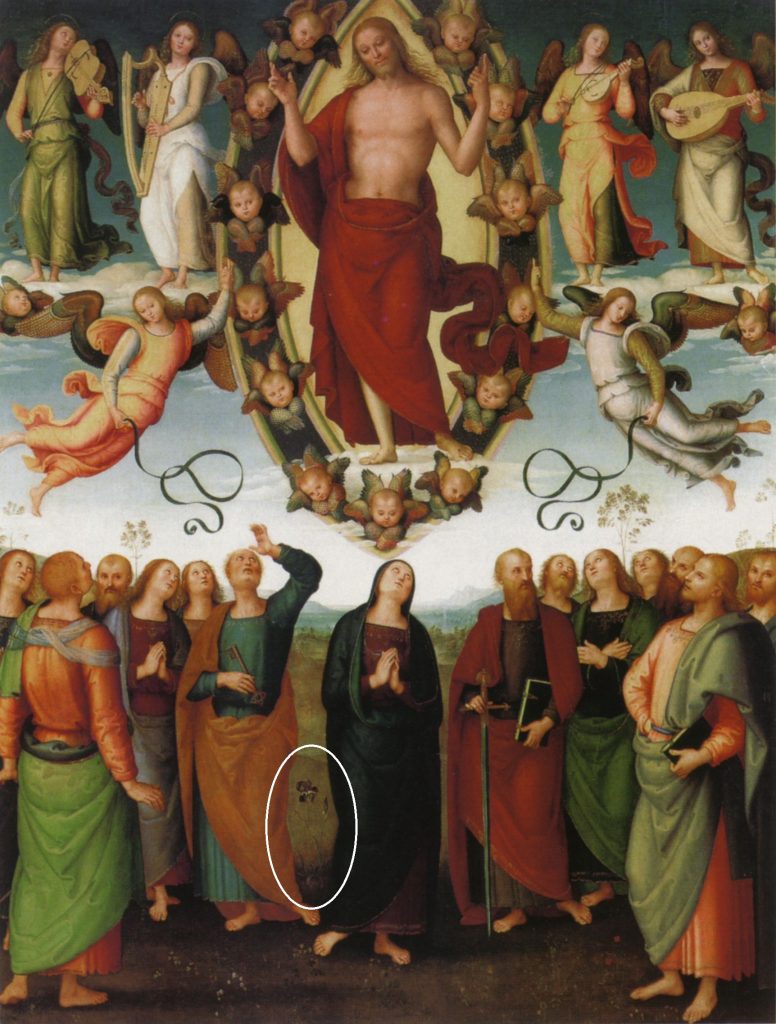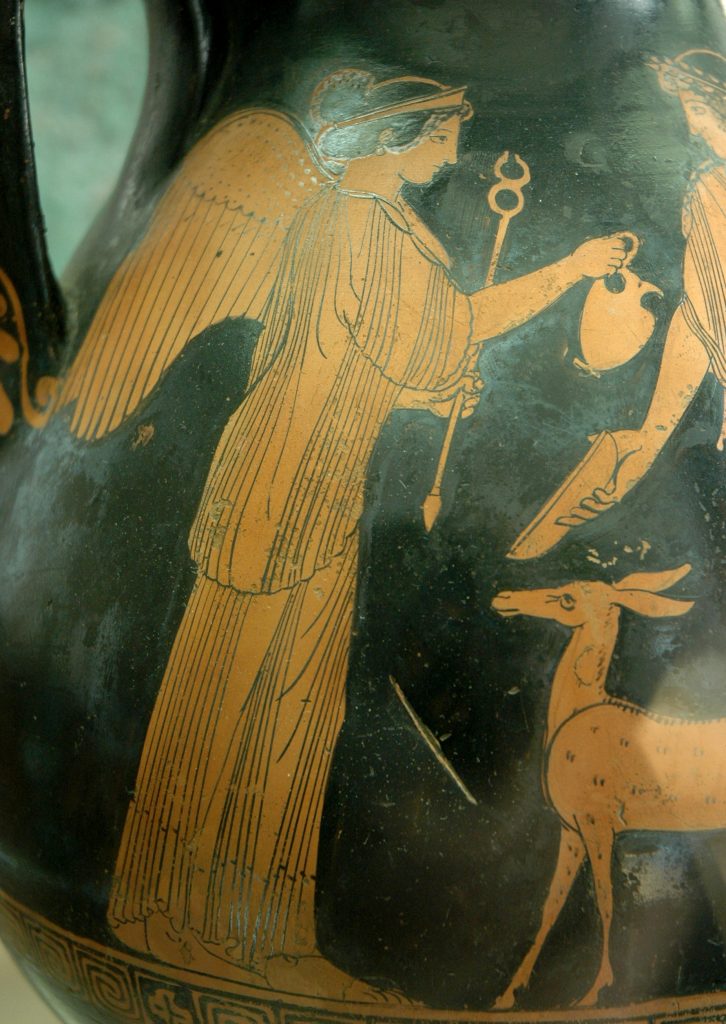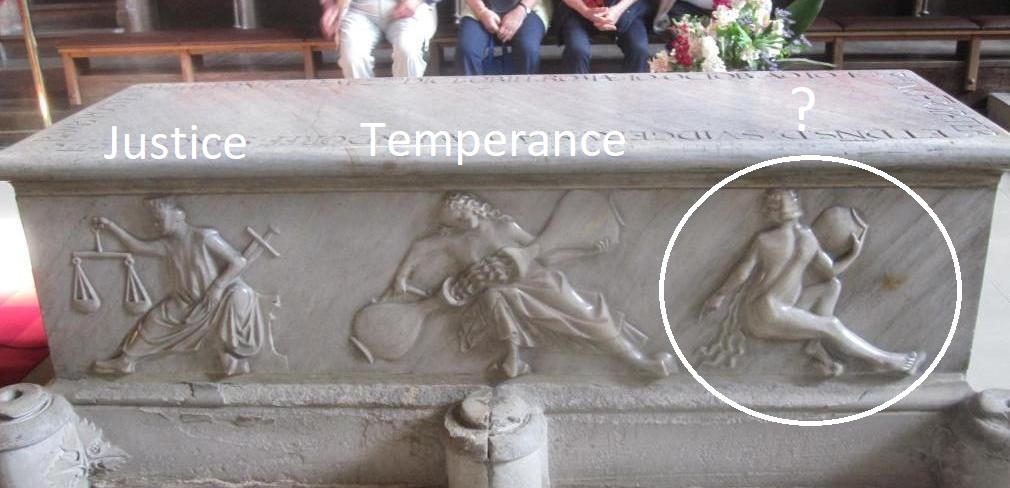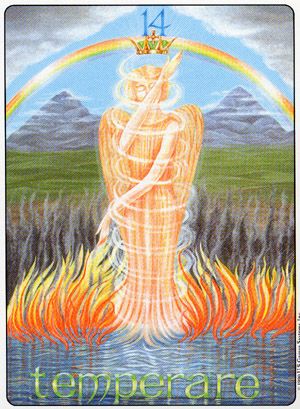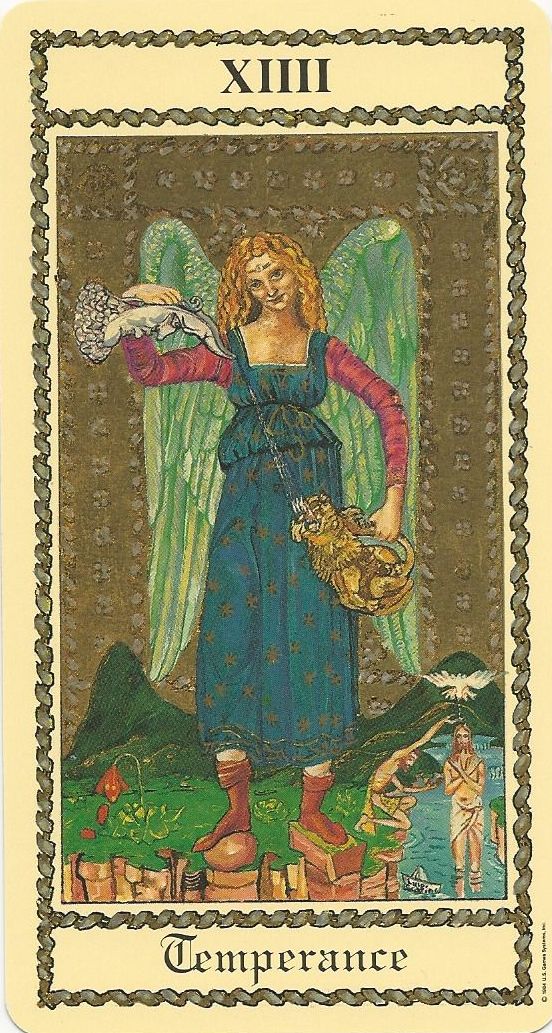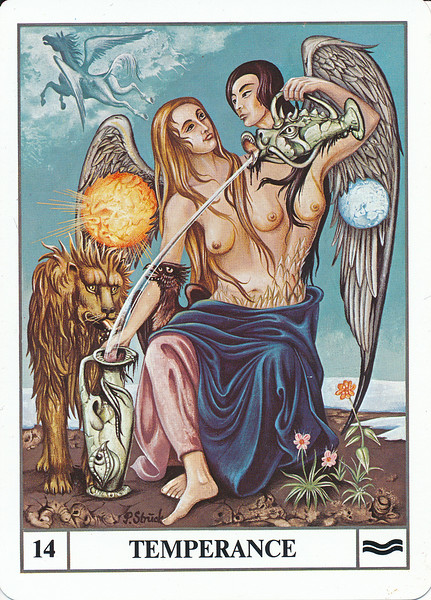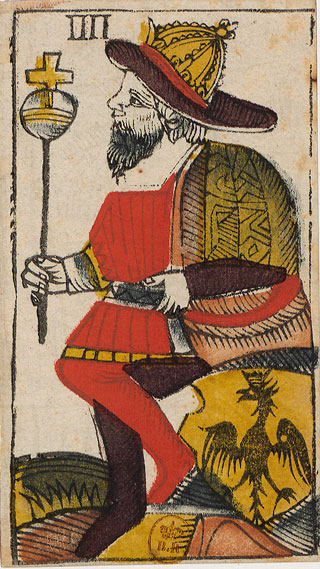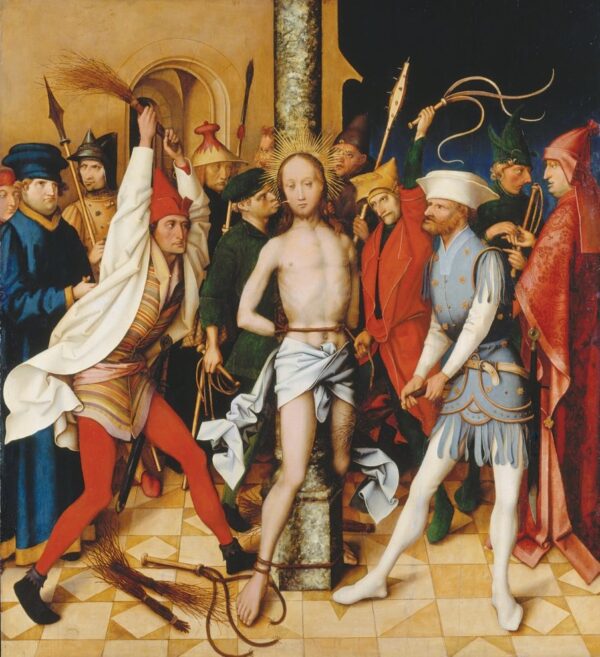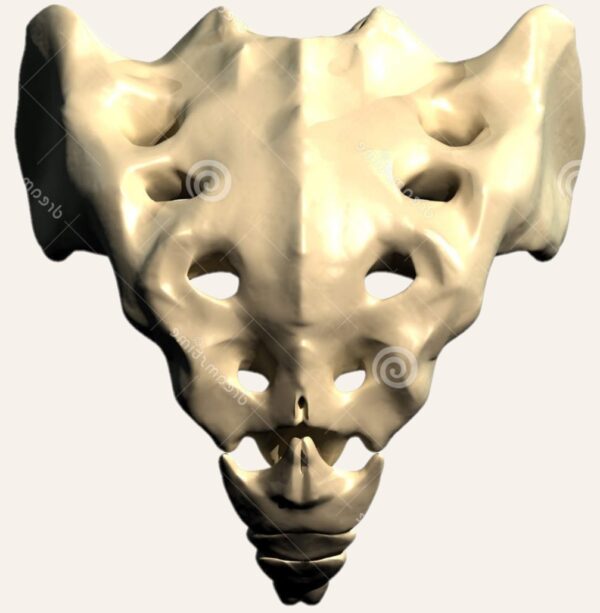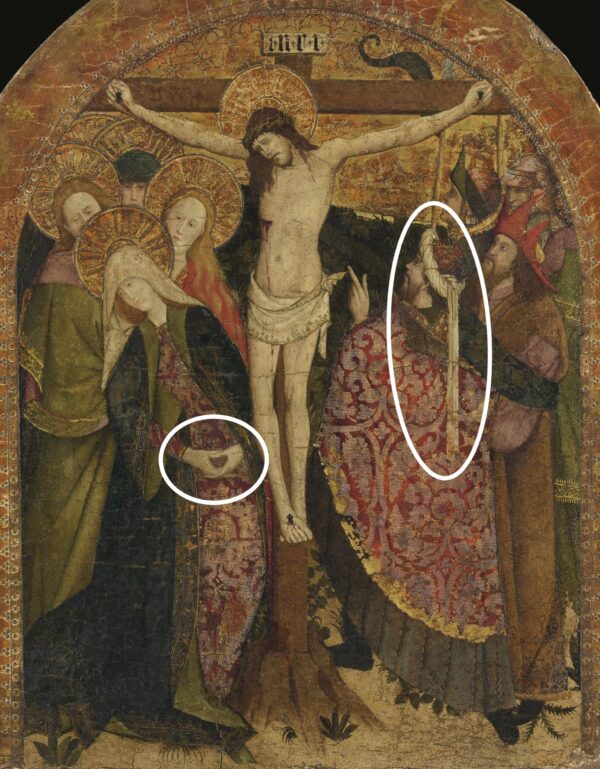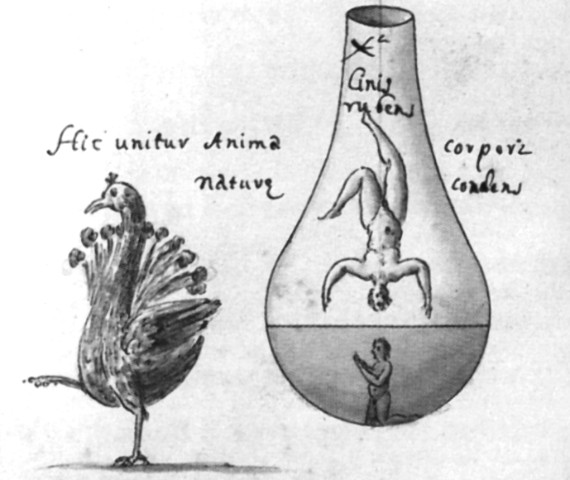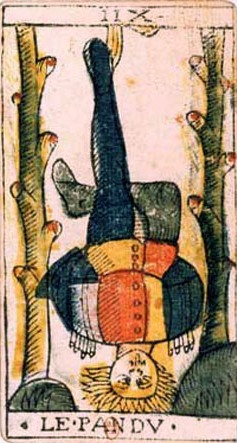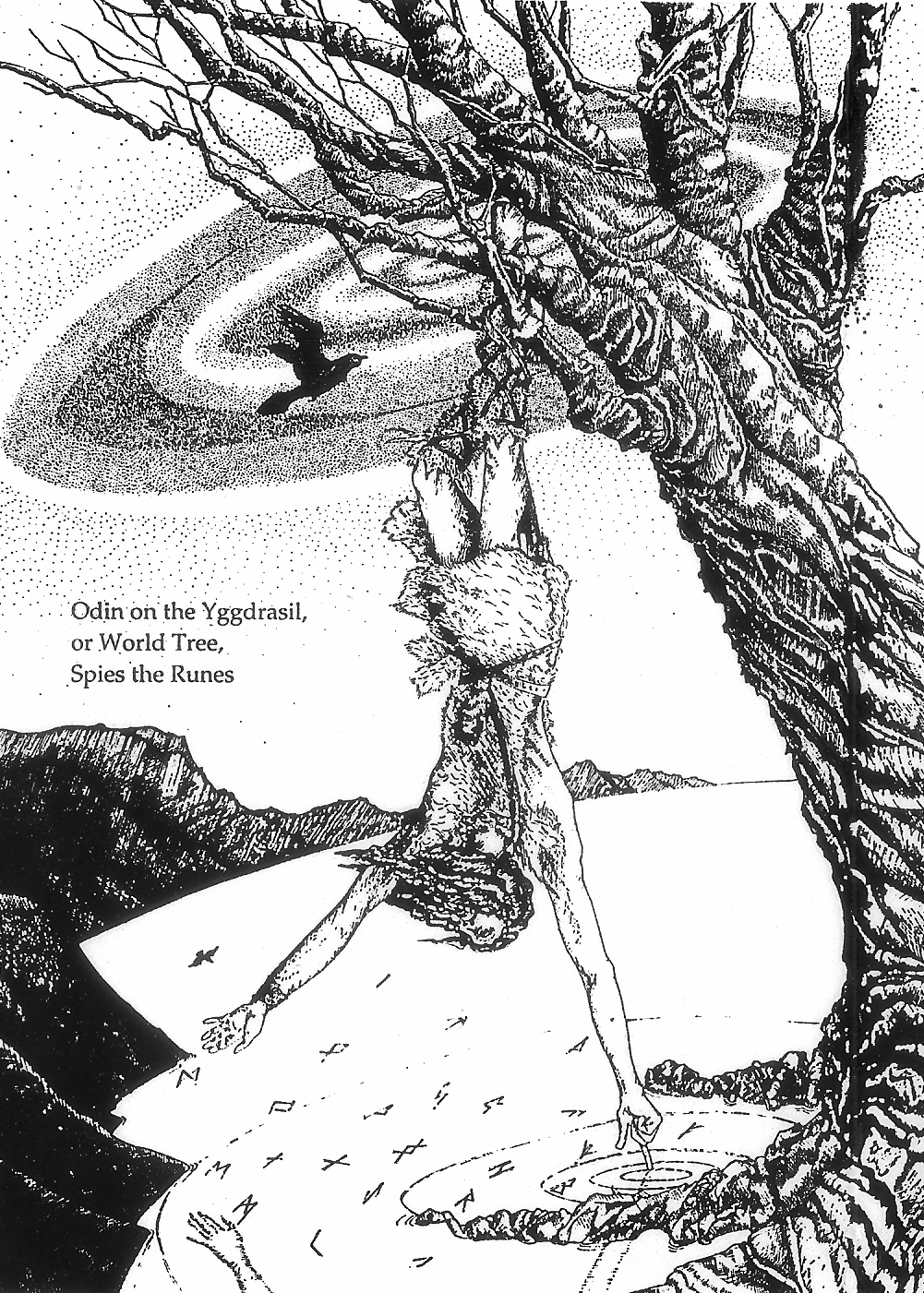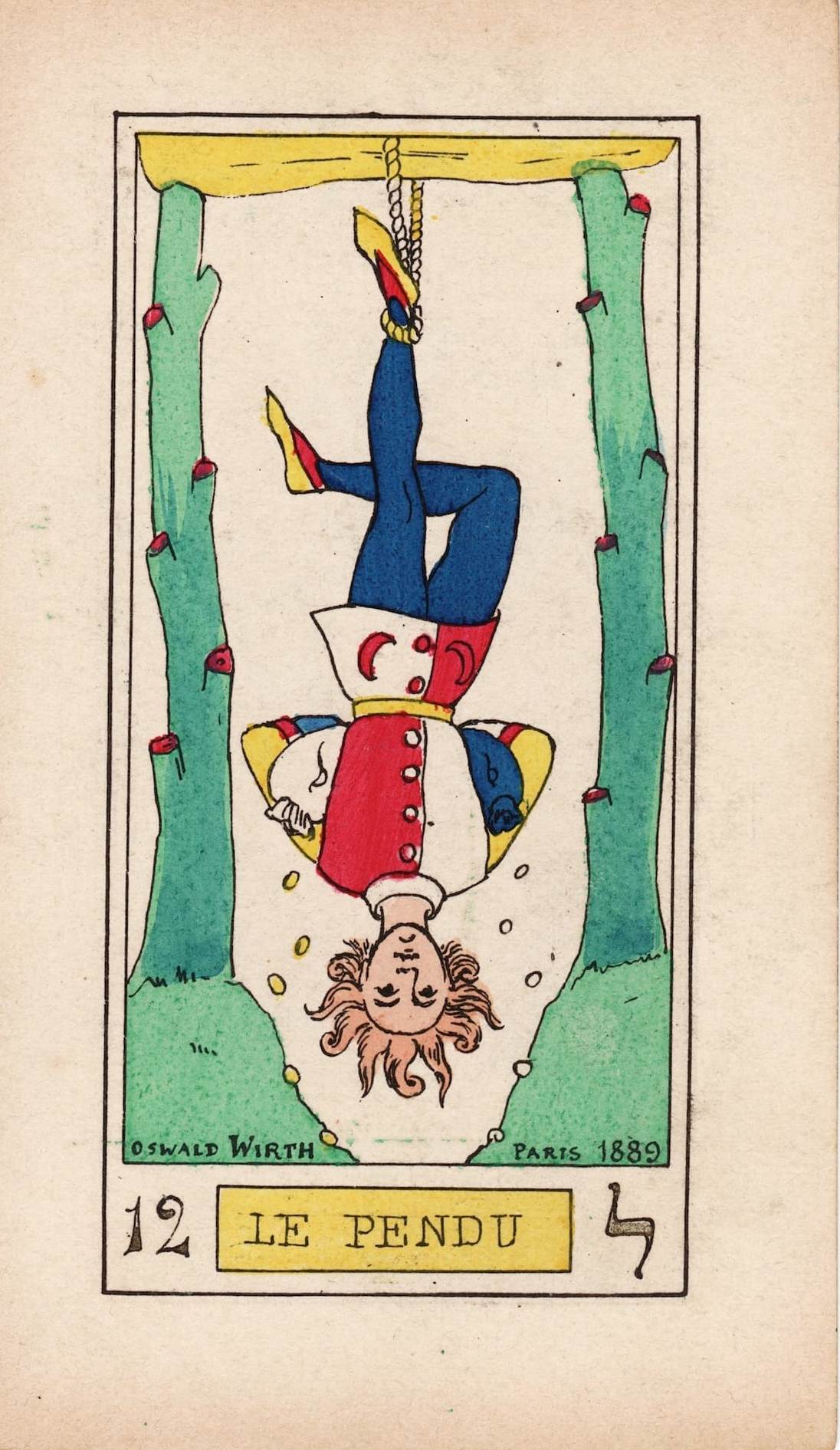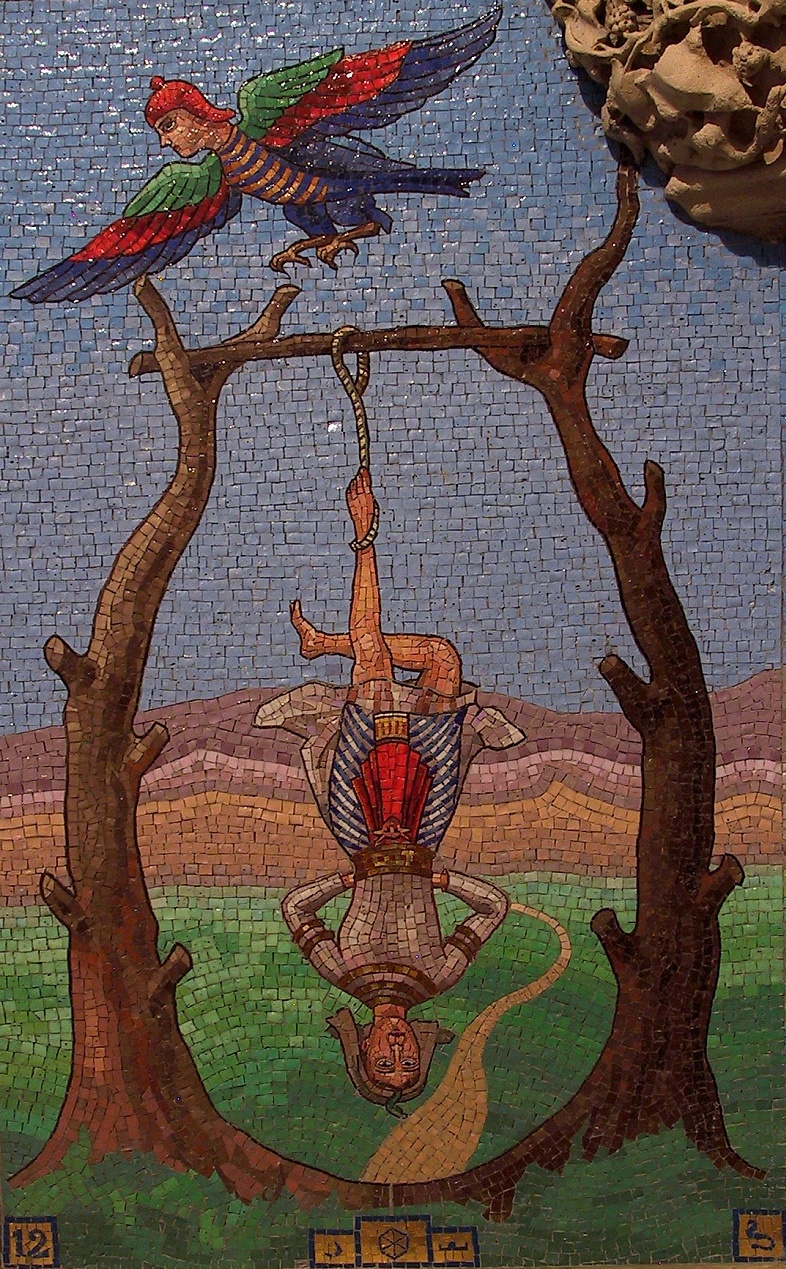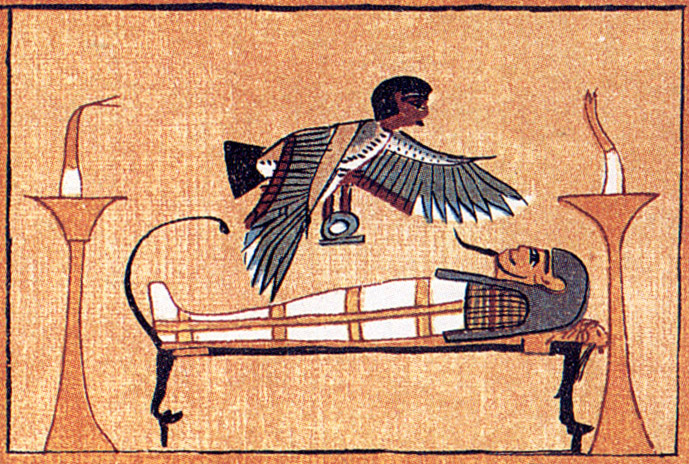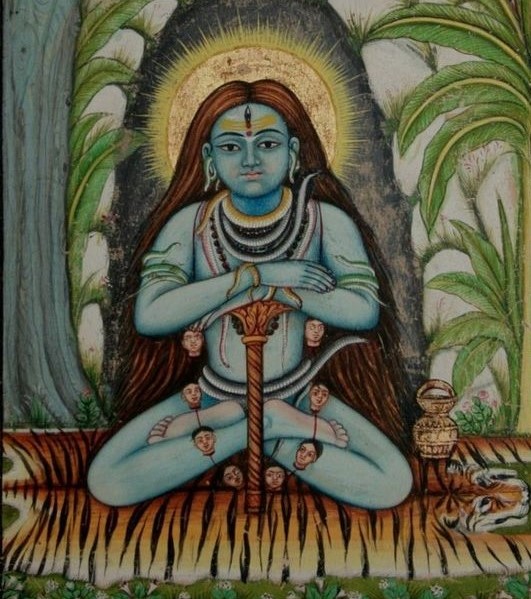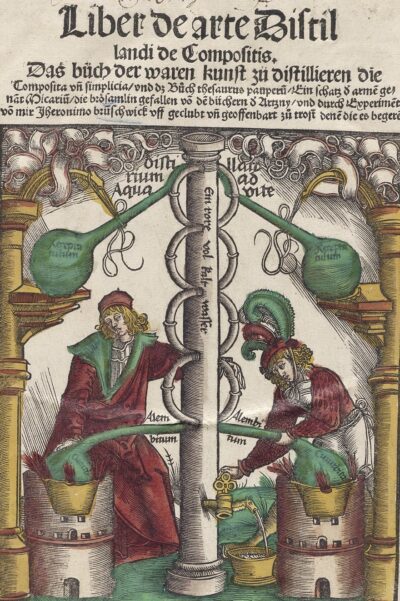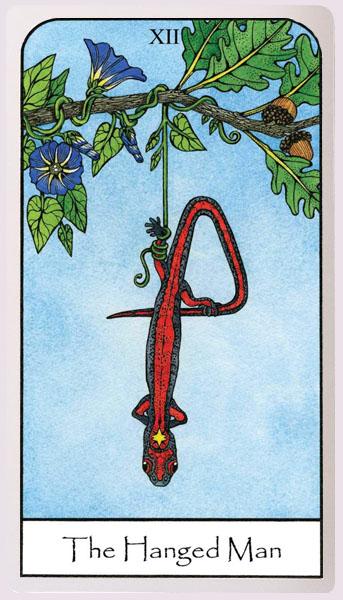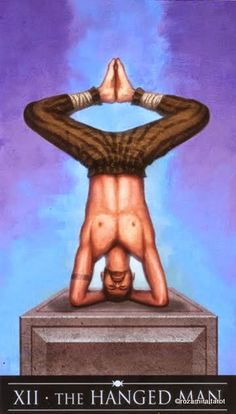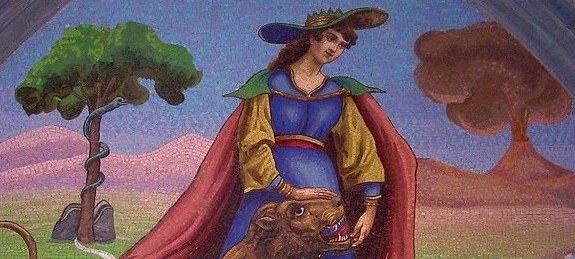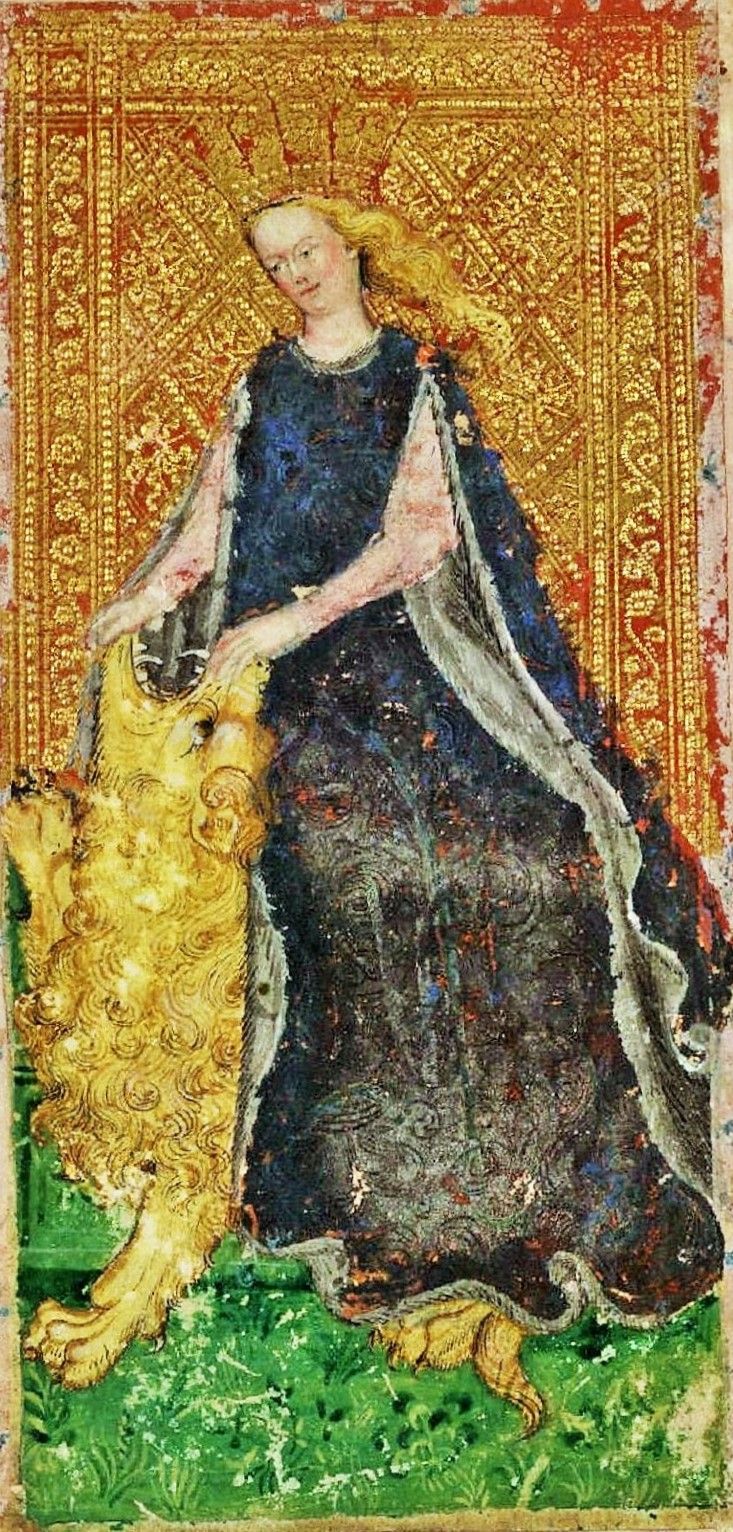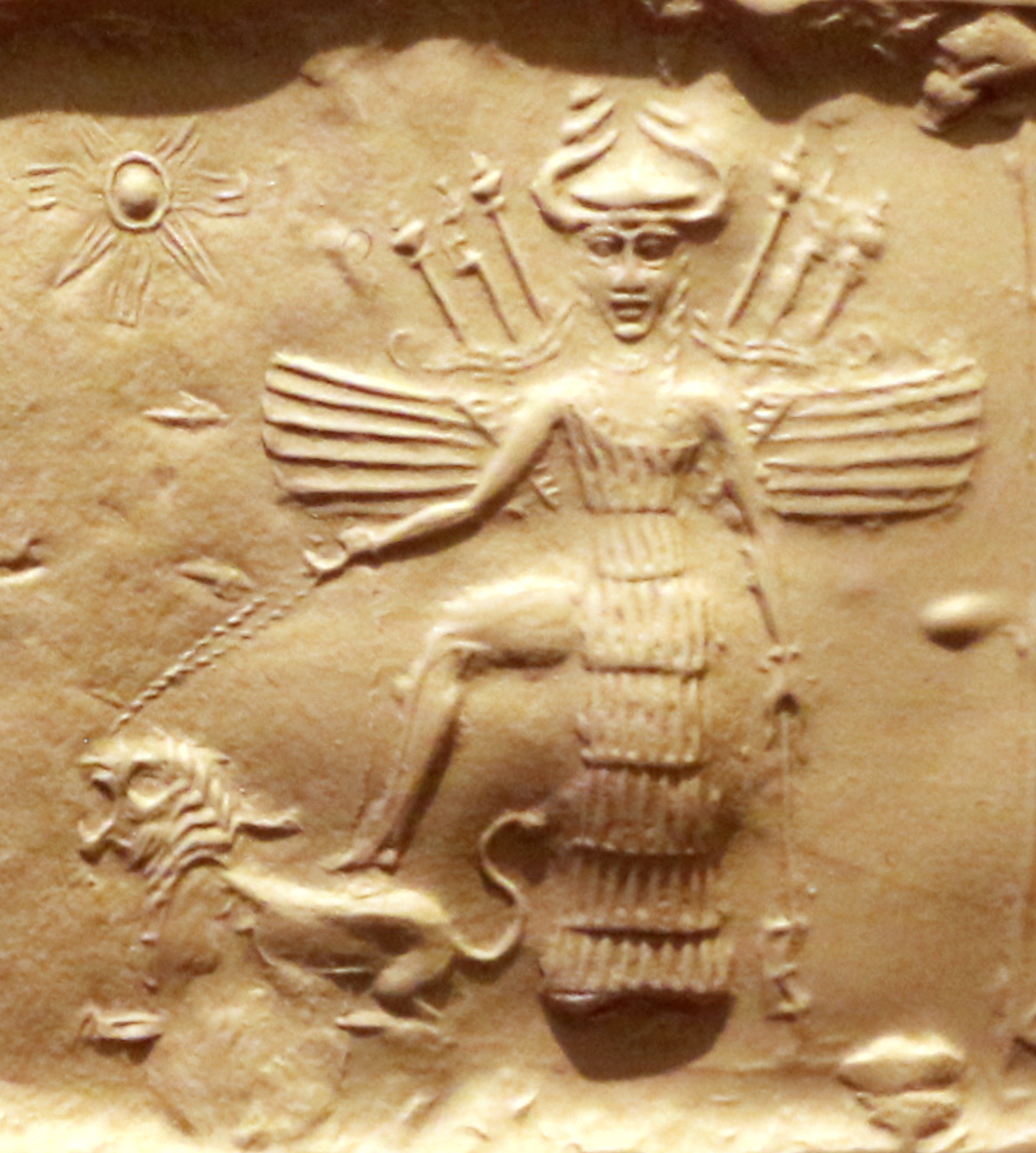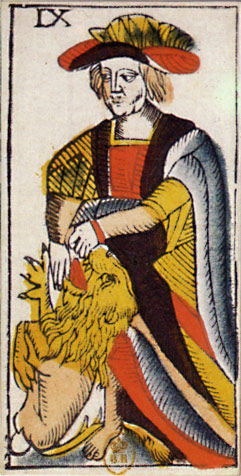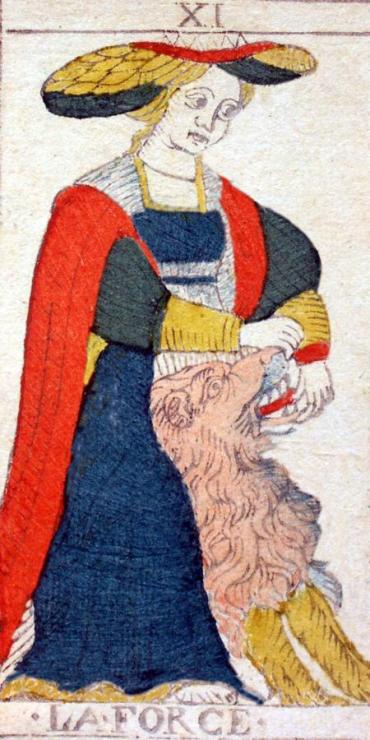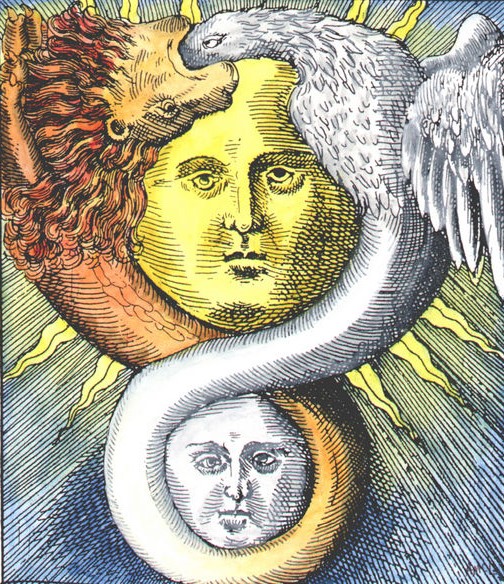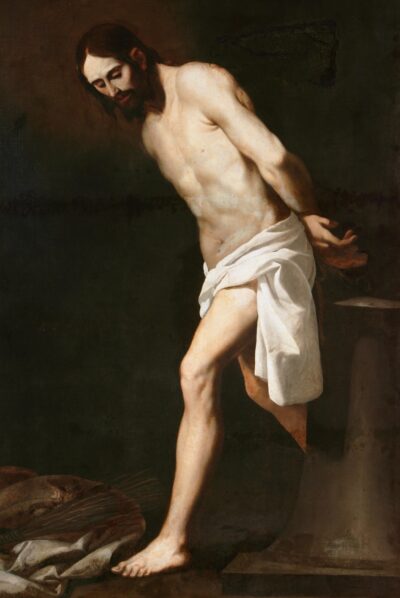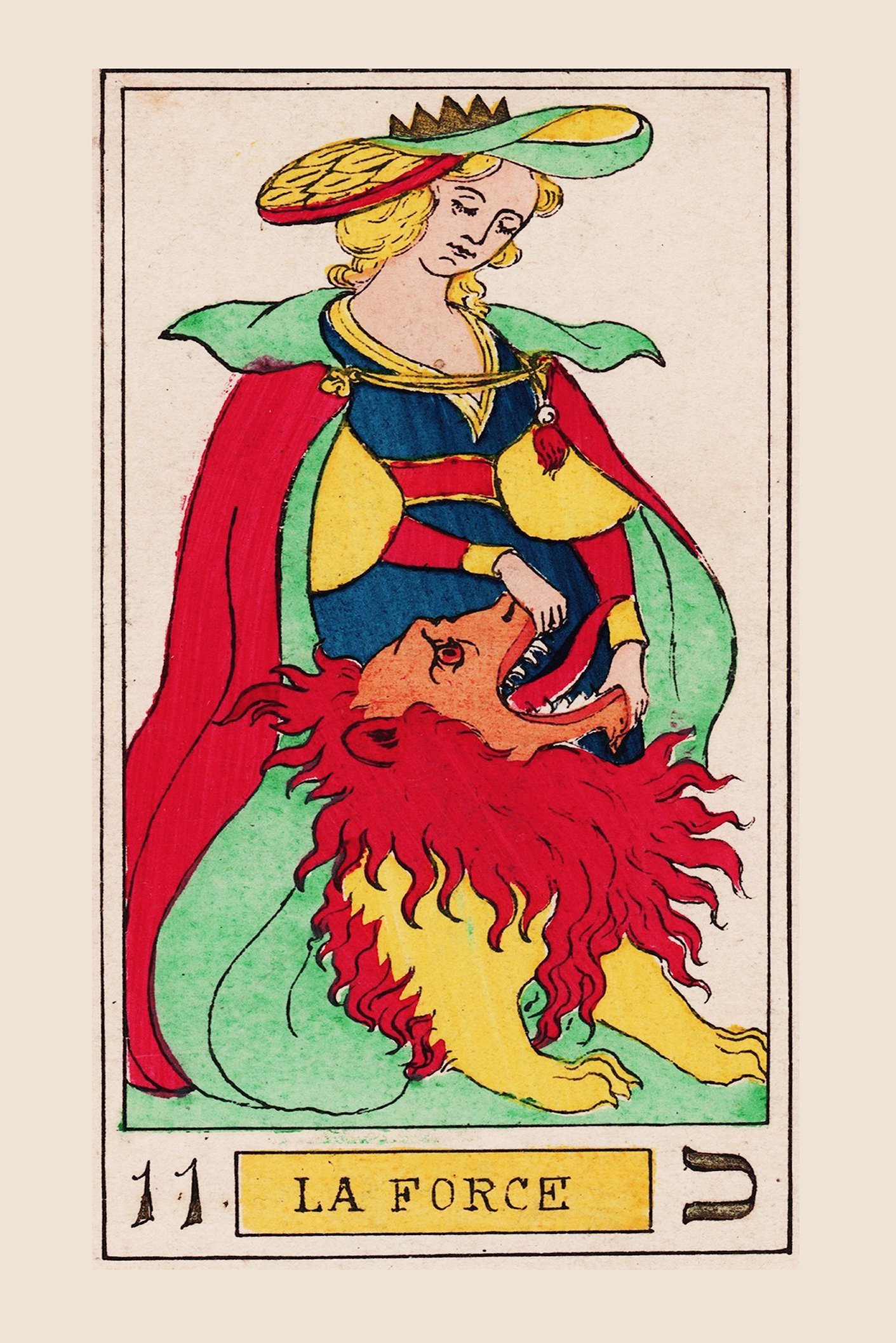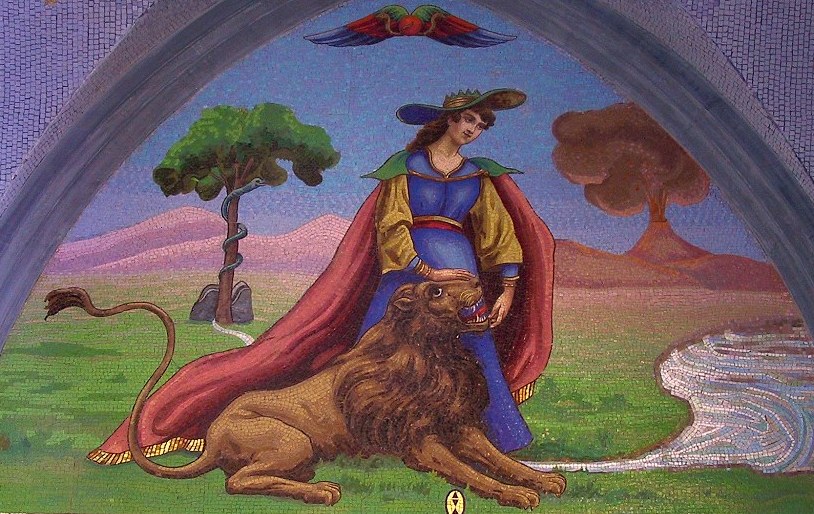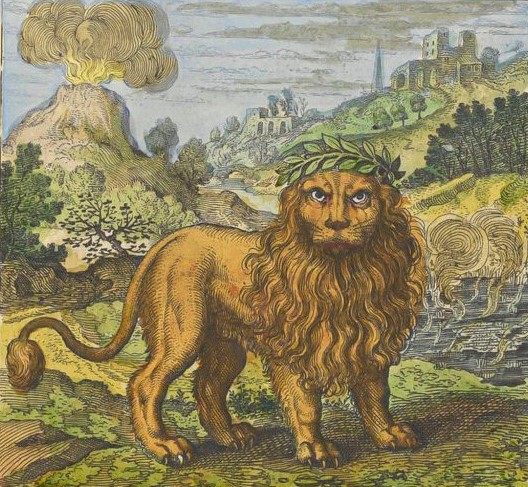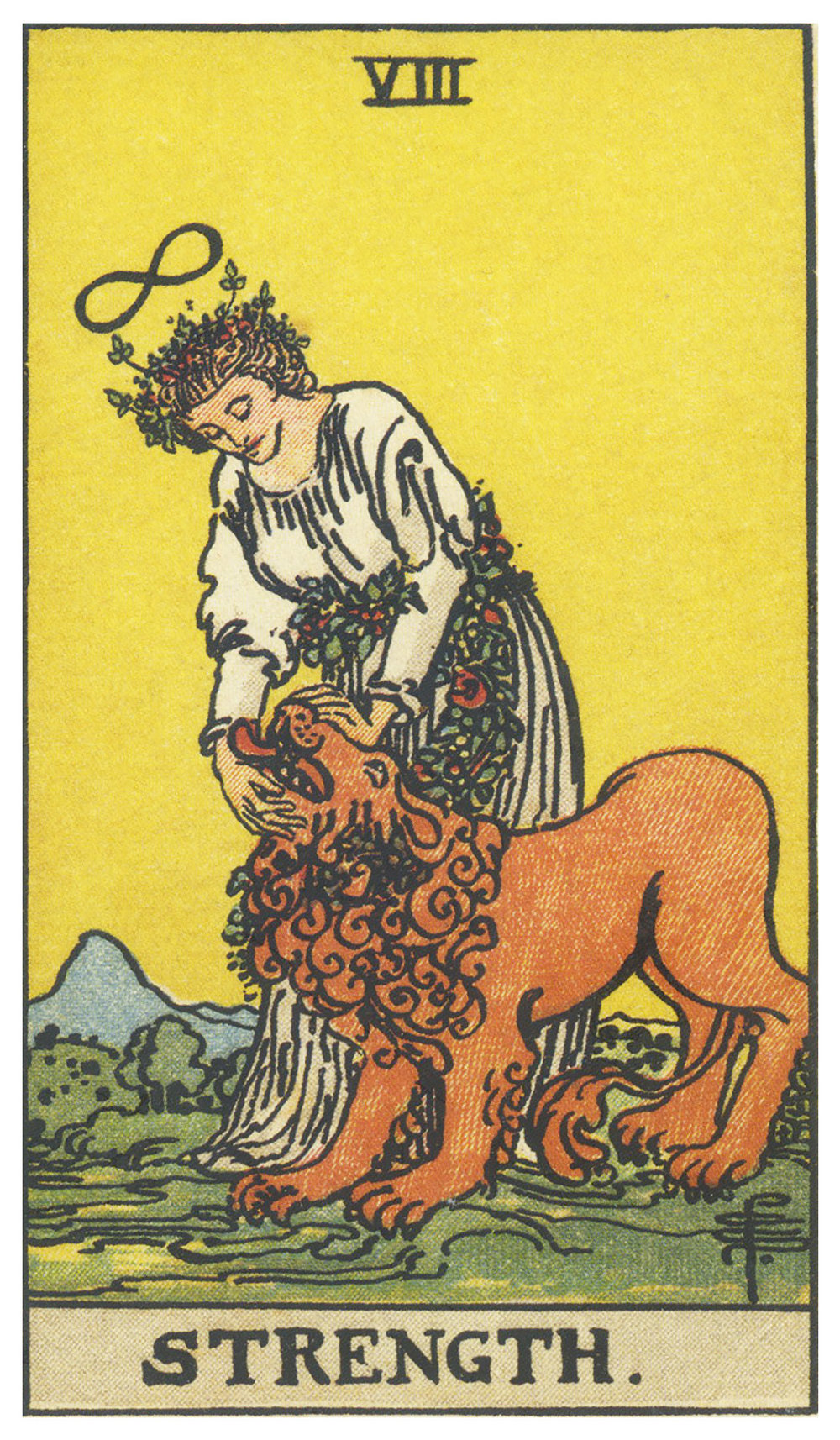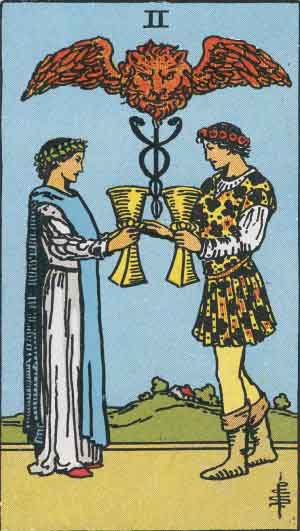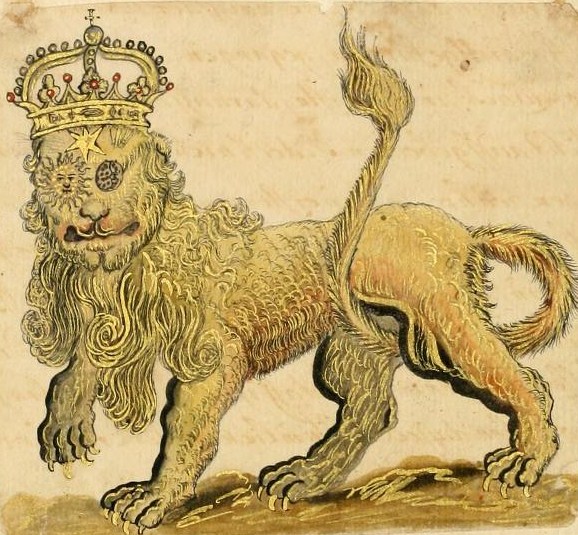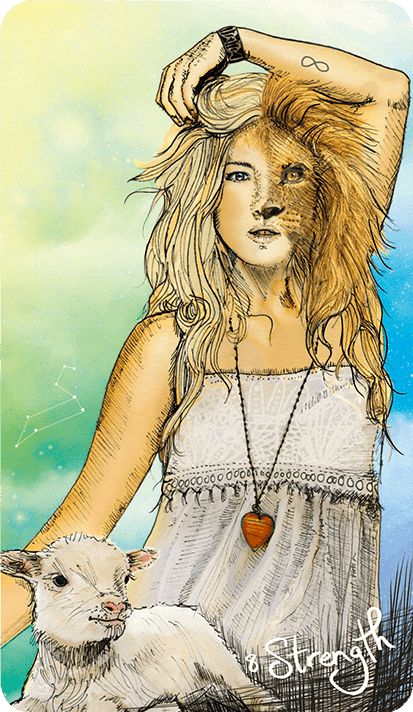Tarot 21. The World
21. The World
The theme of this tarot card is called in alchemy ‘the crowning of nature’: the divine rules over matter; the perfection of creation. Translated to man, he has ‘overcome’ the world and the beast within himself.The divine power active in the spiritual transformation process that is required to attain this, is personified in alchemy by, among others, Sophia (Wisdom) and the god Mercury with his serpent staff the caduceus. Christianity speaks of the Holy Spirit and the yogi calls it the kundalini-shakti.
From ‘THE CROWNING OF NATURE’ (Coronatio Naturae); an alchemical series of 67 illustrations, from the first half of the 17th century:
The tarot in the 15th century
On both 15th century tarot cards below – the Visconti Di Modrone deck and the Charles VI deck – we see Sophia ruling the world. How do we know this is Sophia? On the Visconti Di Modrone card (below left) we see a woman in the sky; this gives her a ‘heavenly’ status. In her left hand she has a crown and in her right hand a trumpet with wings. Tarot card 20. Judgment has taught us that a trumpet played by a divine figure (an angel or the god Mercury, for example) is a metaphor for the flow of the kundalini energy through the spine.
On the Visconti card, the trumpet is not only in the hands of a ‘celestial figure’, but also has wings. These represent the completion of the process of kundalini awakening, similar to the wings at the top of the staff of Mercury/Hermes (right).
Next to the Visconti card we see an alchemical image of Sophia (above right) with a number of attributes that refer to the activities of the kundalini energy, including a large S-shaped trumpet. The S shape ensures that the air flowing through it mimics the spiral movement of the kundalini. Sophia floats above a globe with a large serpent protruding it. This (kundalini) serpent rests also on the spine of the skeleton (the man who ‘died to himself’, the death of the ego) in the foreground.
The bottom half of the Visconti card features a rider on a horse. This man or woman wears a white tunic and red trousers. White and red are the colors that represent the polarities/duality in alchemy.
The color white of the horse refers to the purification of animal nature. Above the landscape with the horseman, castles, water and boats, a golden crown, symbol for ‘the crowning of creation’, stands out.
Read more about the symbolic meaning of a WHITE HORSE in the article: “The unicorn can be found in you!“
The card of the Charles VI, or Estensi, deck (right) contains an additional element that puts us on the trail of Sophia. The woman on the card has a black aureole, signifying that she represents one of the four cardinal virtues: Prudentia (Prudence, Wisdom), Justitia (Justice), Fortitudo (Strength), and Temperantia (Temperance).
The only one of the four virtues still missing from this tarot deck is Prudentia, wich is Latin for wisdom. The Greek word for wisdom is Sophia. In the Bible, Wisdom/Sophia is the name for the kundalini energy. For a substantiation of this statement, read my book “Mary Magdalene, the disciple whom Jesus loved.”
In the past centuries when ‘heretical’ spirituality could not be communicated without repercussions, artists incorporated alchemical and other forbidden esoteric knowledge into their paintings. For those who have an eye for it, there are works of art in all museums and churches with references to the process of kundalini awakening. Below are two illustrations of Prudentia that incorporate kundalini symbolism. The serpent is a standard attribute of Prudentia.
Another element on the Charles VI card that refers to a kundalini awakening is the green circle around the landscape of mountains and buildings. The extra wide border is a reference to the double circle, which in alchemy, as we saw with card no. 19 The Sun and card no. 20 Judgement, symbolizes the merging of the polar energies.
Right: the DOUBLE CIRCLE is an alchemical symbol representing the FUSION of the polar energies/ONENESS.
(Depiction of the ‘Philosophers’ Stone’ from ‘The Tenth Key’, Basilius Valentinus, 1599)
The mountains on the Charles VI card represent expanded consciousness and the red castle-like buildings refer to the Kingdom of God. The color red in alchemy represents the completed Magnum Opus (process of God Realization). The circle with landscape and woman are situated in the clouds. This is a confirmation of the above interpretation.
This illustration from the MAGNUM OPUS contains three references to the merging of the polarities: ANDROGYNY (both male and female), the WHITE AND RED (click here) wing, and the DOUBLE CIRCLE (click here) with one ring of GOLD and one of SILVER. In the middle of the circle we see a LANDSCAPE, comparable to tarot card The World. (Splendor Solis, emblem 9, 1582.)
The first printed tarot cards
Of the very first printed tarot decks, only a few uncoloured, uncut printed sheets have survived. One is the Rothshield sheet from circa 1500 (right). Sophia is replaced by the god Mercury. The scepter and orb in his hands must tell us that he rules the world, which is here represented by a double circle with a victory wreath and the four elements in it.
These four elements can also be interpretated as the four aspects of man. The element earth then stands for the body with the animal instincts; the element of water for the emotions; the element of air for the mind, and the element of fire for our spiritual core, or soul.
The choice of Mercury for the Rothshield deck was apparently not a one-off whim, as a century later we find the same scene on the Tarot of Bologna (far right). The scepter has now been replaced by Mercury’s standard attribute: the caduceus.
Click here for the CADUCEUS as a symbol referring to the KUNDALINI PROCESS of JESUS in Christian art
In alchemy, Sophia and Mercury represent respectively the female and male pole of the divine. Together they are responsible for the transforming (kundalini) fire in the process of the Magnum Opus. In the illustration below, on the left, Mercury and Sophia both hold a torch under the alchemist’s flask (which represents the alchemist himself).
MERCURY and SOPHIA represent in alchemy the male and female poles of the divine (in man). We can conclude this from: 1. the TWO COLUMNS OF SMOKE that come together, 2. Mercury stands on the EARTH and Sophia on the WATER, 3. the shell with WATER of Mercury and the FIRE Torch of sophia. (Les Rudiments de la Philosophie Naturelle, Nicolas de Locques, 1665)
De Tarot of Marseille
The Tarot of Marseille is a collective term for tarot decks from a certain area in a certain time period. The cards are made in a recognizable style, but each designer was free to work out the details as they saw fit. It is precisely these differences that can help with understanding the symbolism of the cards.
On the right is depicted the (probably) oldest Tarot de Marseille The World. The printing year is estimated at circa 1600. We see a naked woman (one breast is still visible) wearing a cloak, and an almond-shaped garland surrounding her. In the corners of the card are depicted, clockwise: an angel, an eagle, a lion and a bull. They originate from the vision of the prophet Ezekiel in the Old Testament, in which four living creatures are described with four faces: a man, an eagle, a lion, and an ox. (Ezekiel 1:5-15)
In the book of Revelation, the apostle John sees in his vision the same beings around the throne of God:
And before the throne there was something like a sea of glass, like crystal; and in the center and around the throne, four living creatures full of eyes in front and behind. The first creature was like a lion, and the second creature like a calf, and the third creature had a face like that of a man, and the fourth creature was like a flying eagle. And the four living creatures, each one of them having six wings, are full of eyes around and within…” (Rev. 4:6-8)
In the Christian tradition, these animals have come to symbolize the four evangelists, and that is how they are usually interpreted on tarot card The World. However, their meaning goes much deeper. Ezekiel gives an important clue: what he sees are creatures with four faces. These four faces represent the four aspects of man: the mind (eagle), the feelings/emotions (lion), the body with animal instincts (ox), and the soul (human face). It is these “layers” of man that are transformed during the process of spiritual awakening. Head (thinking), heart (feelings) and belly (instincts) must be freed from the animal drives that every human being possesses.
Read more about the SYMBOLISM in the BIBLE in my book Mary Magdalene, the disciple whom Jesus loved
On a side note, both prophets see a face of a man and not of an angel. The fact that in the iconography, and also on this tarot card, usually an angel is depicted, next to an eagle, a bull, and a lion, is probably because of the wings that the creatures in the two visions have.
The almond shape of the victory wreath on the Tarot of Marseilles card is a reference to the vesica piscis: a universal symbol for the merger of the opposites/duality. The almond shape has also been used in Christian art to communicate that Jesus had gone through a kundalini awakening.
In the fresco below, Jesus makes the sign of the sacred marriage (2 fingers together, 2=1). It is exactly placed on the almond-shaped lines. The eight-pointed stars surrounding Jesus are also an ancient symbol for the kundalini energy.
Jacques Viéville (left) has placed a male figure at the center of his card. The scepter in his hand, which symbolizes the spine with the kundalini energy flowing through it, is appropriately placed at the level of his crotch/pelvis.
The colors red and blue of his cloak are the classic colors for the masculine and feminine respectively, and refer to the fusion of opposites. The same applies in alchemy to the colors gold and silver (sun and moon) of the wreath of victory. The aureole represents an open crown chakra: the kundalini process is completed. His nakedness symbolizes devineness.
The animals around him refer to the mastering of his animal drives. This becomes even clearer when we place the card from the Etteilla III deck, from 1870, next to it (below left).
The man on the Etteilla card has a club instead of a scepter in his hand. We can safely assume that he has used it to conquer the four animals on this card, that are part of his inner world. The ouroboros around him is a symbol of inner oneness, just like the vesica piscis.
The victory over the animalistic drives is also incorporated in the remarkable and revealing painting, above right, of Christ. He sits on top of the animals that represent the evangelists in the iconography. An unusual scene. The bull, which of the three animals specifically symbolizes the sexual urges, has been placed by the artist between the legs of Jesus. The color red (passion) of the bull enhances its symbolic significance. An angel holds two fingers of the left hand of Jesus together: the sign of the sacred marriage, which represents the fusion of opposites (2=1).
Francois Chosson opted a woman for his card (right). She has remained the archetype on most decks in the centuries following.
This woman can be interpreted on two levels. You can see her as a personification of the soul (usually seen as feminine) of the person who has conquered the world and him-/herself. She is also Sophia, God the Mother, the kundalini-shakti; the active force that has brought about the transformation process in man.
The woman has a stick in both hands. These are the two opposites from which all creation is built (good/evil, light/dark, male/female, etc). This interpretation is confirmed by the alchemical illustration below (left) in which Sophia is also depicted with two sticks. In line with the sticks we see two trees with dualistic characteristics: the sun and the moon, and the colors red and white, which in alchemy represent the opposites. The gold-colored phoenixes on both trees symbolize spiritual rebirth.
In four different ways, Francois Chosson communicates that the opposites have fused on his tarot card: the vesica piscis shape of the wreath of victory; the infinity sign that fastens the two halves of the wreath together; the colors blue and red of the scarf around the woman’s body, and her posture: she stands on one leg.
The symbolism of one leg (sitting, standing, or hanging) as a reference to inner oneness we also saw in tarot card nr 4 The Emperor, nr 11 Strength, and nr 12 The Hanged Man. This symbolism has also been used extensively in Christian painting to communicate in a veiled way that Jesus had experienced a kundalini awakening. Below, on the right, an example.
Only ONE LEG of Jesus is visible. The colors BLACK, WHITE, YELLOW AND RED refer to the four phases of the MAGNUM OPUS (click here). (Giuseppe Cesari, early 17th century)
The Oswald Wirth Tarot
Oswald Wirth’s card (right) contains few new elements. The woman now holds the two sticks in one hand, enhancing the image of a fusion. The sticks have a red and a blue button, the classic colors of the masculine and the feminine. This confirms that the sticks represent the polar energies.
The mosaics of Château des Avenières (below) are based on Oswald Wirth’s deck. The designer has placed back the aureole above the animals that Oswald Wirth had left out. You can take the aureoles as a reference to the four evangelists. You could also interpret it as a sublimation/deification of the animal drives.
The woman’s long reddish-brown hair is often seen in depictions of Sophia and refers to the fire of the kundalini energy.
The sun above the wreath of victory has a red core and a yellow/gold border. This is a reference to the double circle (oneness) and the Magnum Opus (the colors gold and red).
Gaining mastery over our animal instincts is an important theme in many spiritual traditions. A lion represents our emotions, a bull our sexual urges, and a bird (often an eagle) our mind. On the right and below three examples. Right: the carriage of the Greek god Dionysos is drawn by a bull, an eagle and a leopard. Below on the left we see the Hindu goddess Durga, sitting on her mount, a lion, and with her feet on a demon with the appearance of a bull. She is a complete master of both. Below on the right the Egyptian god Horus is depicted sitting on a cow, or bull, and two lions. The ouroboros surrounding him is a symbol of (divine) oneness.
The Rider-Waite-Smith Tarot
Designer Pamela Colman-Smith testifies to Bible knowledge, because in the upper left corner a human head is depicted, instead of an angel. She also understood well what the woman on this card represents. The scarf that is wrapped around her body is very long and evokes associations with a serpent.
A long scarf to refer to the kundalini energy is also used in alchemy. In the emblem below we see Sophia showing an alchemist the road (with serpents) to the inner fire. Her scarf also looks like a rising serpent.
SOPHIA showing an alchemist the road (with SERPENTS) to the INNER FIRE. (Freymaurerische Versammlungsreden der Gold und Rosenkreutzer des alten Systems, 1779)
Conclusion
Mankind sees itself as the crown of creation, but in the eyes of God we are not finished yet. The spiritually unconscious living person is seen as ‘sleeping’ or ‘dead’ in the Bible, and many other sacred scriptures.
In our pelvis dwells a divine potential that enables us to take the next step in evolution. An energy source that, once awakened, initiates a process of purification and healing: the preparatory work for a spiritual rebirth and union with our Creator.
We are called to overcome our animalistic, lower nature, in order to realize our higher nature. This is beautifully depicted on the alchemical emblem on the right. The temptations of the world and our desires (lust) are like a burning fire that can consume us and make us slaves to our senses and lower belly.
In the illustration, Sophia urges the warrior (the alchemist) to fight against this fire, which can only make us happy temporarely. She gestures with her hands that we should raise the divine fire, which she personifies, from our sacrum to the crown.
This is the theme of the entire Major Arcana of the tarot, already as far back as the 15th century, and this last card The World represents the completion of this process of spiritual rebirth. It is a long, hard road, but you are assisted by God and his angels. In the Bible, Jesus, who himself also experienced a kundalini awakening, says to his disciples:
“You shall have suffering in the world, but take heart,
I have overcome the world.”
(John 16:33)
Read about the SYMBOLISM in the BIBLE in my book Mary Magdalene, the disciple whom Jesus loved
The Green Witch Tarot (Kiri Leonard, 2014)
The world tree, or tree of life, is an archetype found in many spiritual traditions and is a metaphor for a kundalini awakening. According to the Norse myths, between the roots of the world tree Yggdrasil the (kundalini) serpent Nidhogg resides. The Ibis was a sacred bird in Ancient Egypt and was associated with wisdom.
Tarot of the 78 Doors (Antonella Platano, Pietro Alligo, 2005)
In alchemy, red is the color of the completed Magnum Opus. So the color red of the bloodied baby is very appropriate.
Tarot of Musterberg (Cesare Asaro, 2015)
The paper with text on it refers to Sophia (Wisdom). The two water streams represent the polar energy channels. Sophia is the energy channel in the middle that flows through the spine. The eight-pointed star is also a kundalini symbol, see tarot card The Star.no. 17
Tarot of Jane Austen (Diane Wilkes, Lola Airaghi, 2006)
The Sacred Marriage and the Divine Child. Red and white flowers, the colors of the polar energies in alchemy.
This article was written by Anne-Marie Wegh. Copyright August 2021.
Anne-Marie Wegh is the author of the book: John the Baptist who became Jesus the Christ

Illustrations from the tarot decks, reproduced by permission of U.S. Games Systems, Inc., Stamford, CT 06902. c. by U.S. Games Systems, Inc. All rights reserved.
Foto’s Châteaux de Avenières: http://hermetism.free.fr/Avenieres

